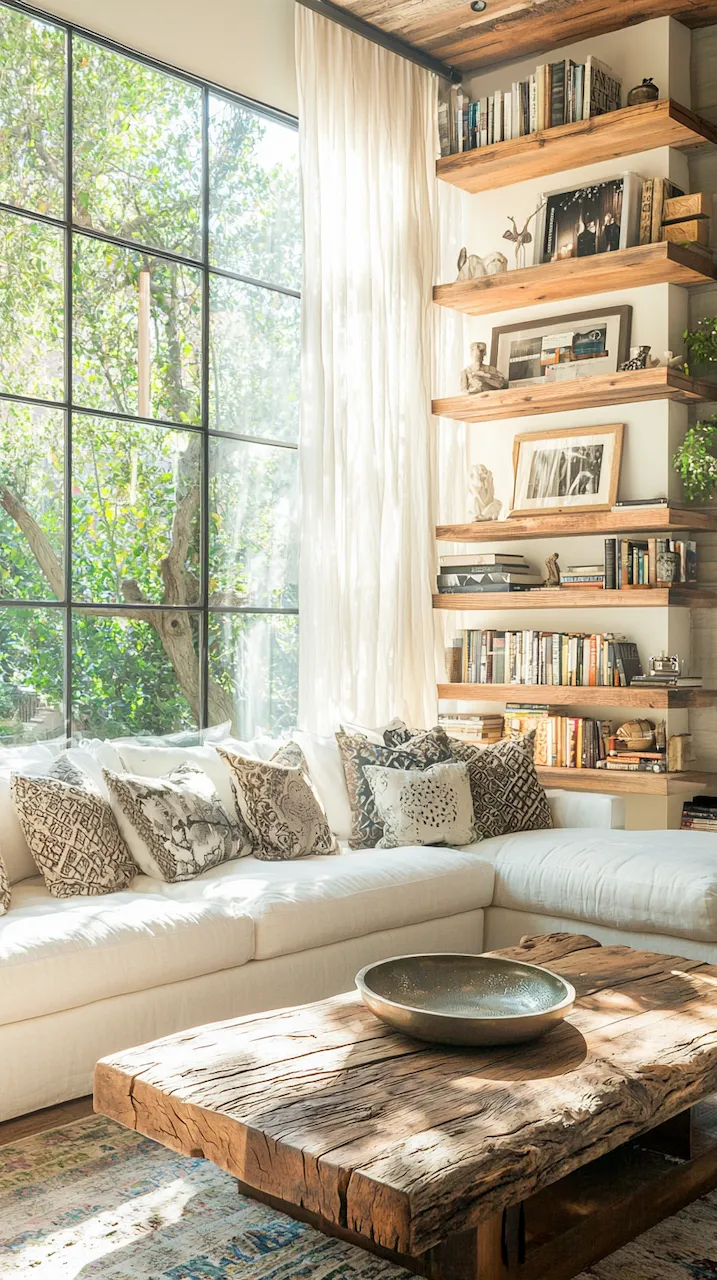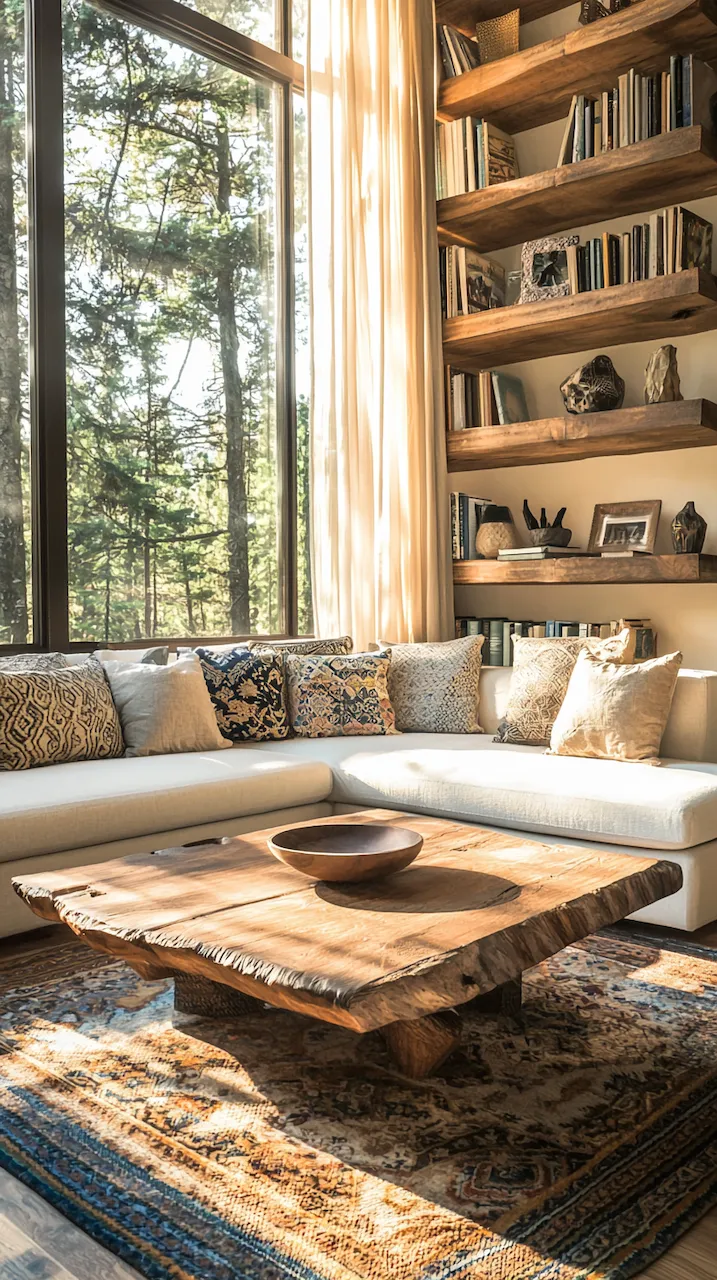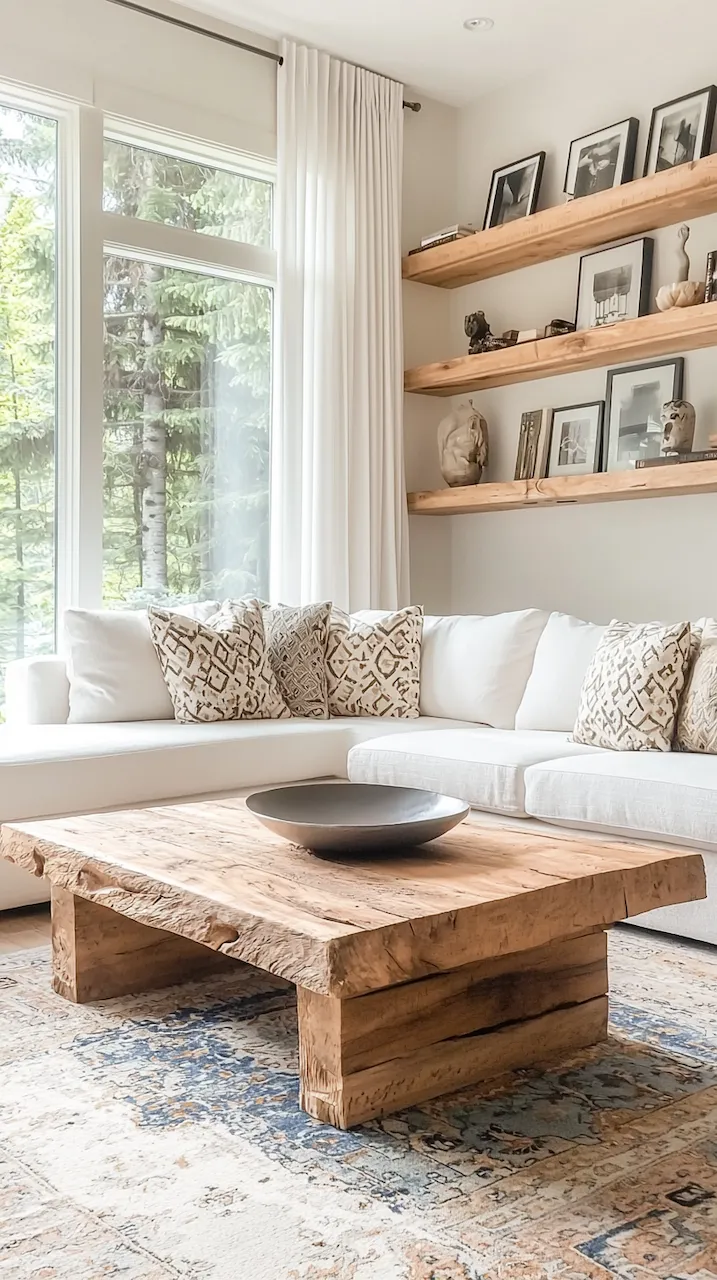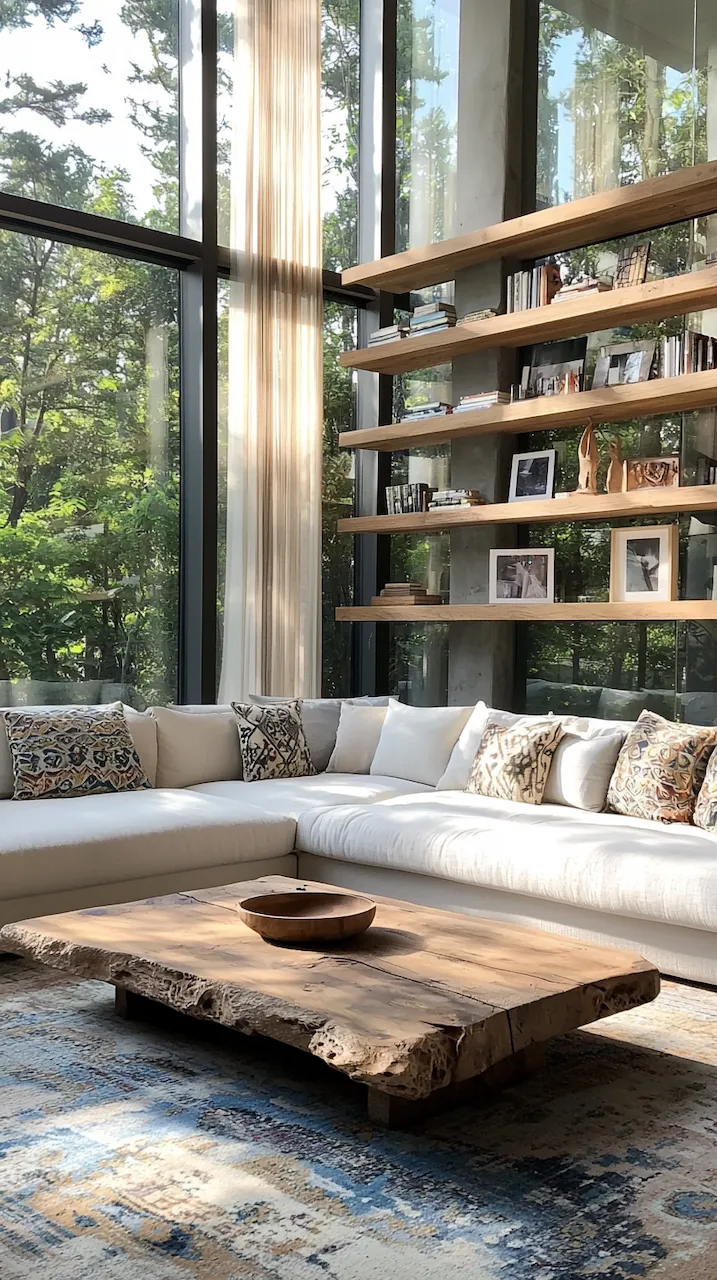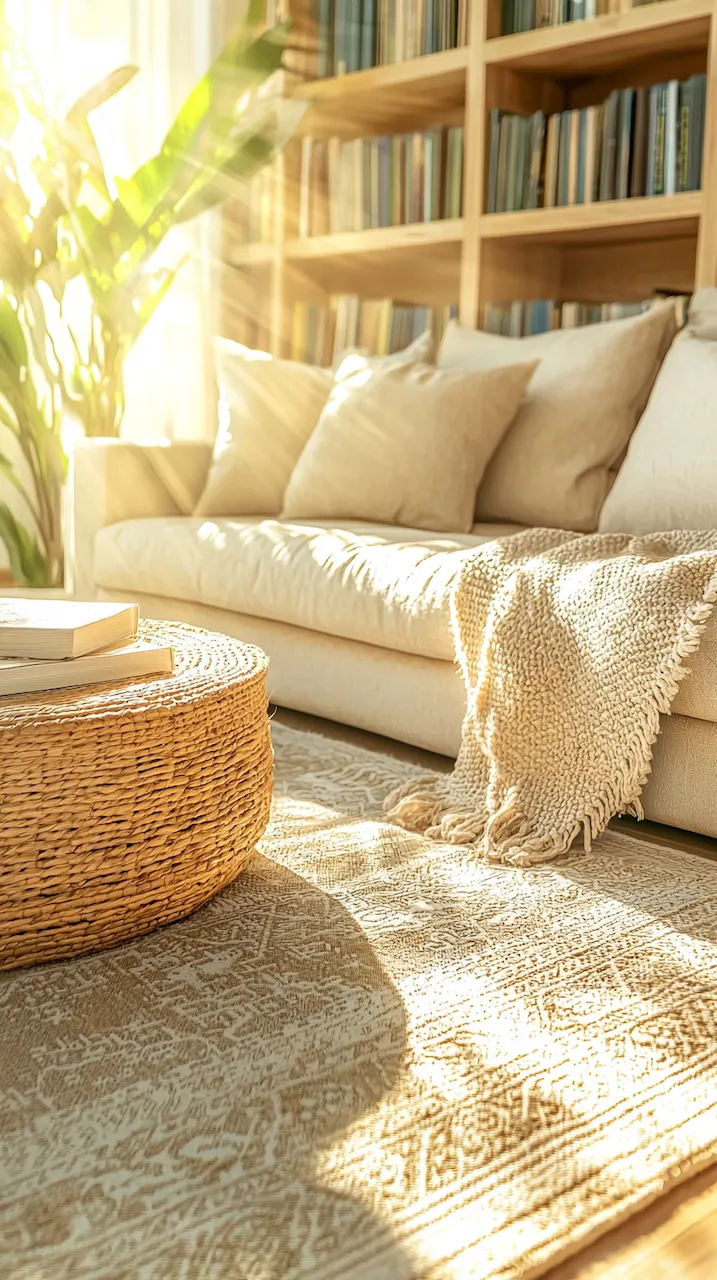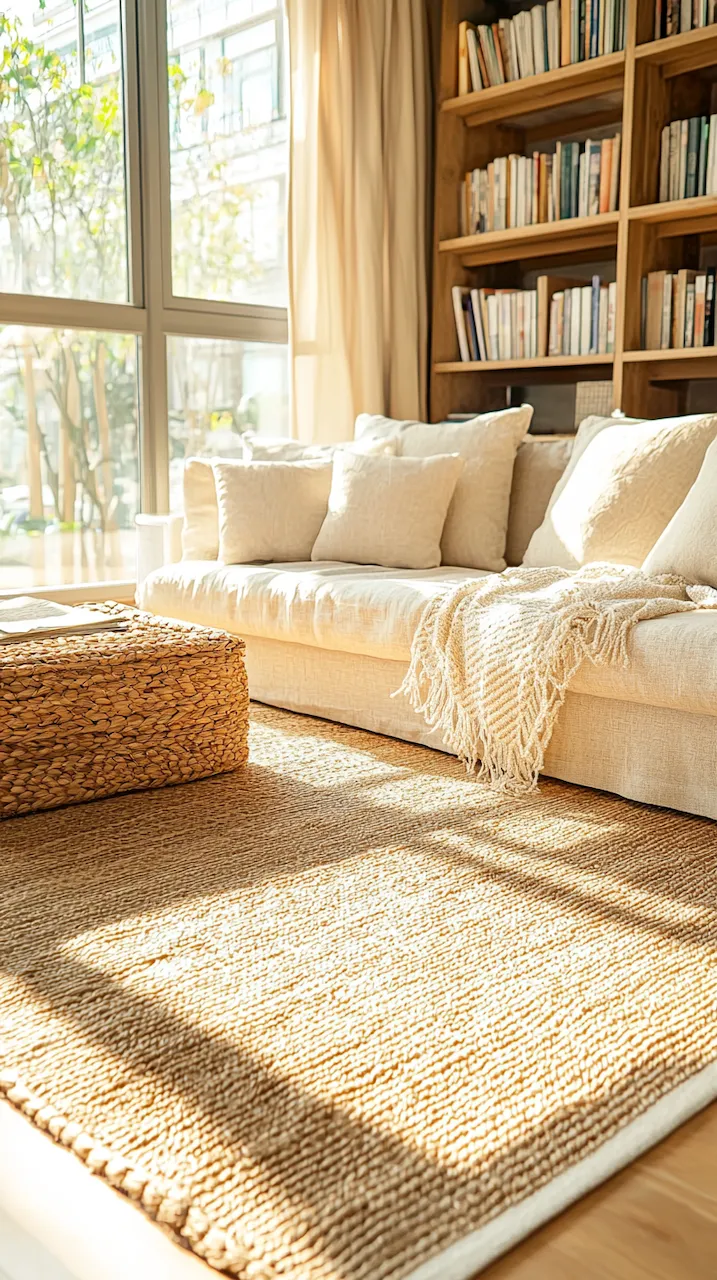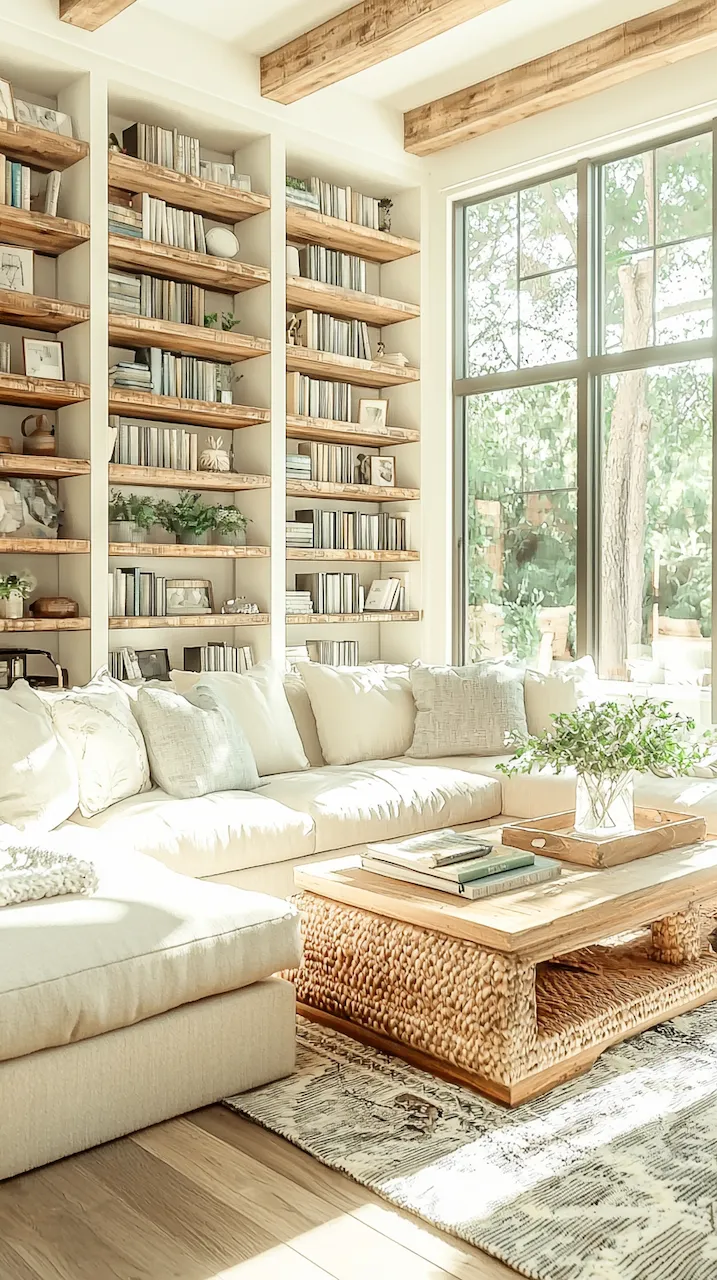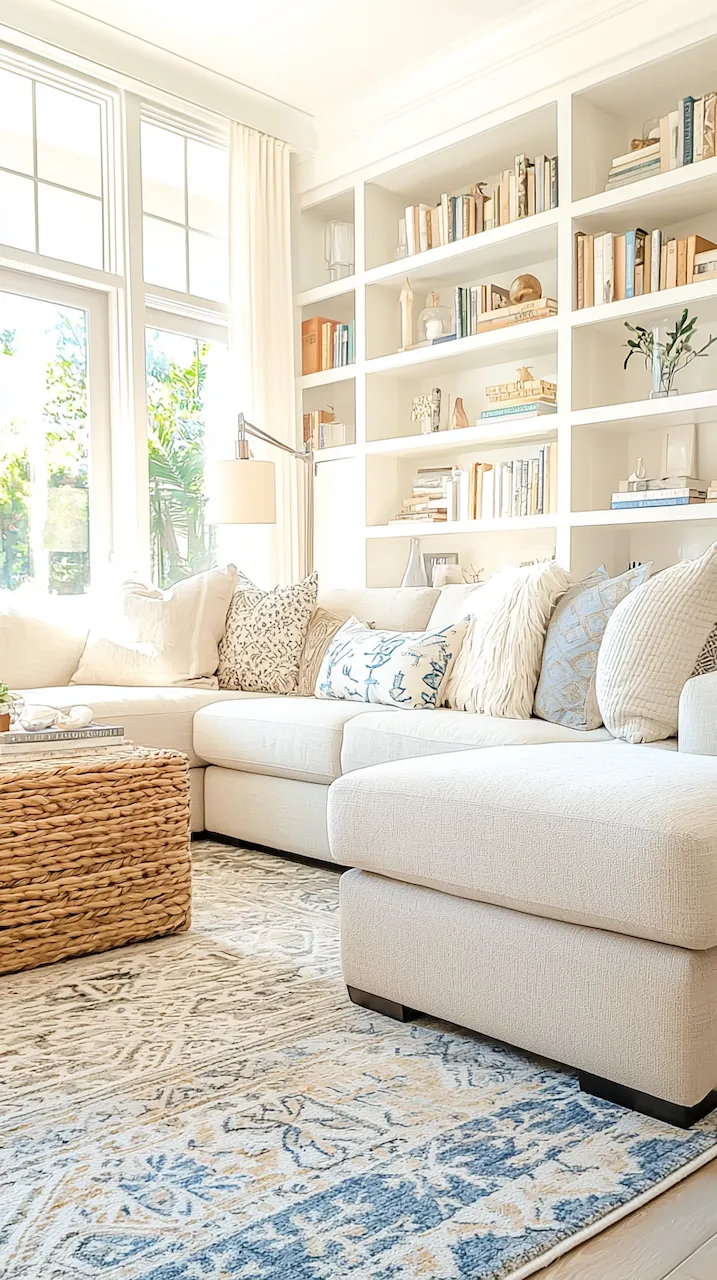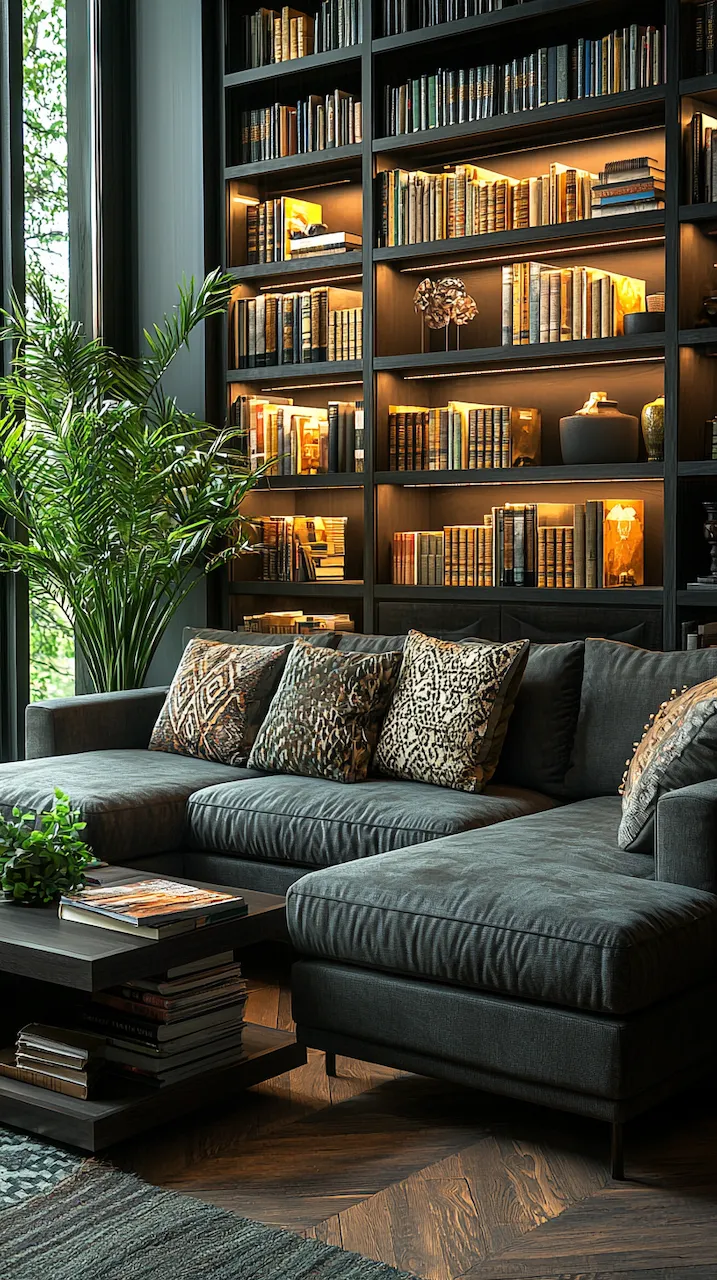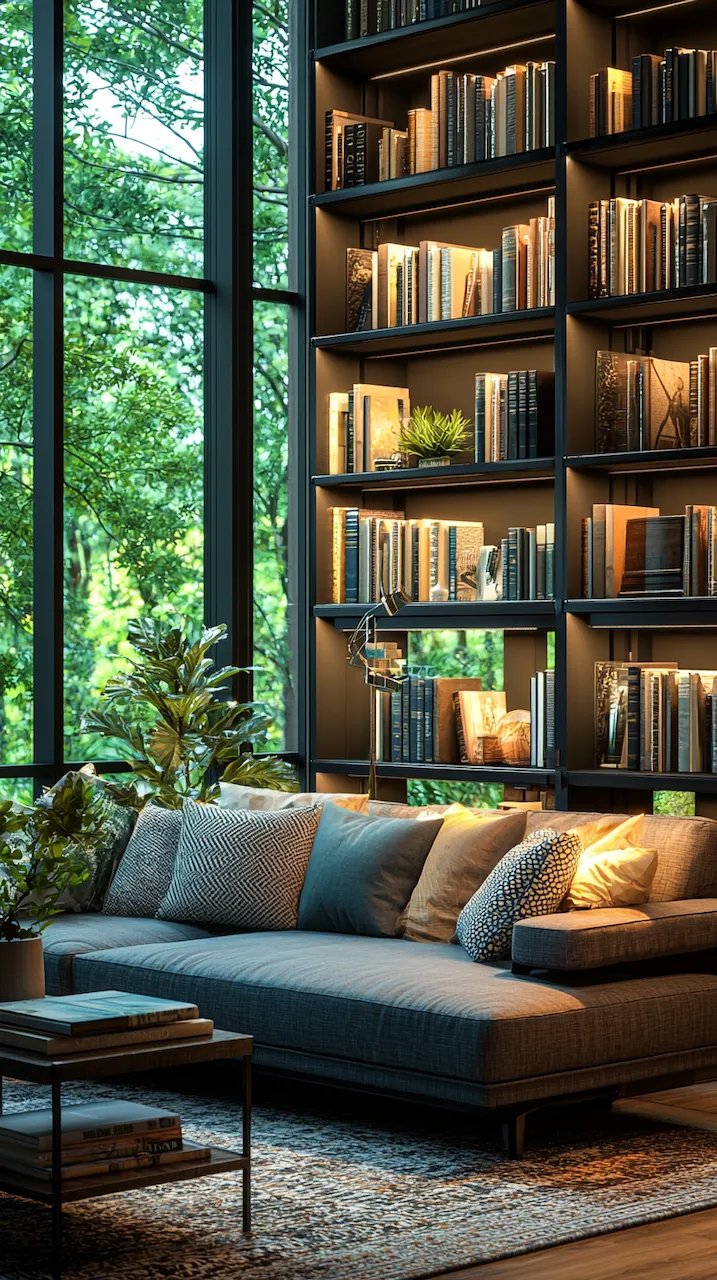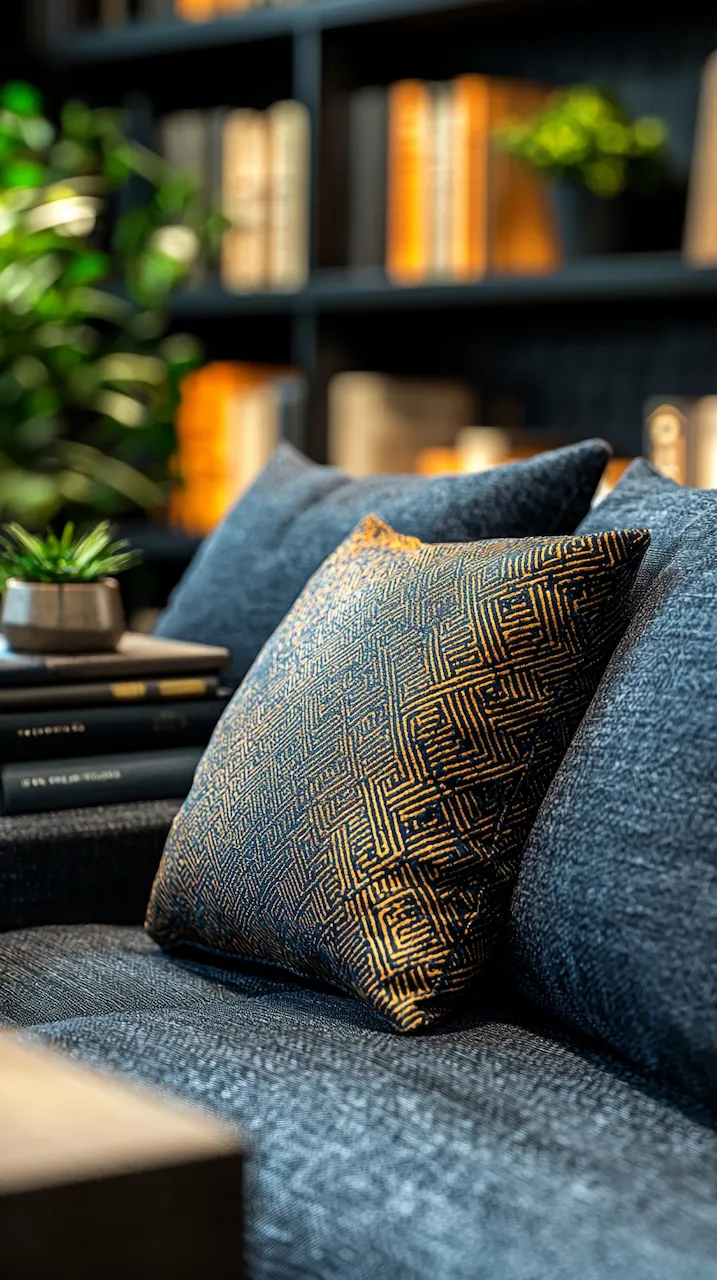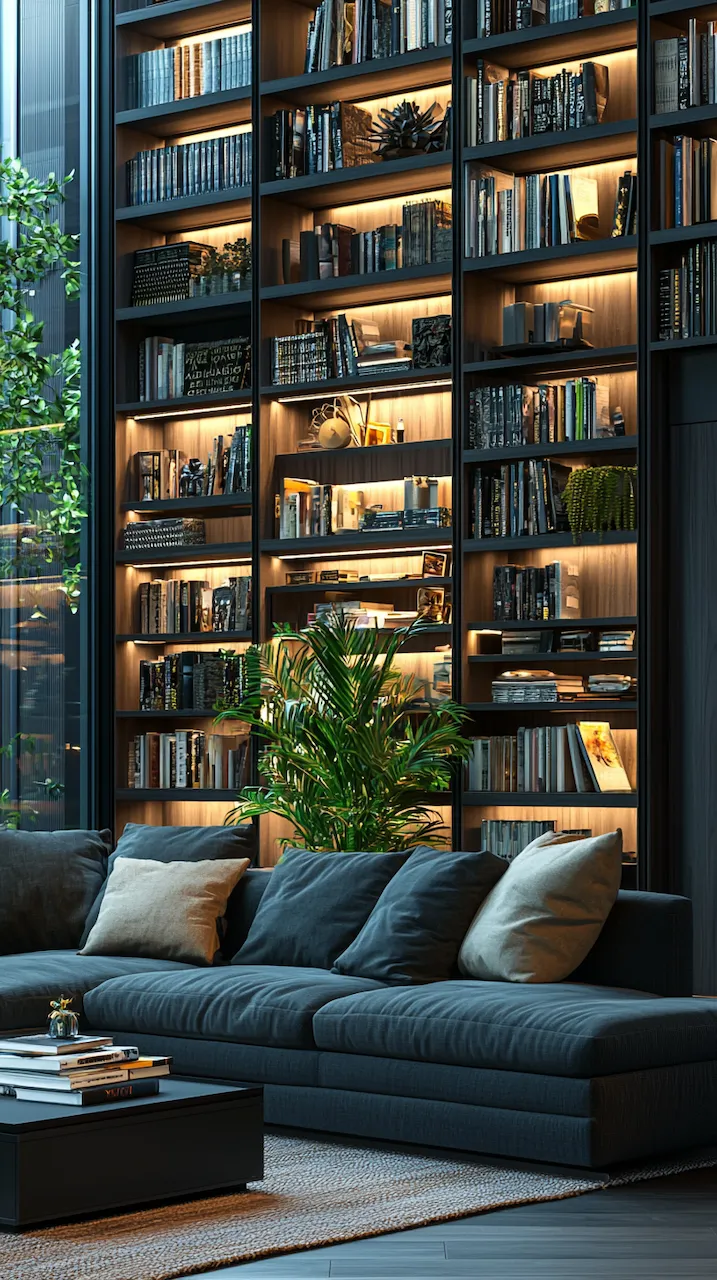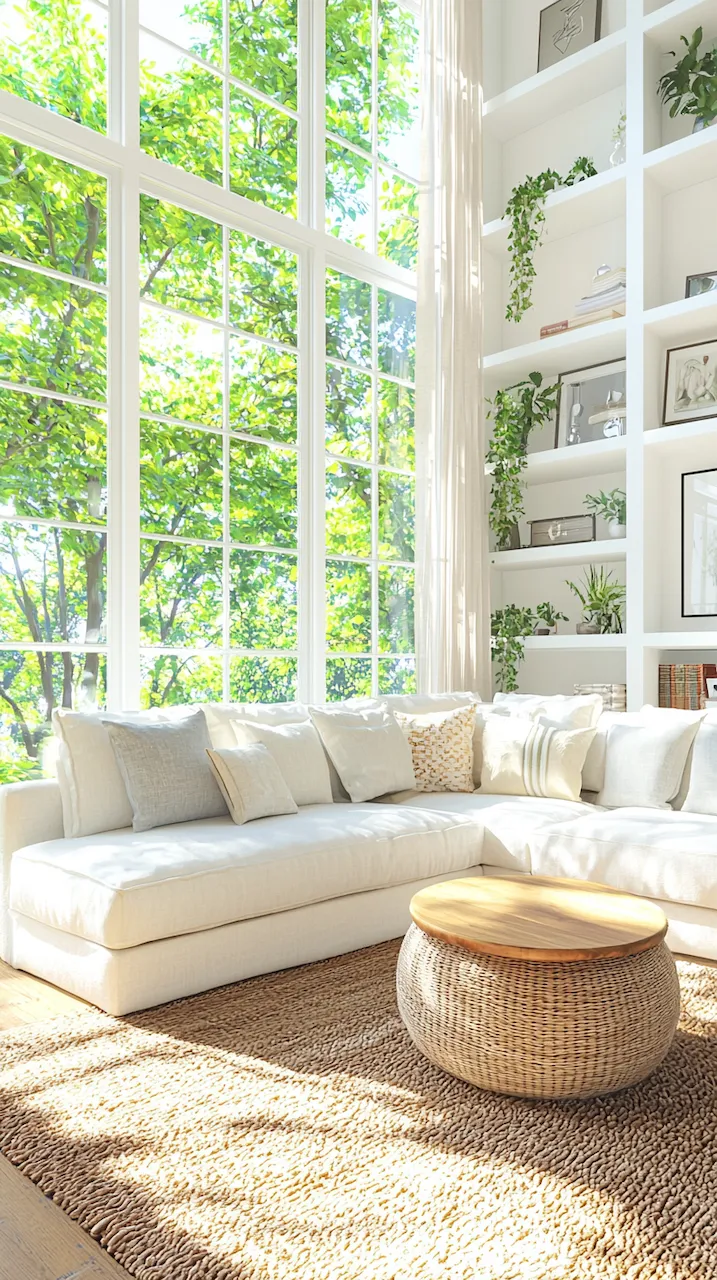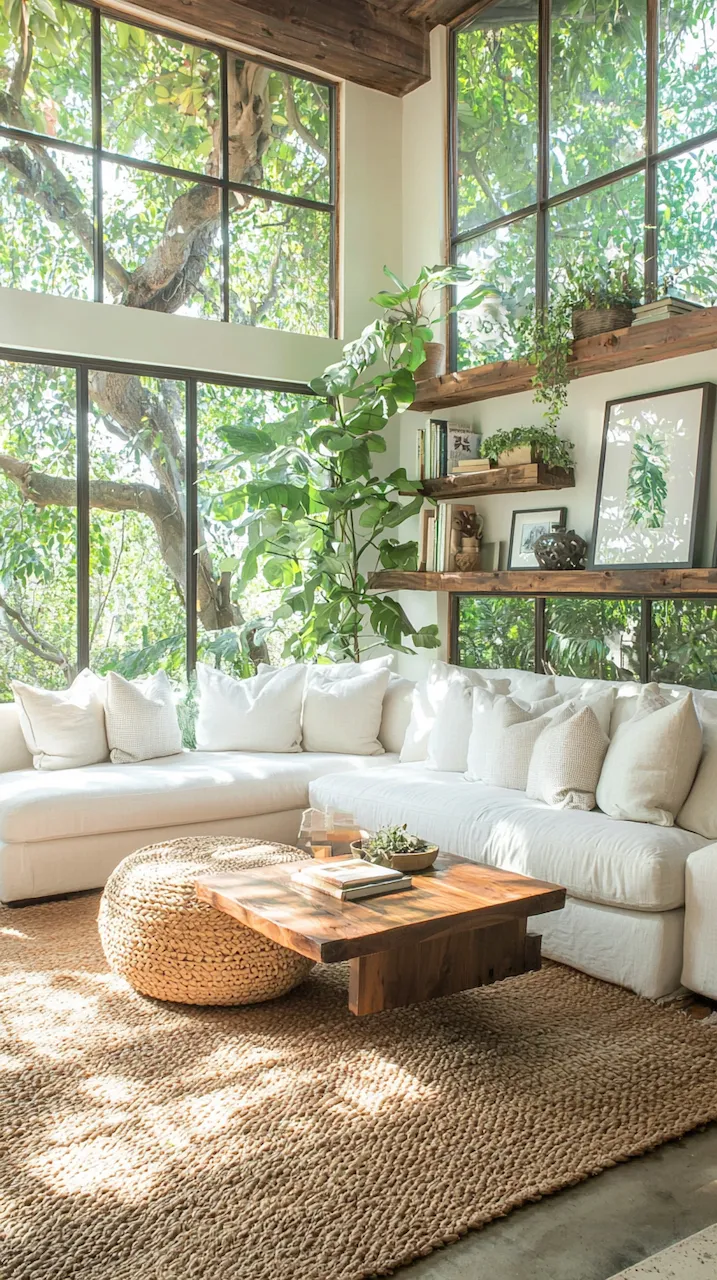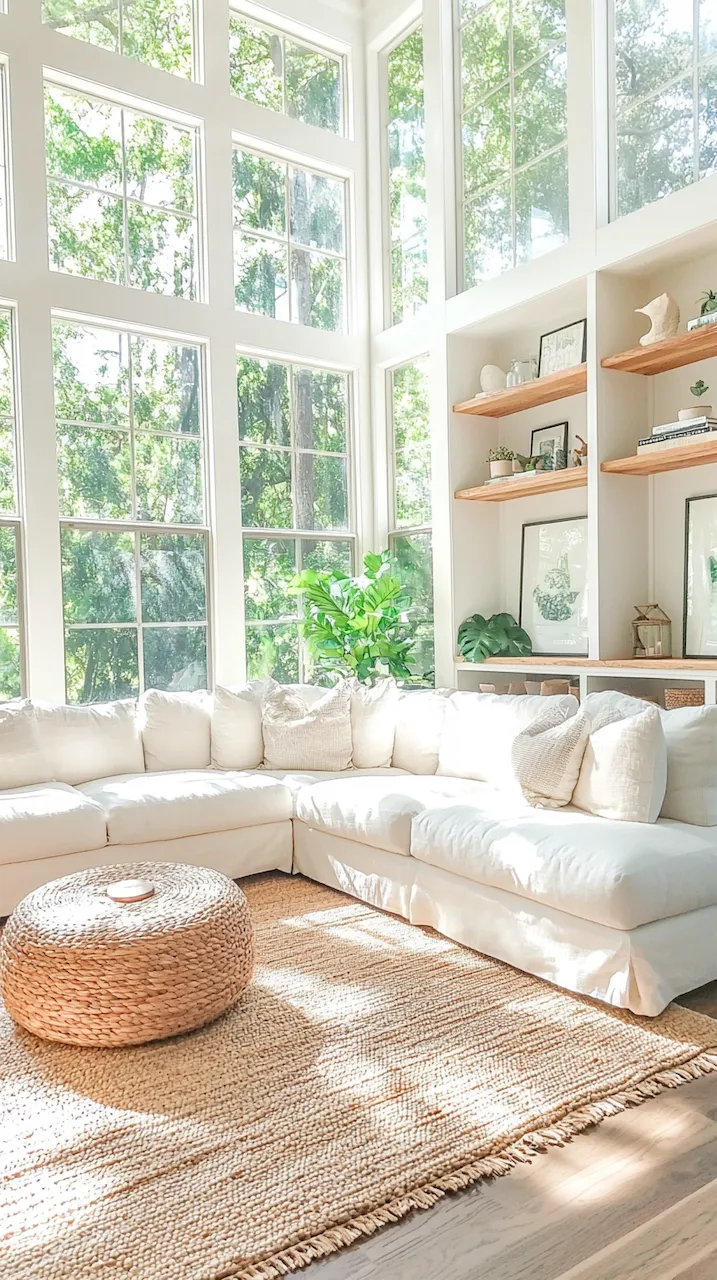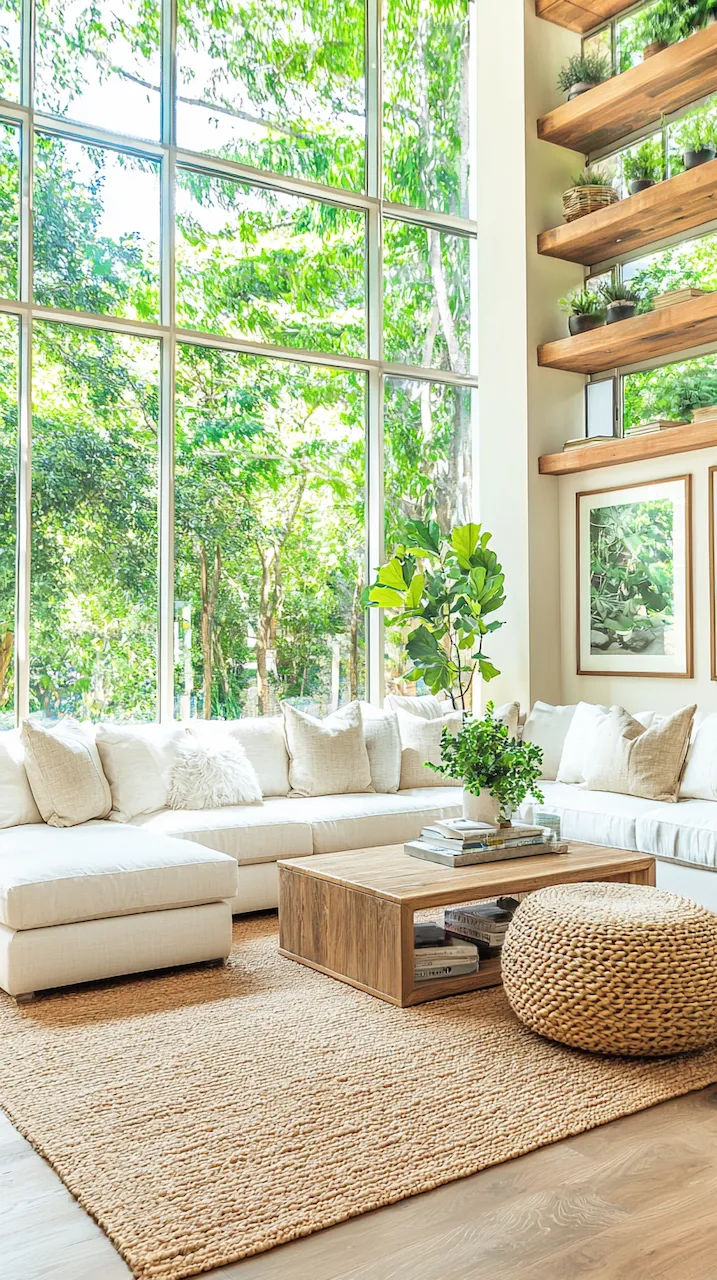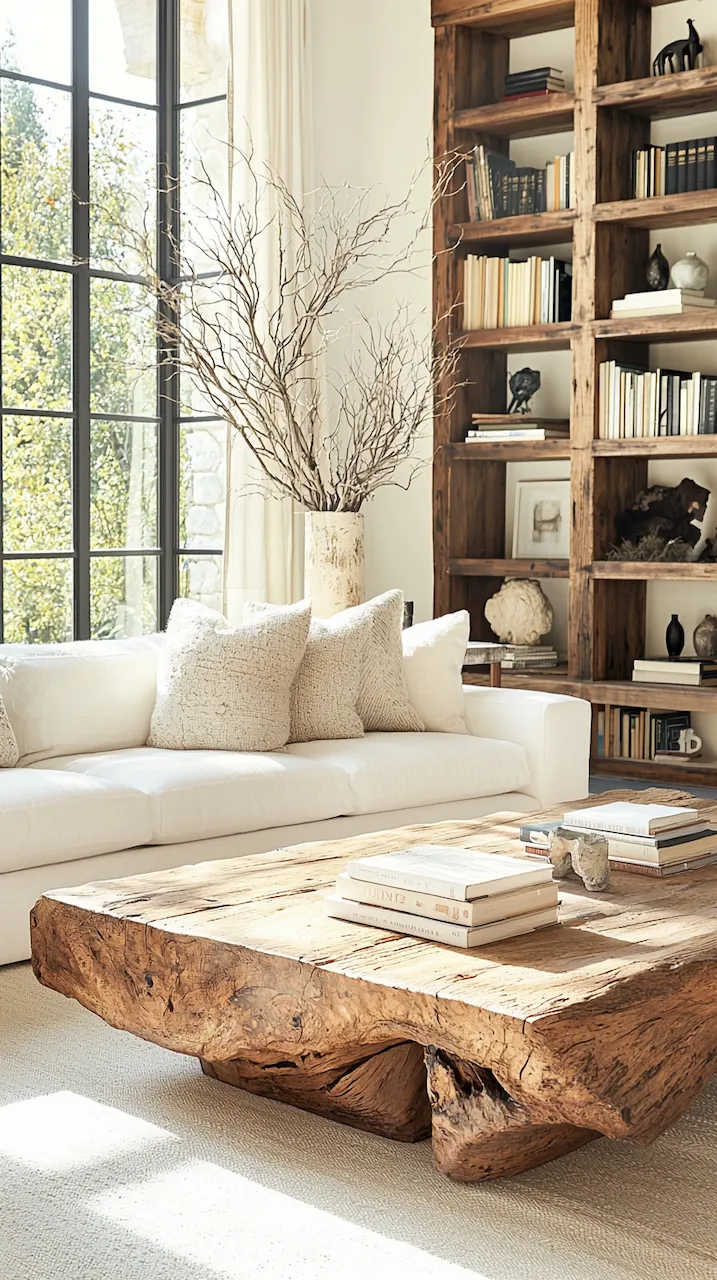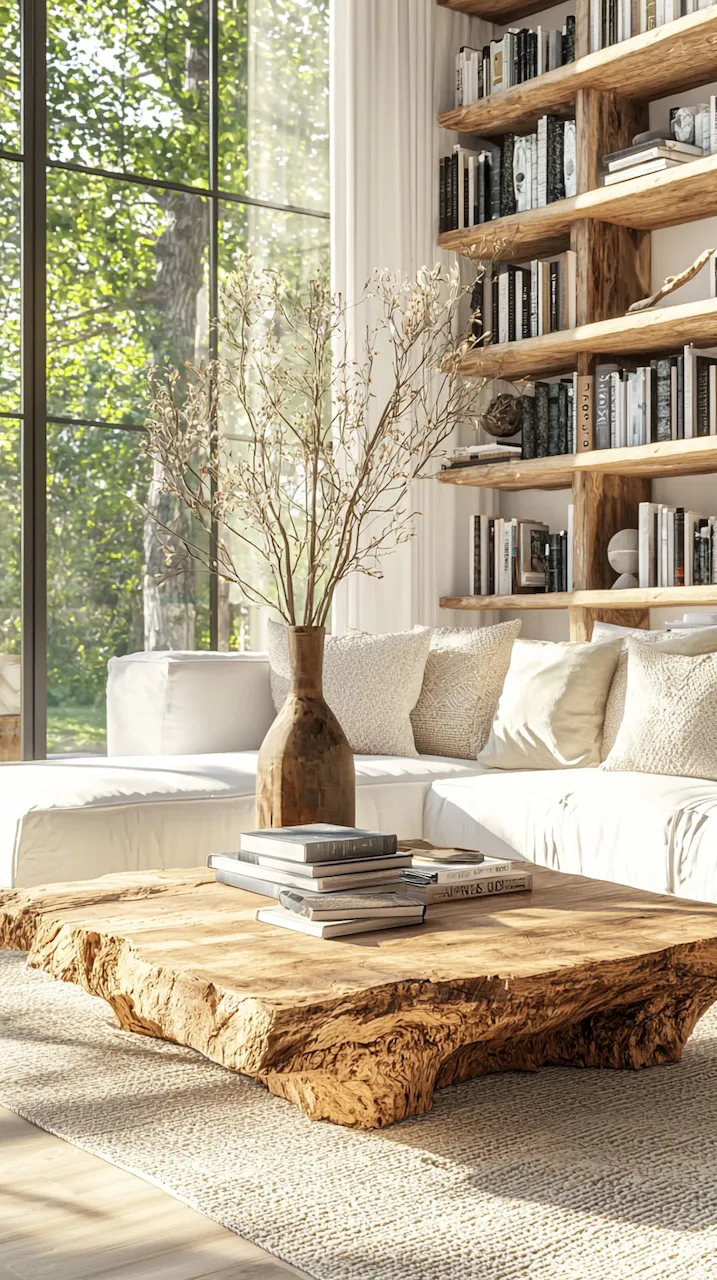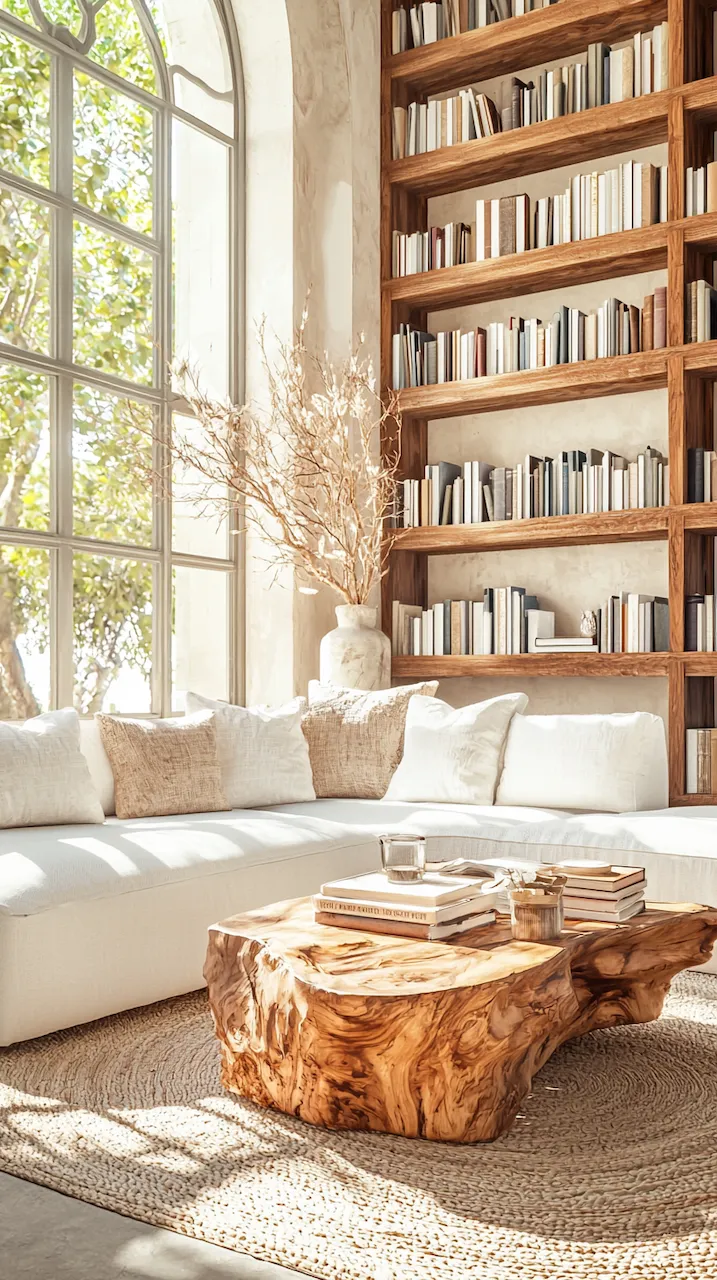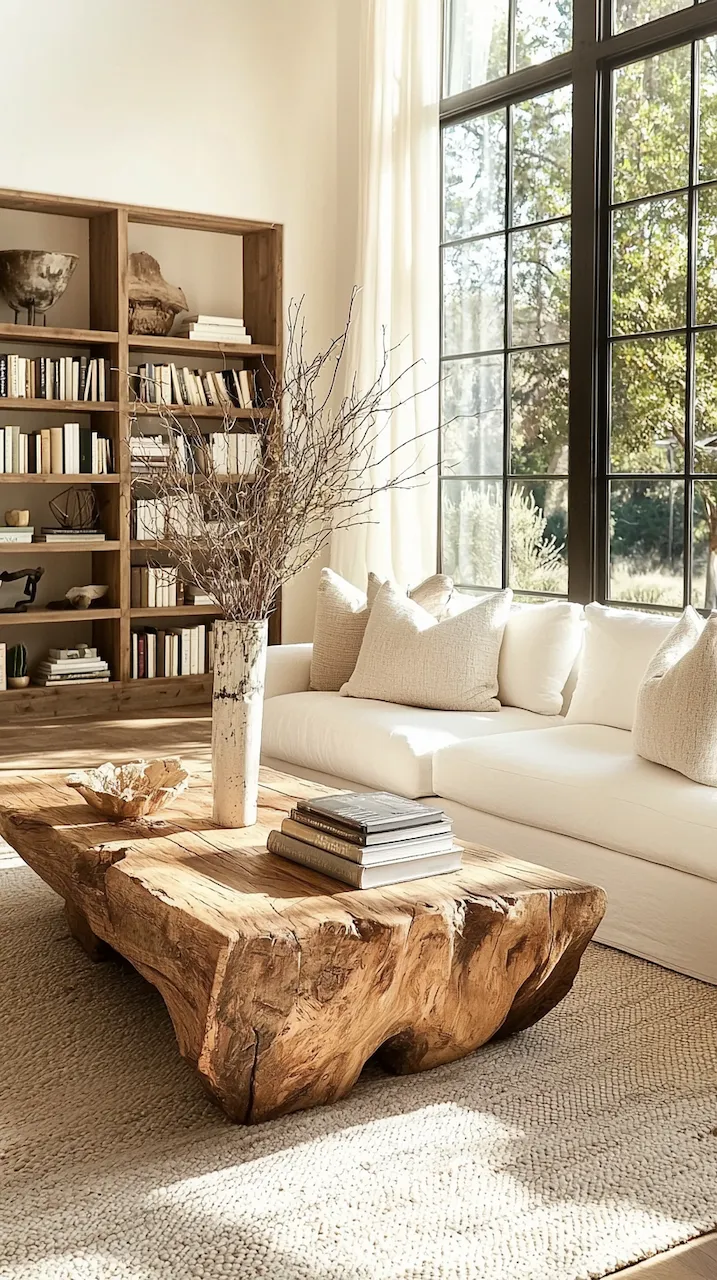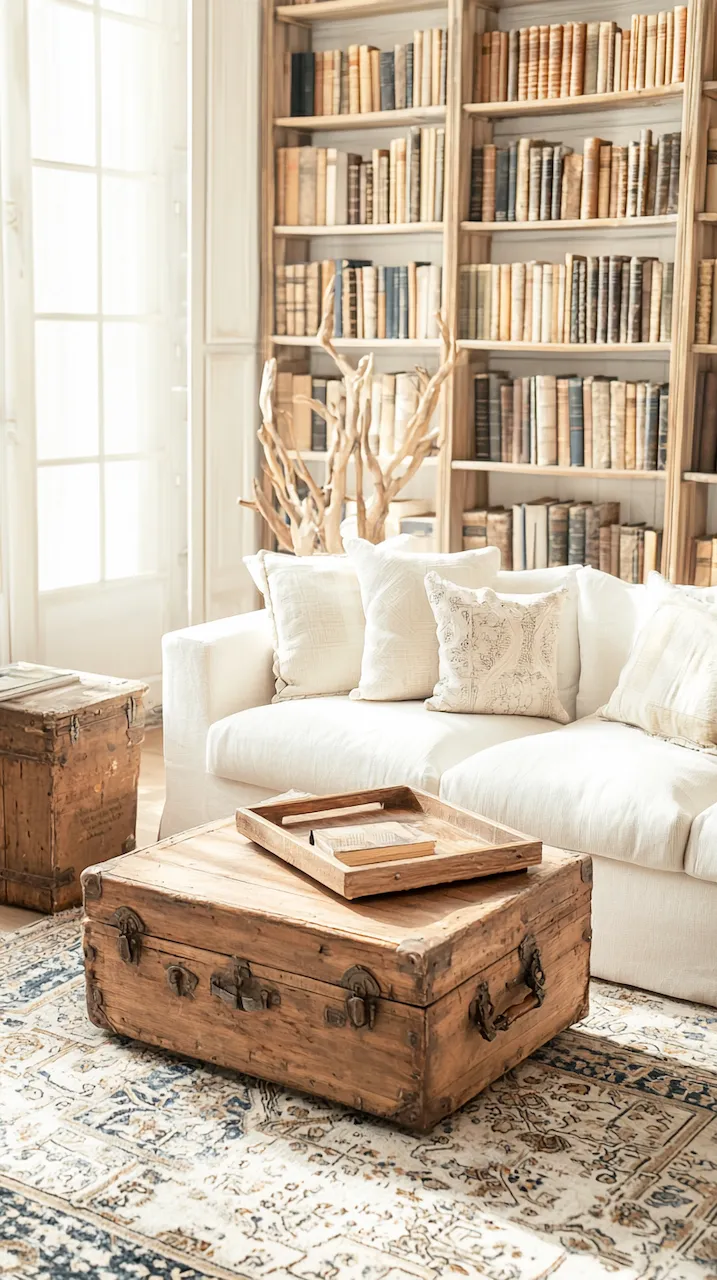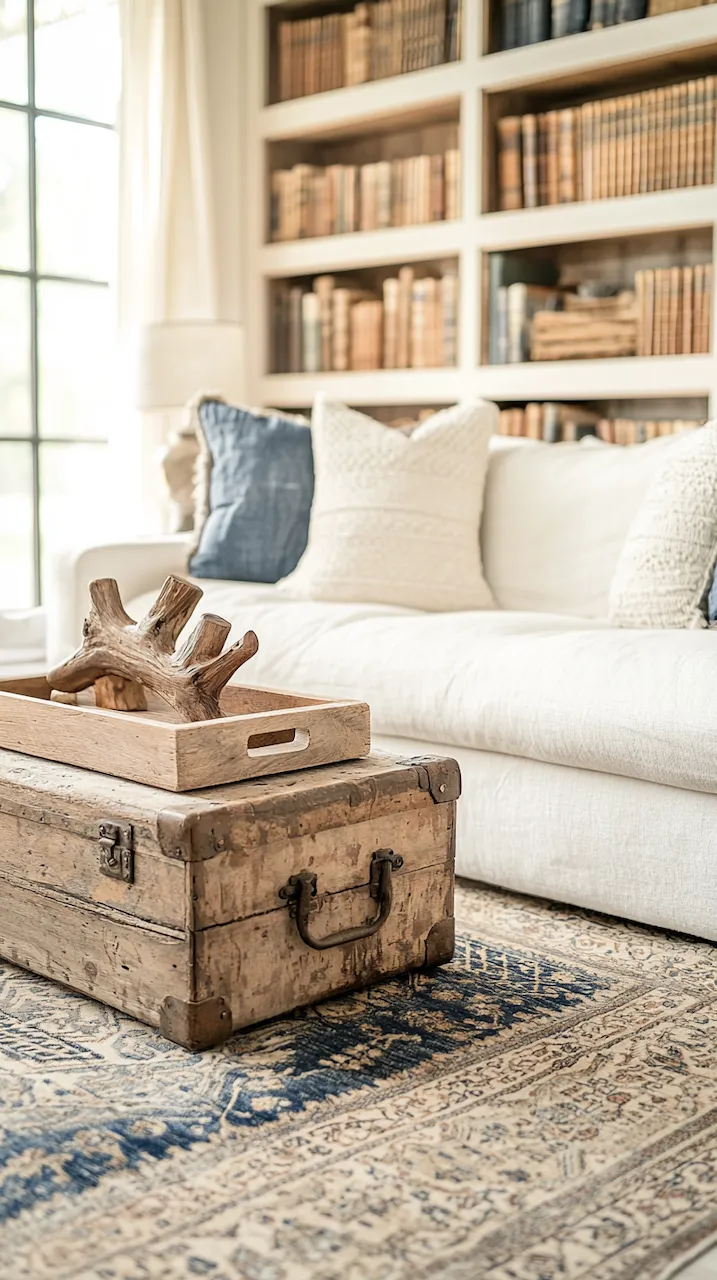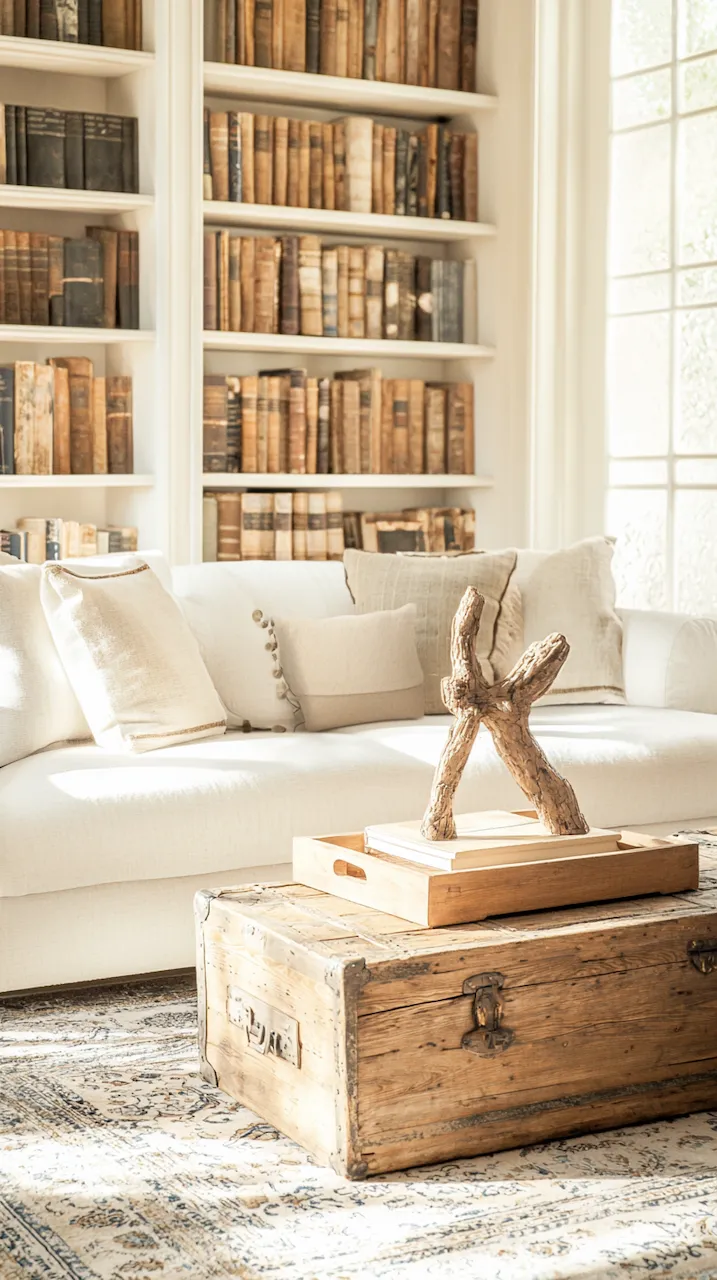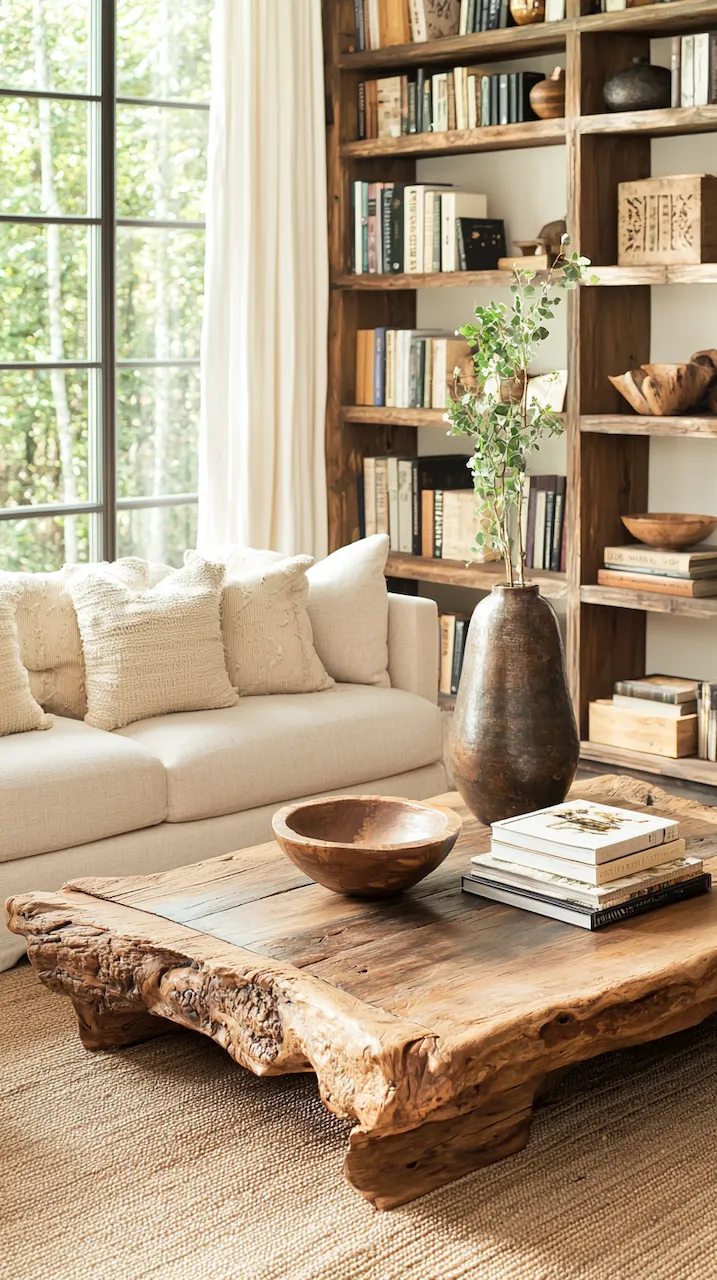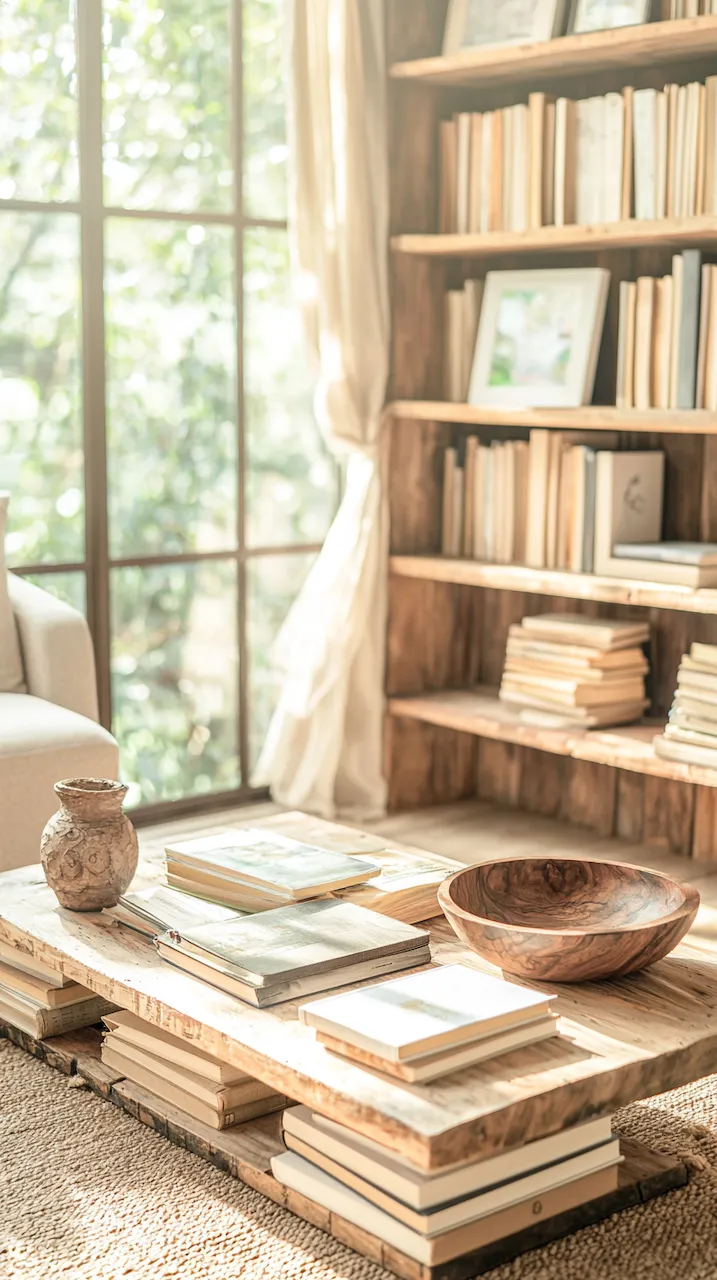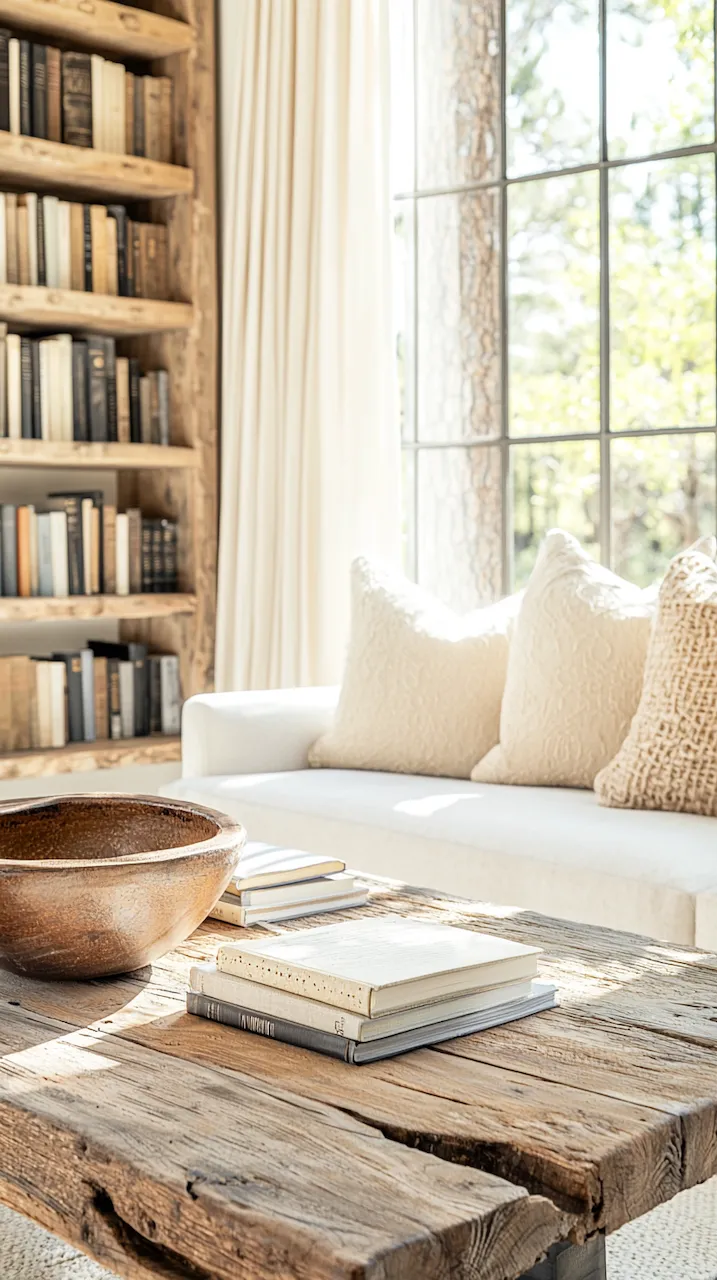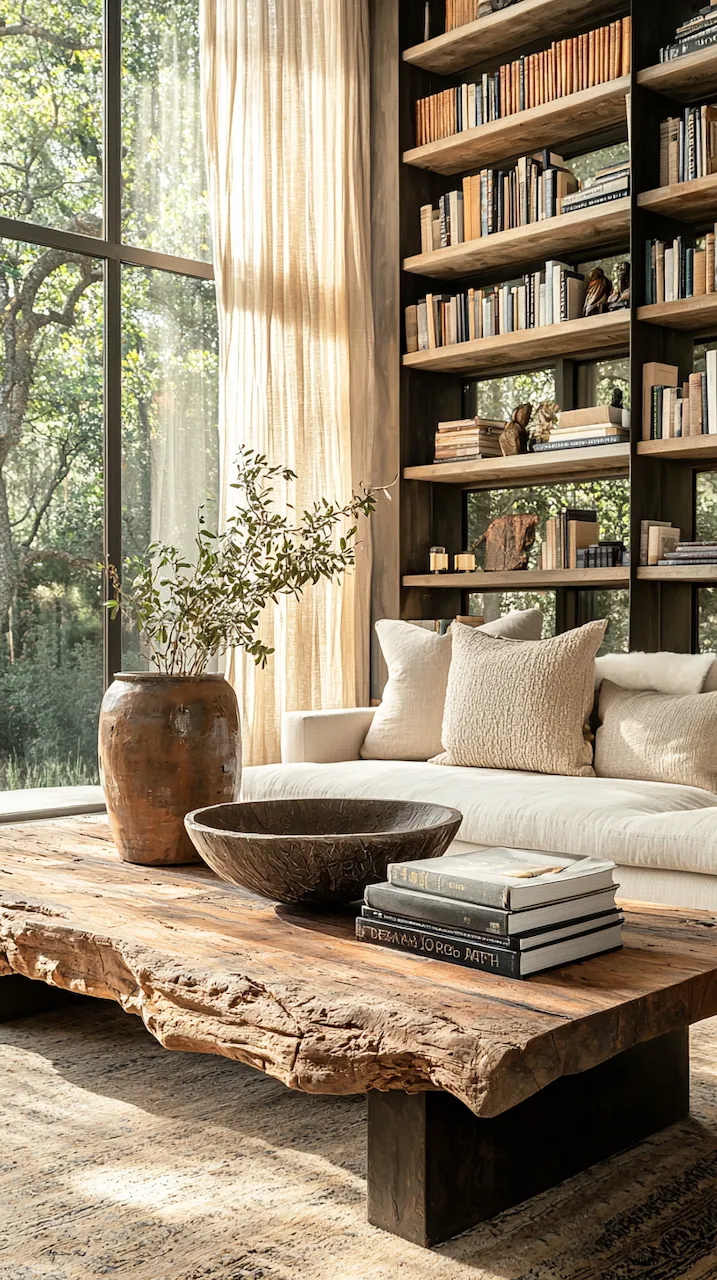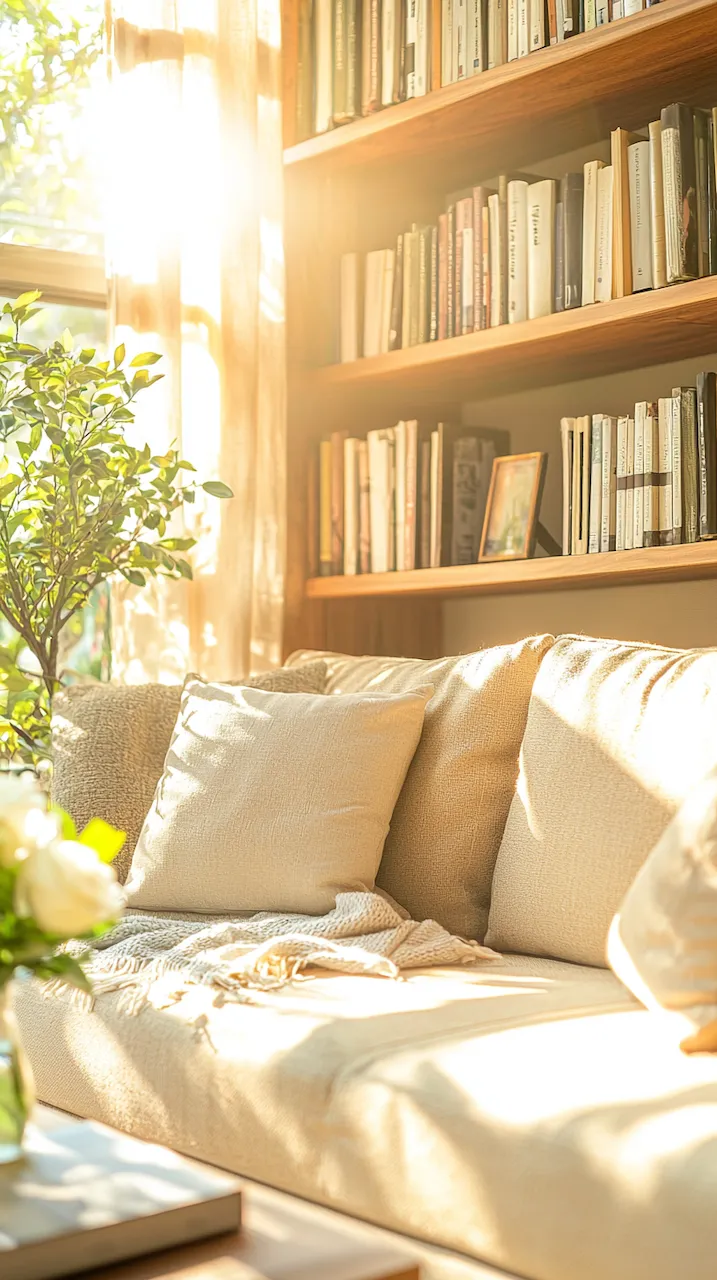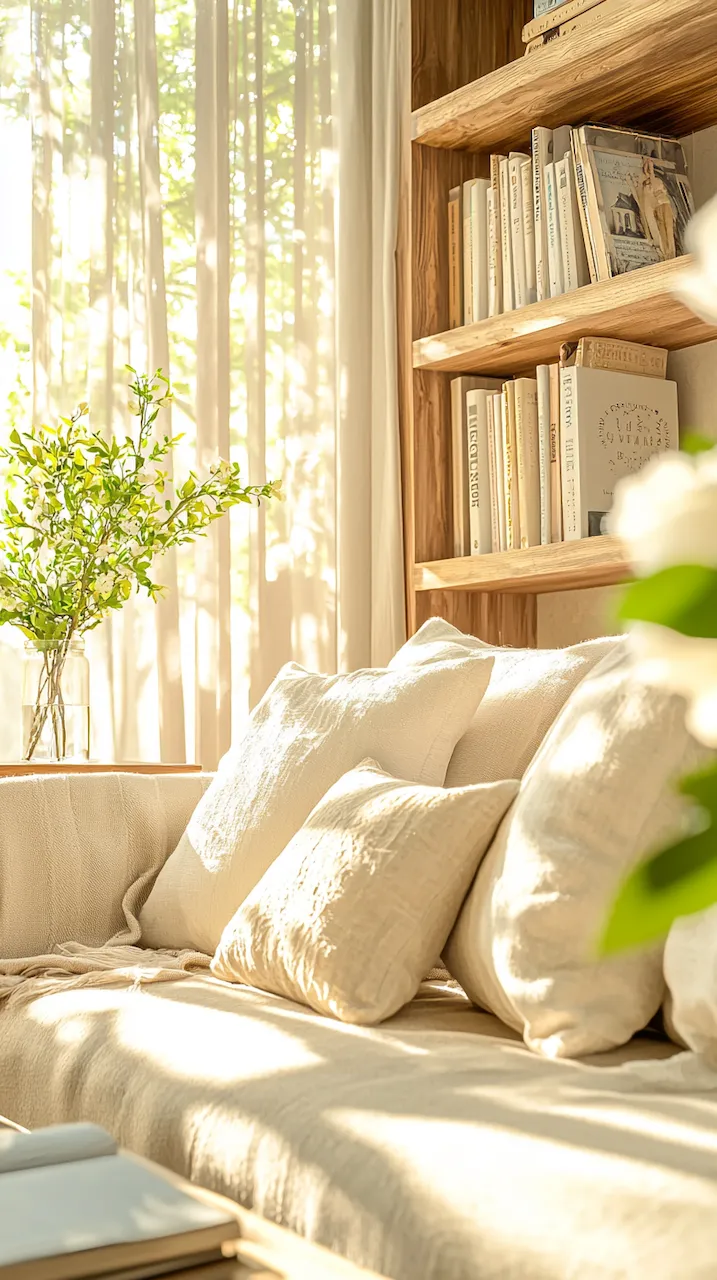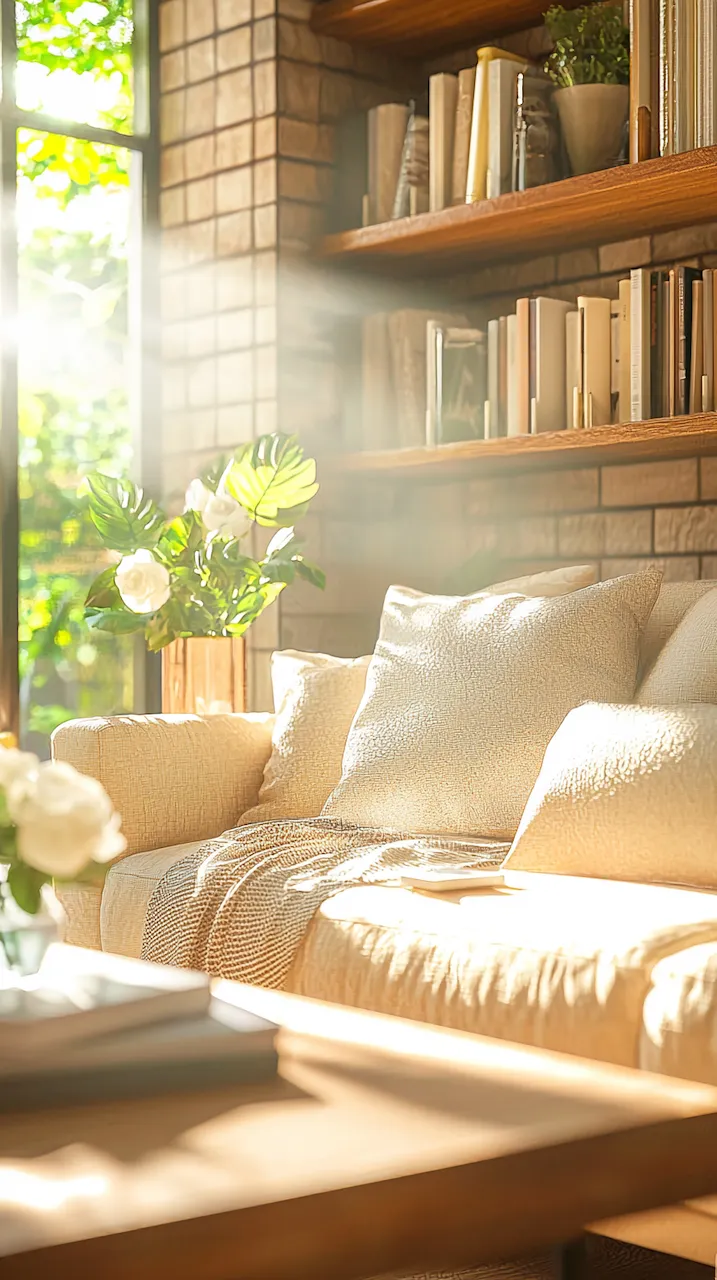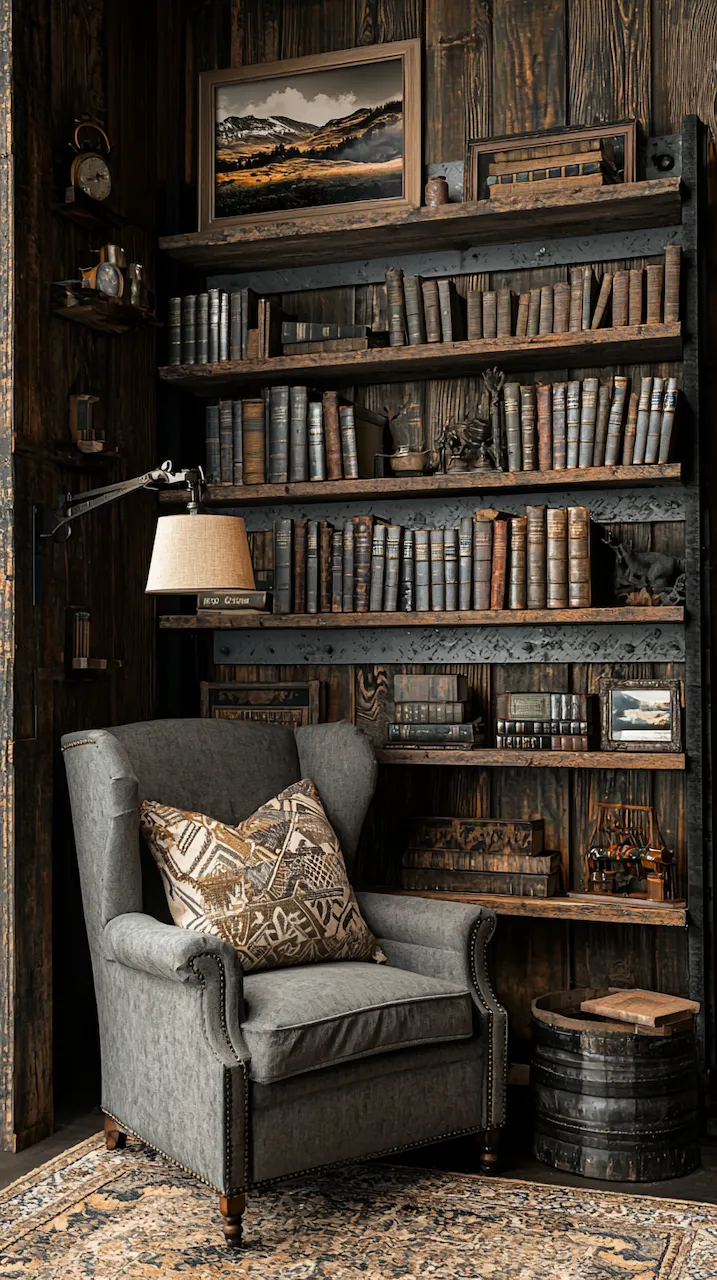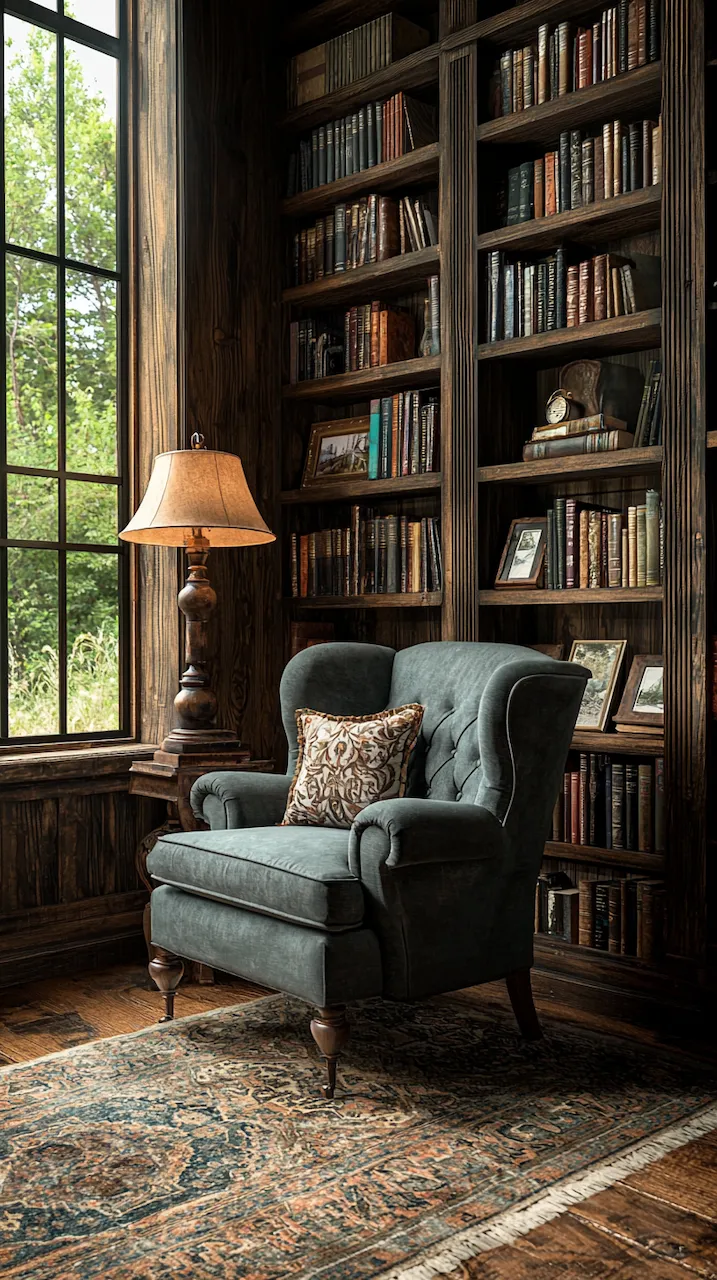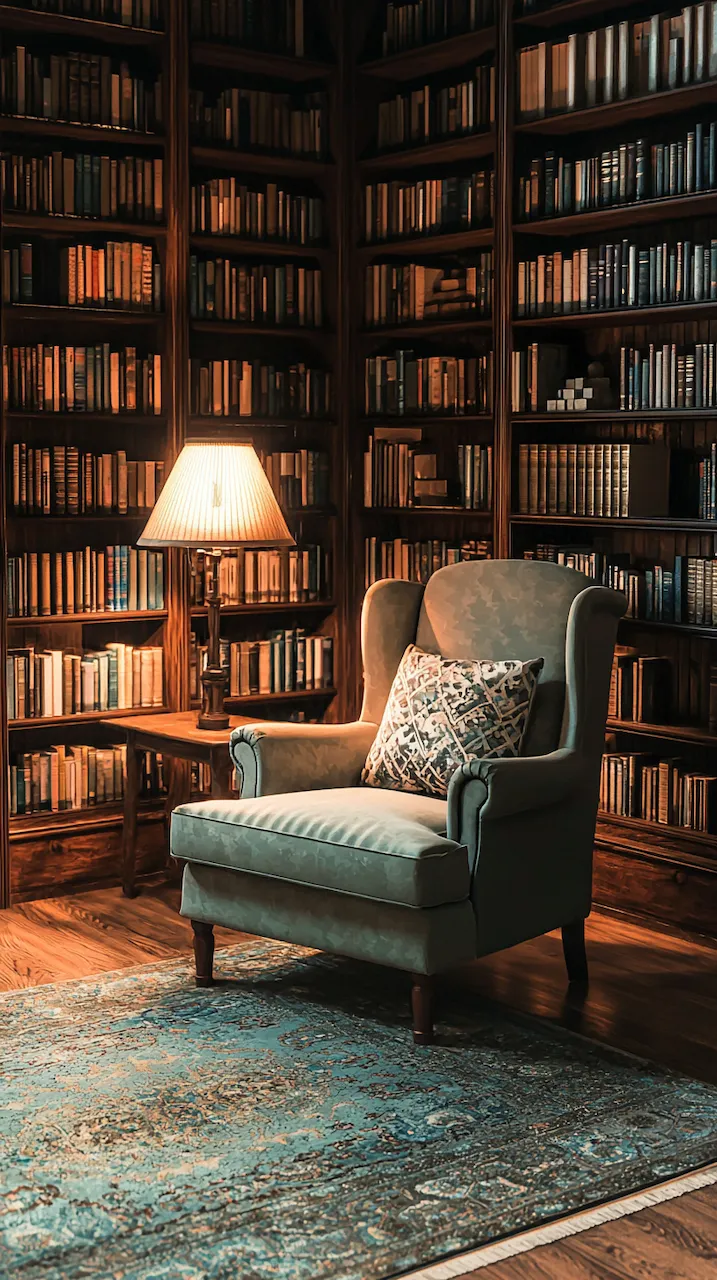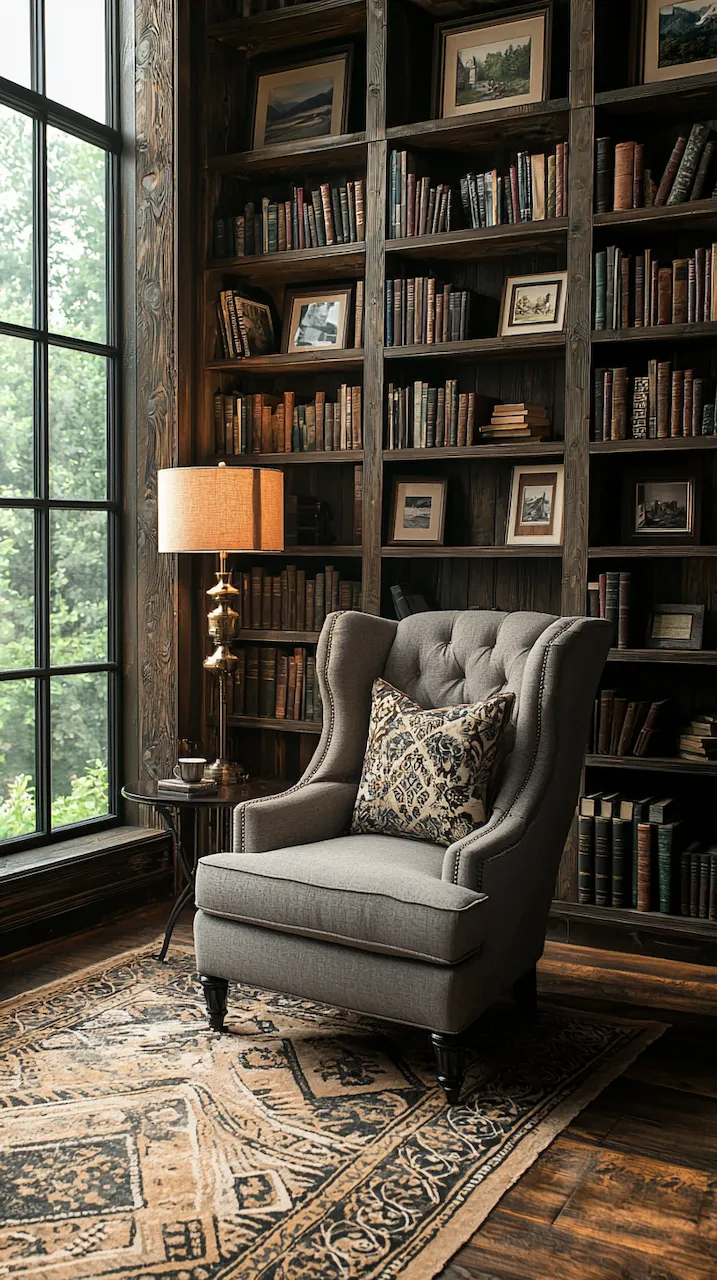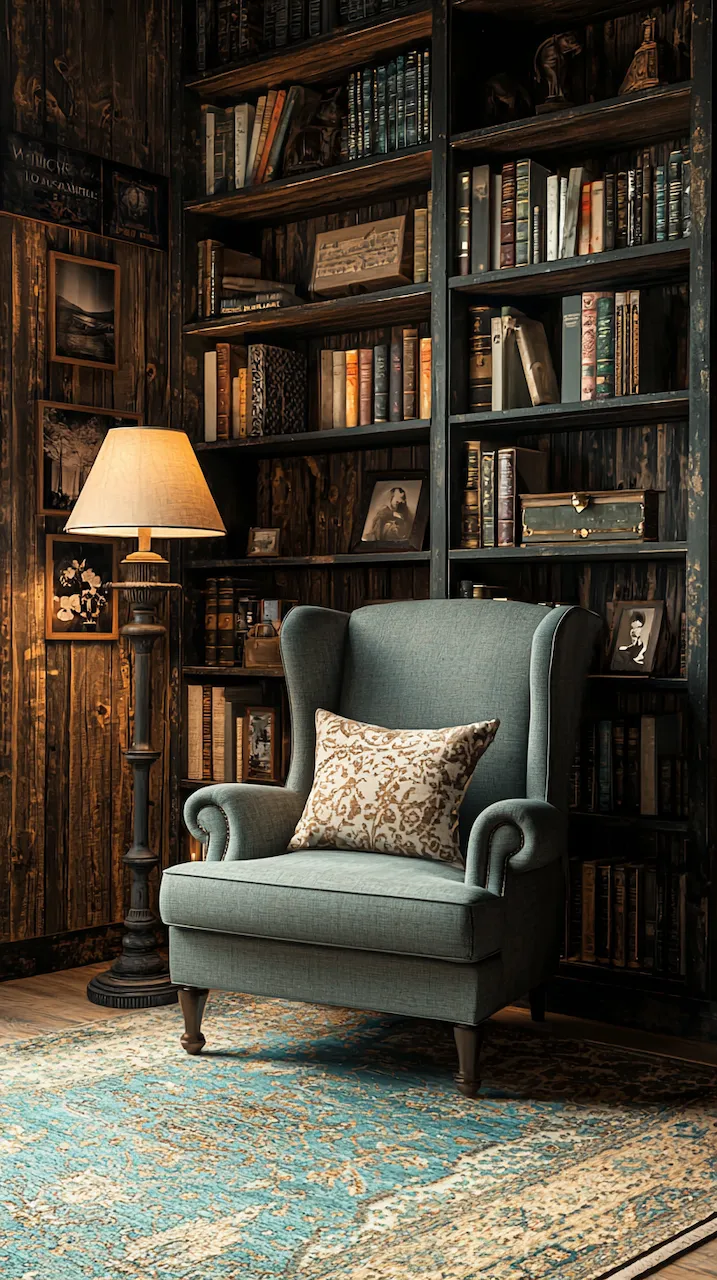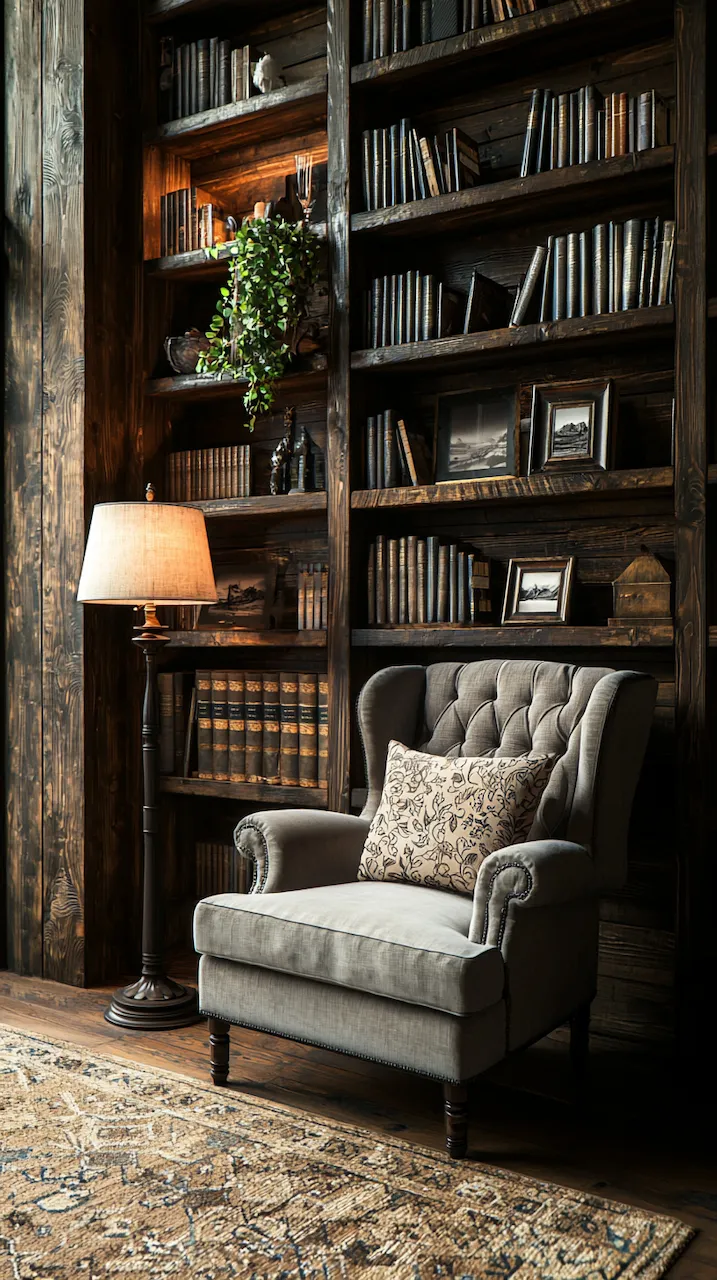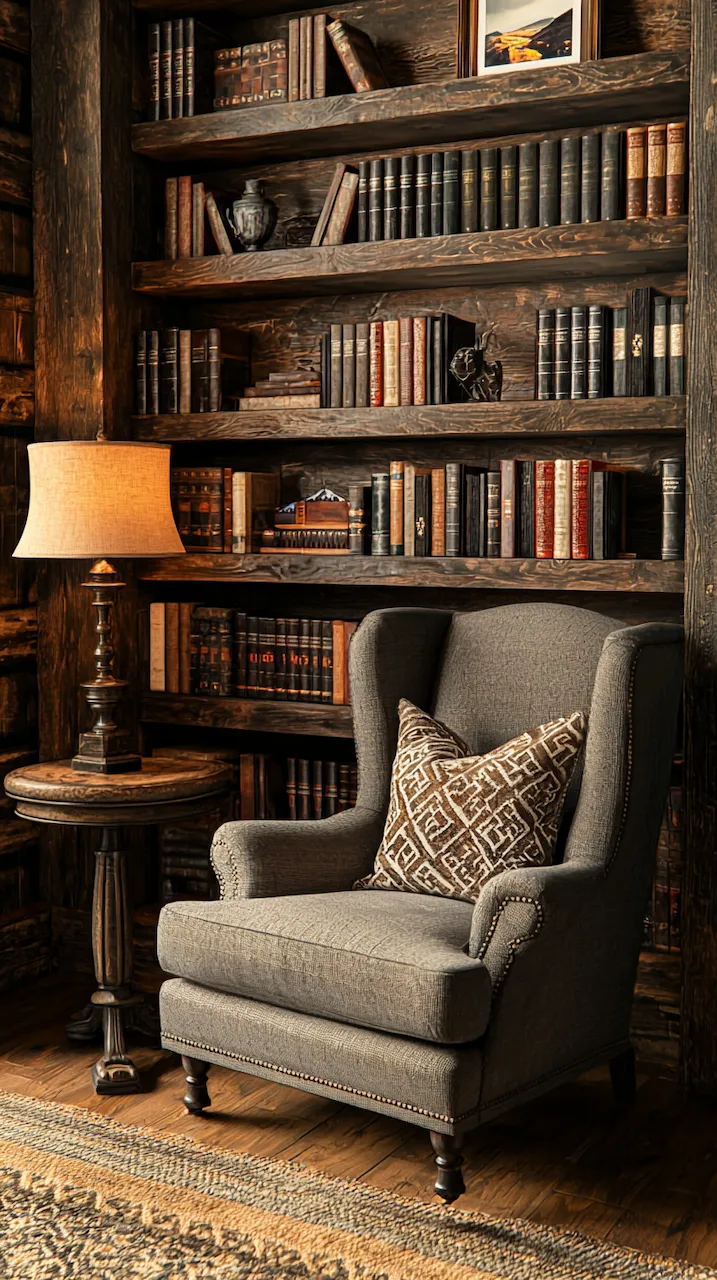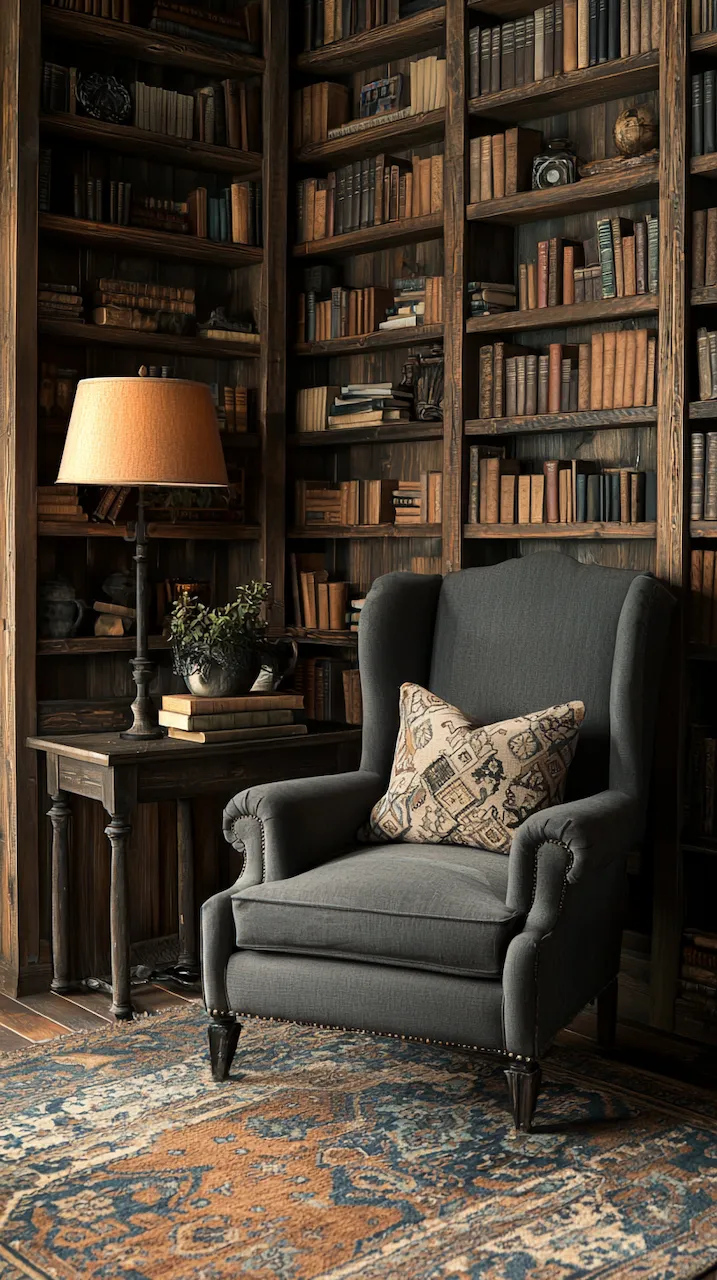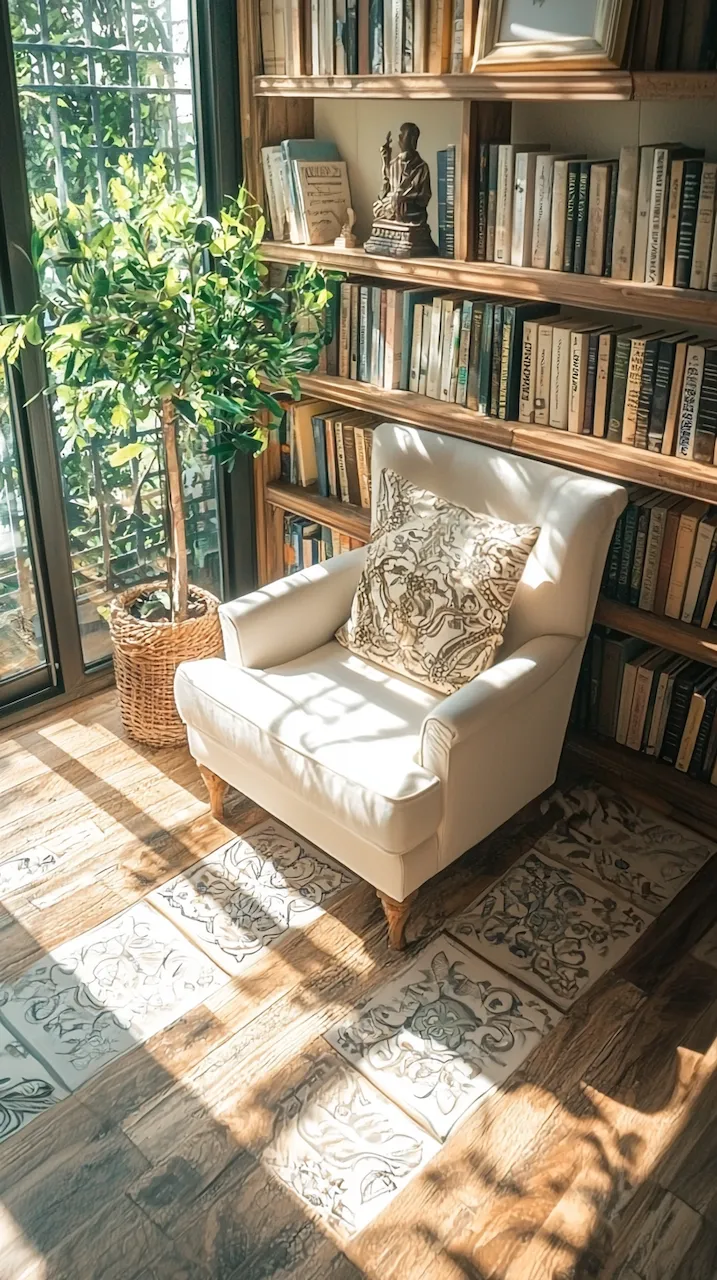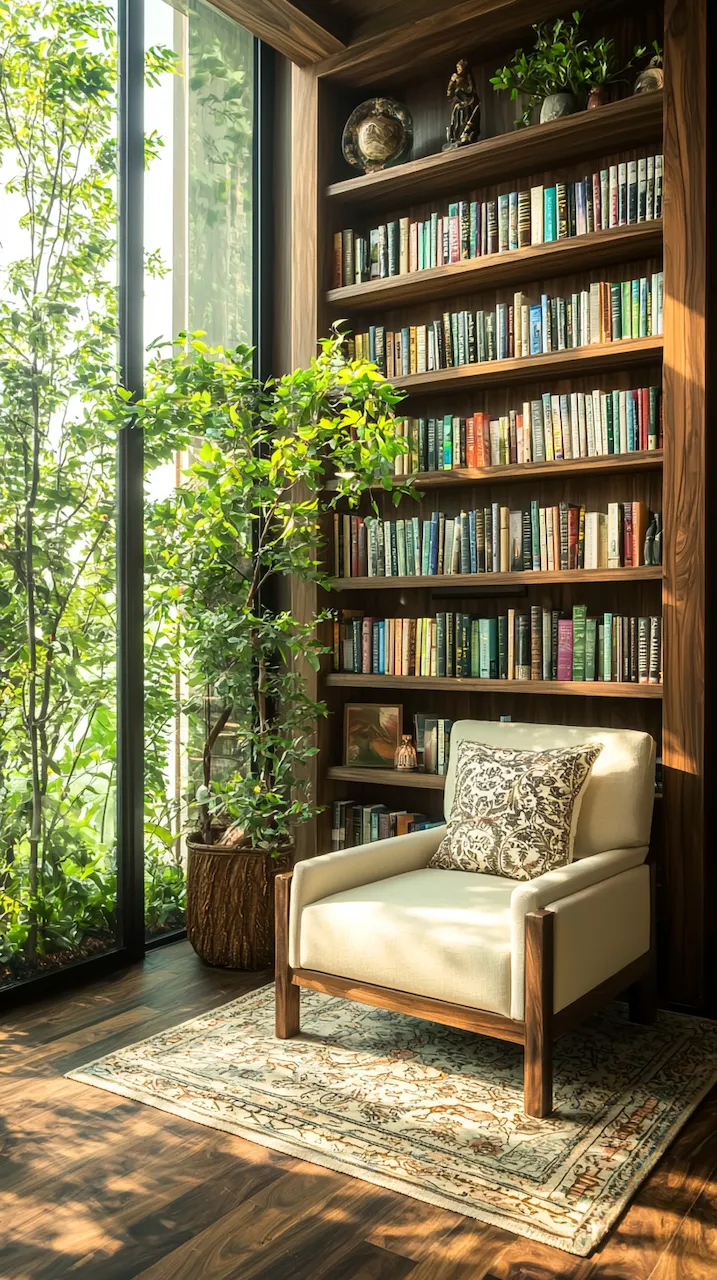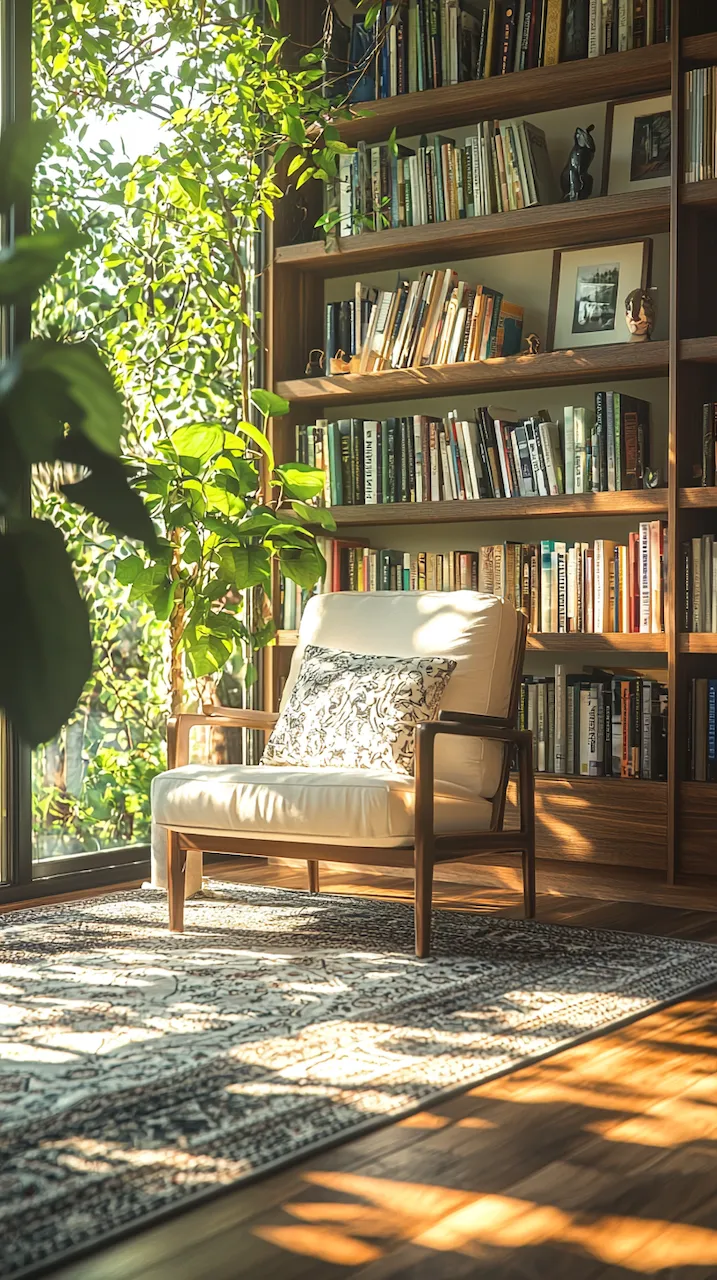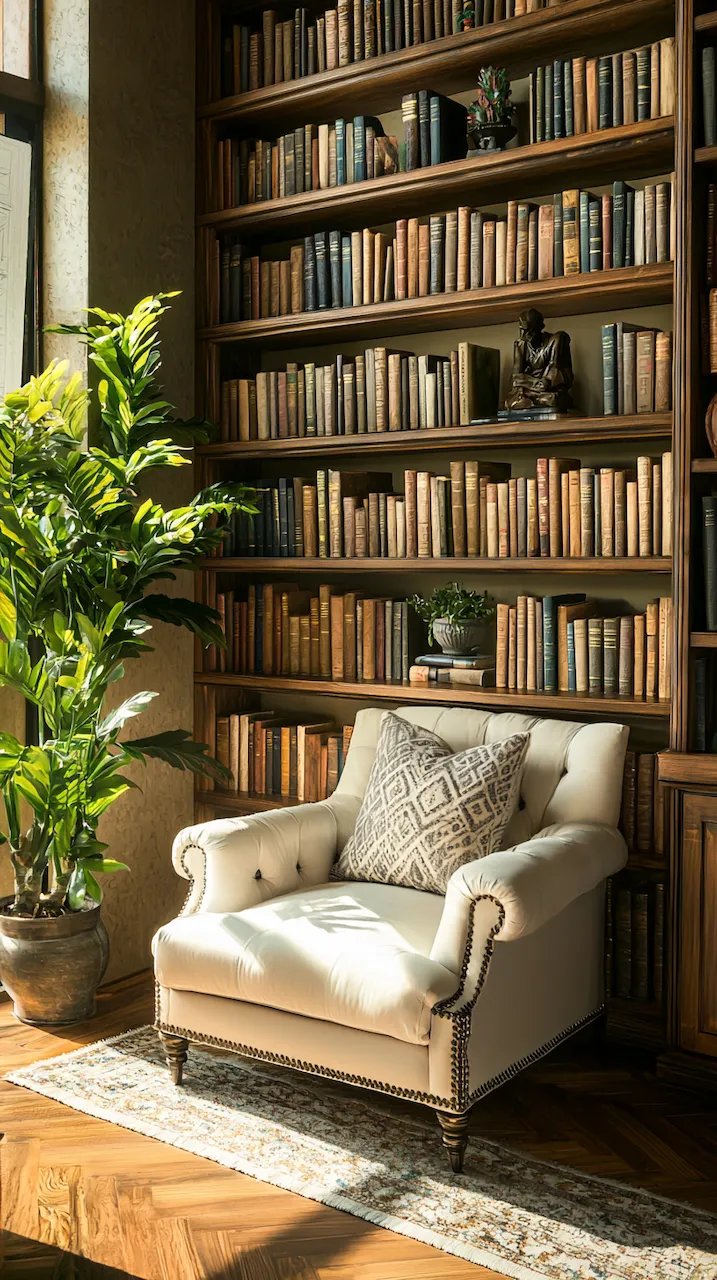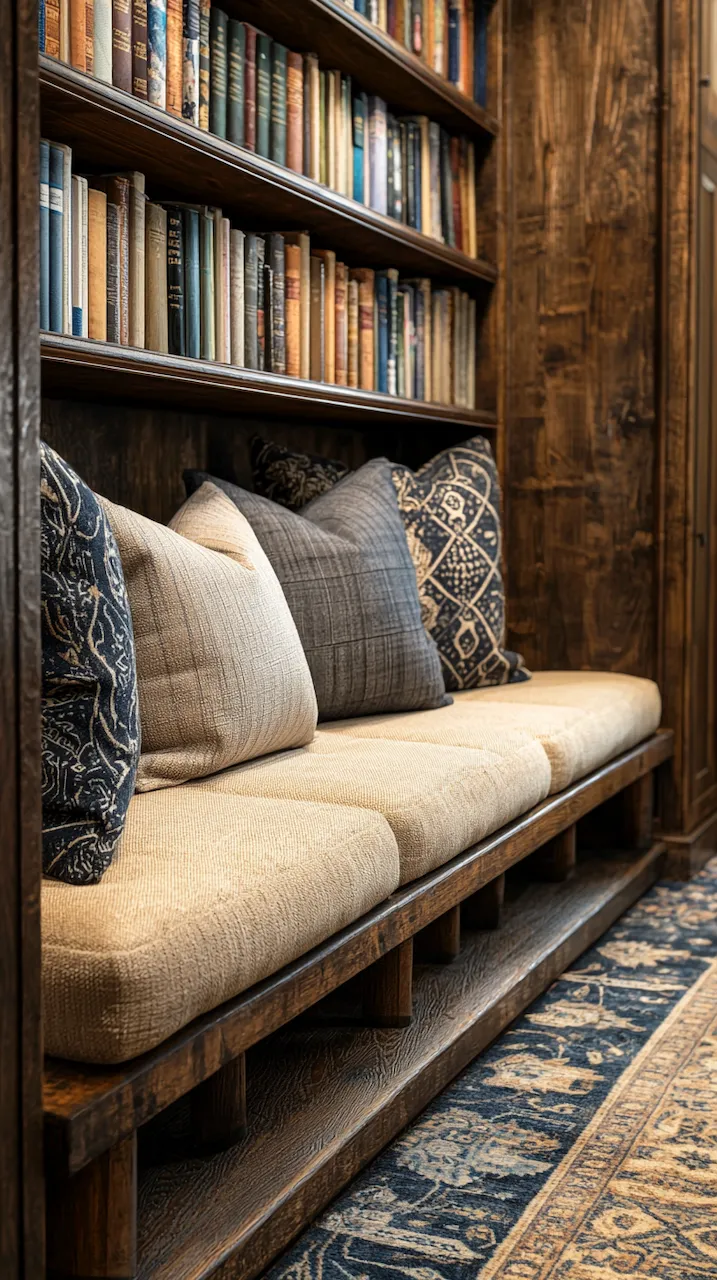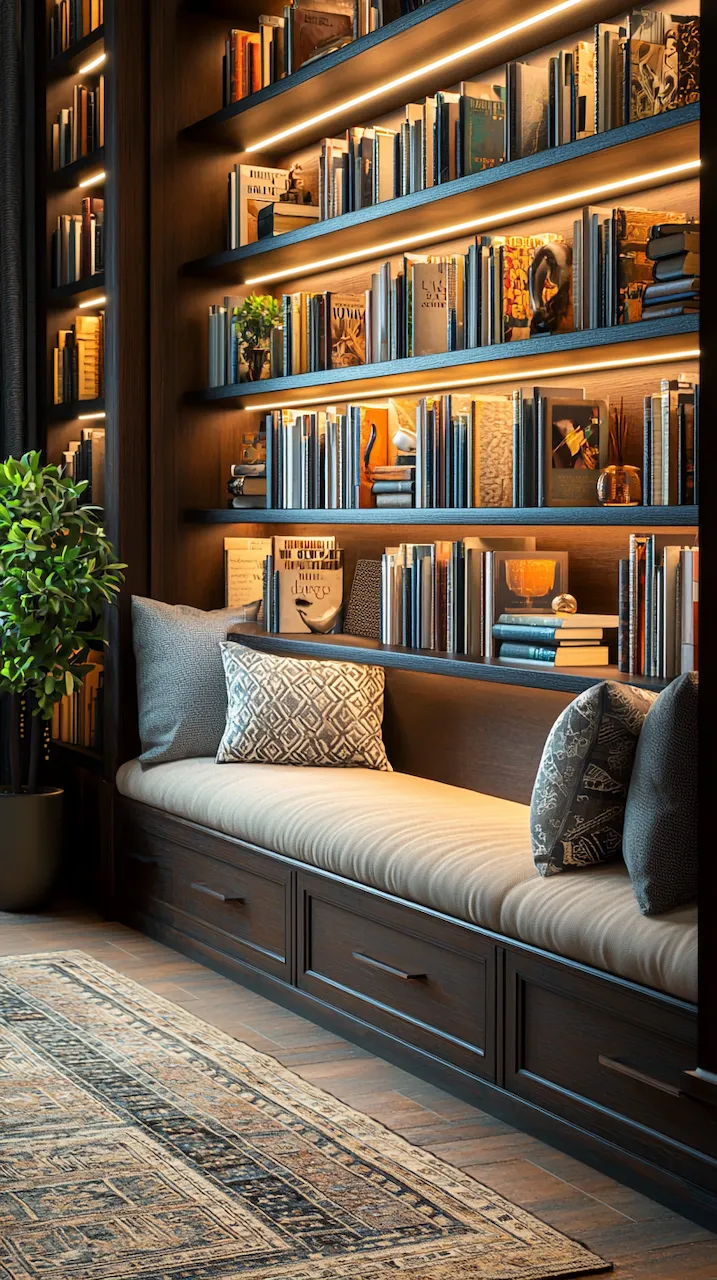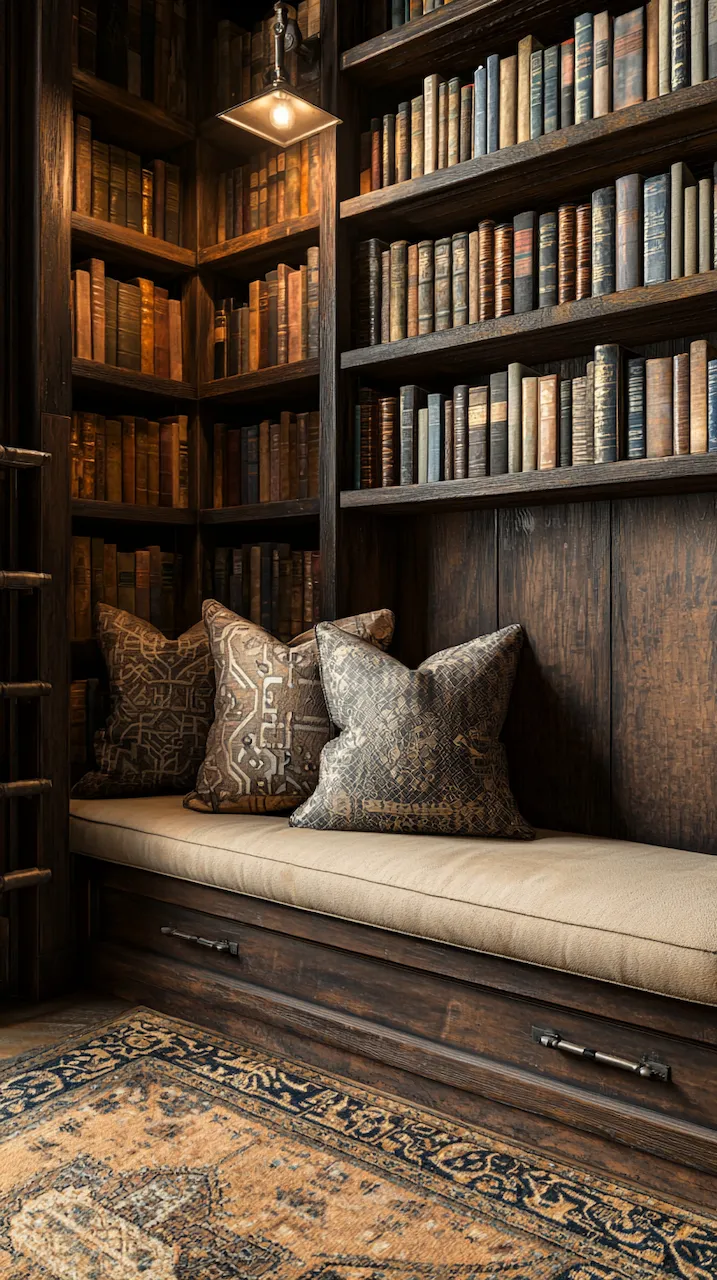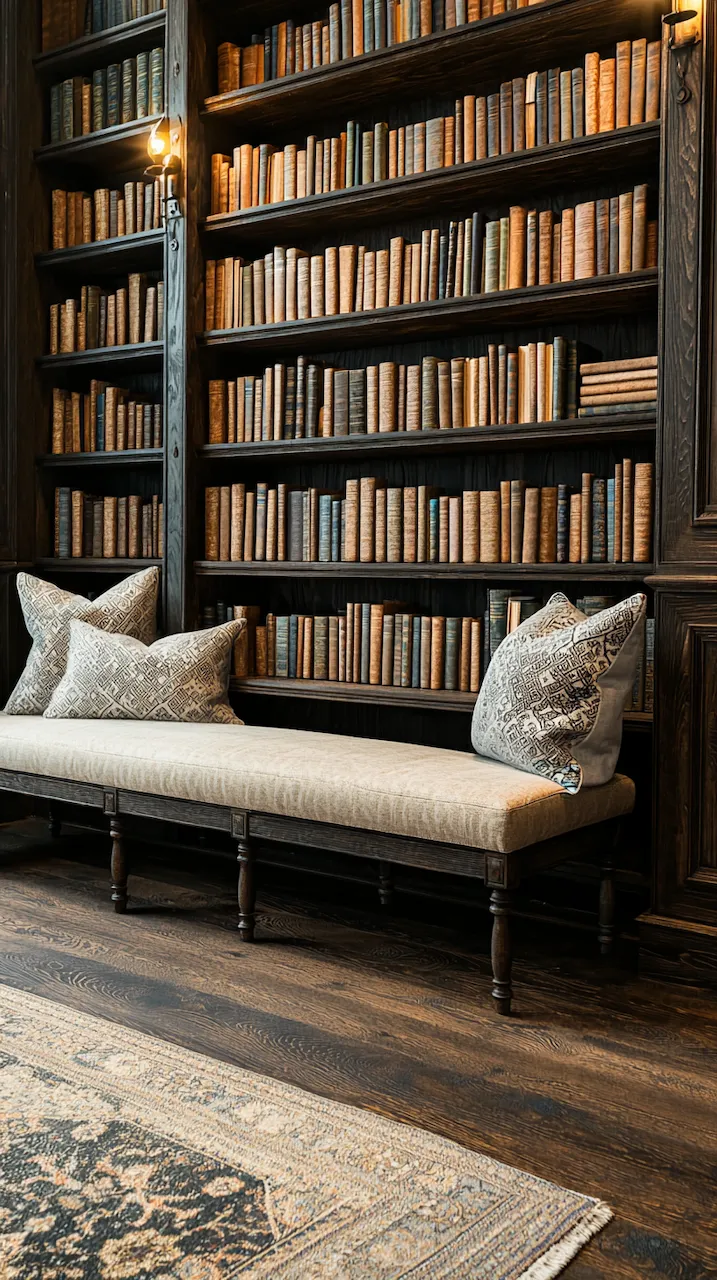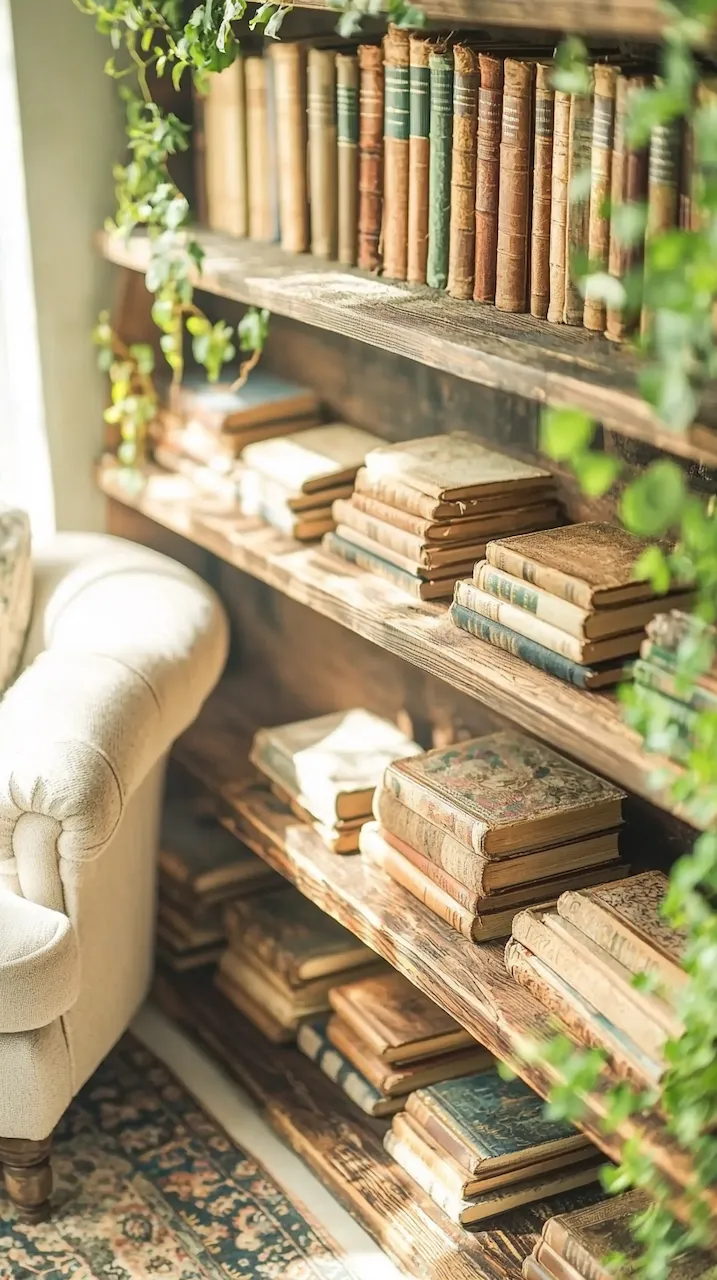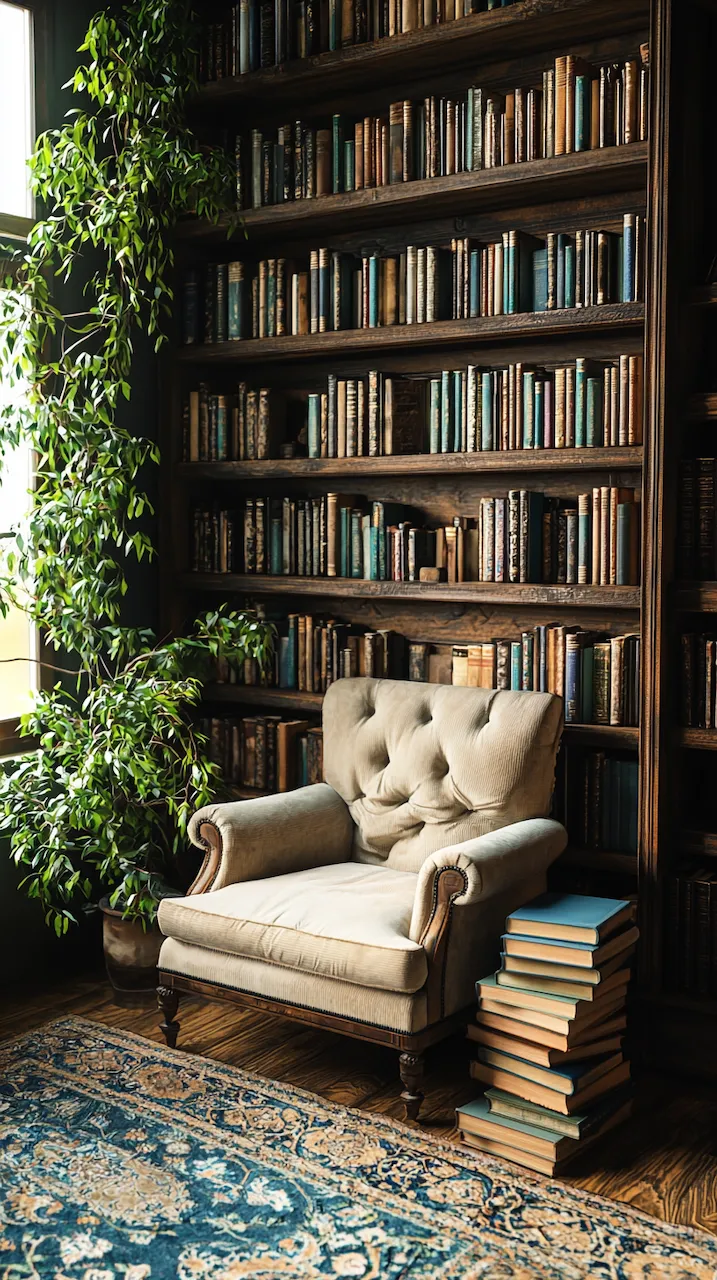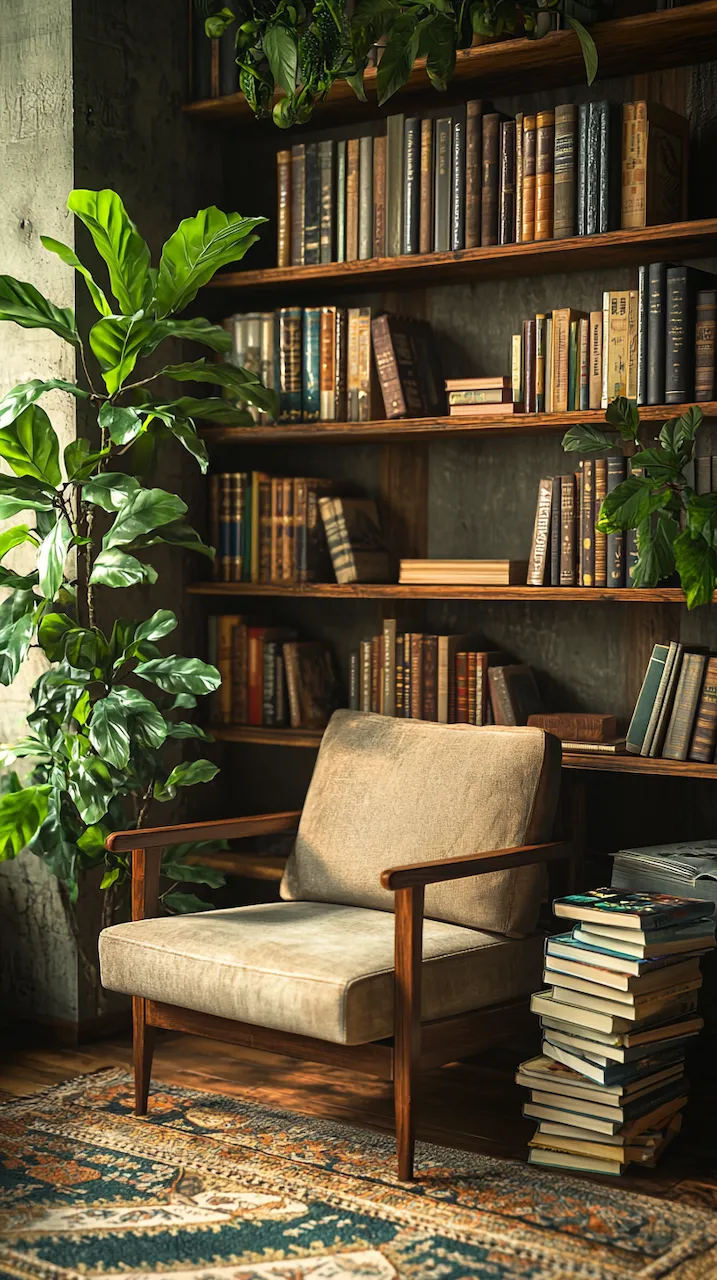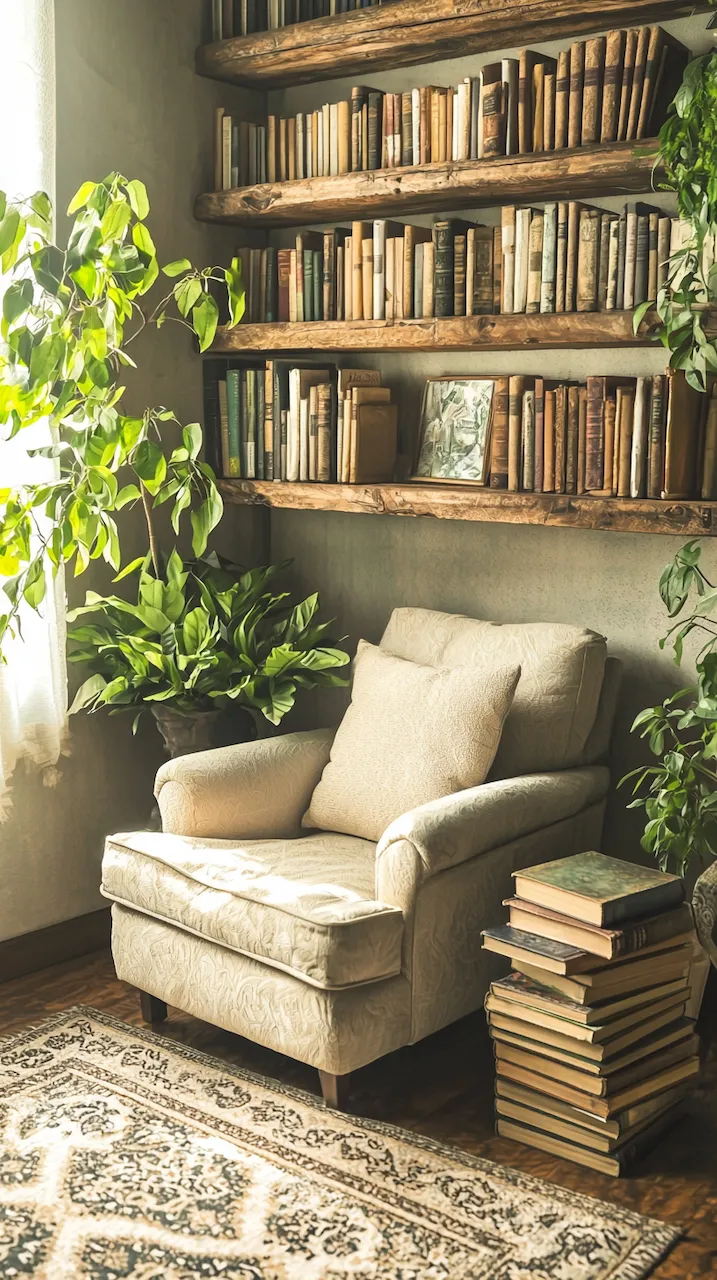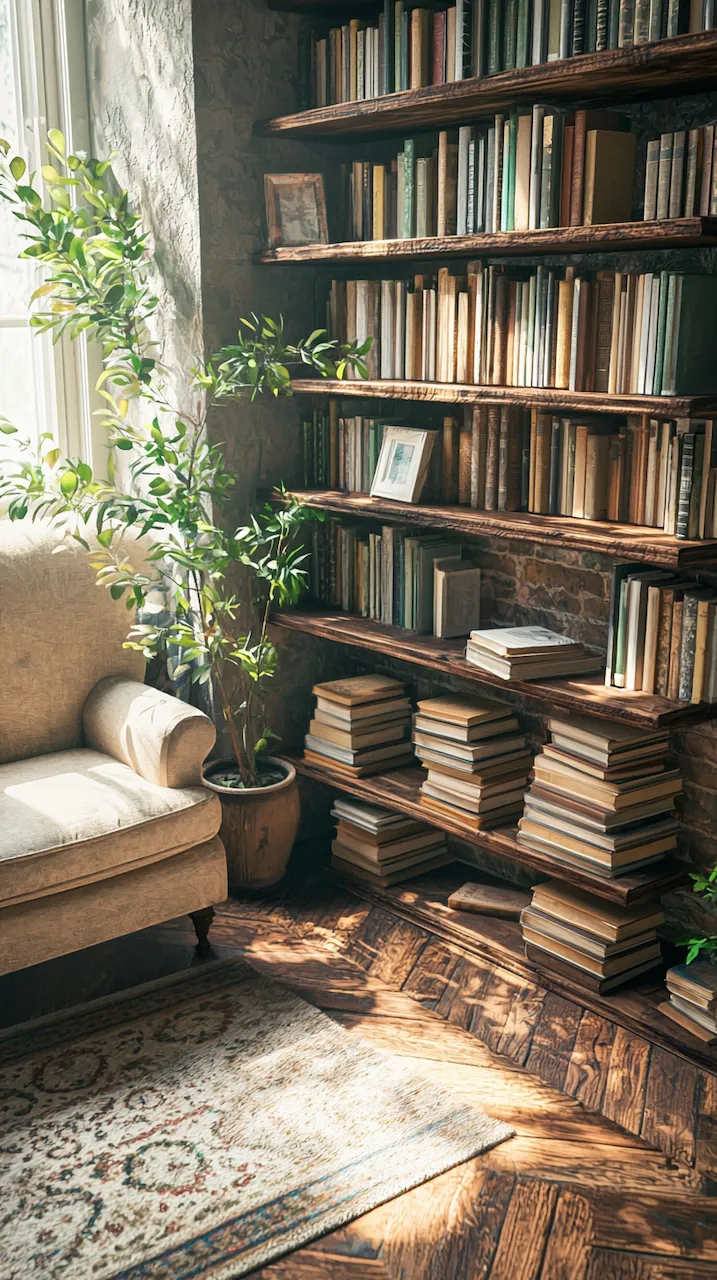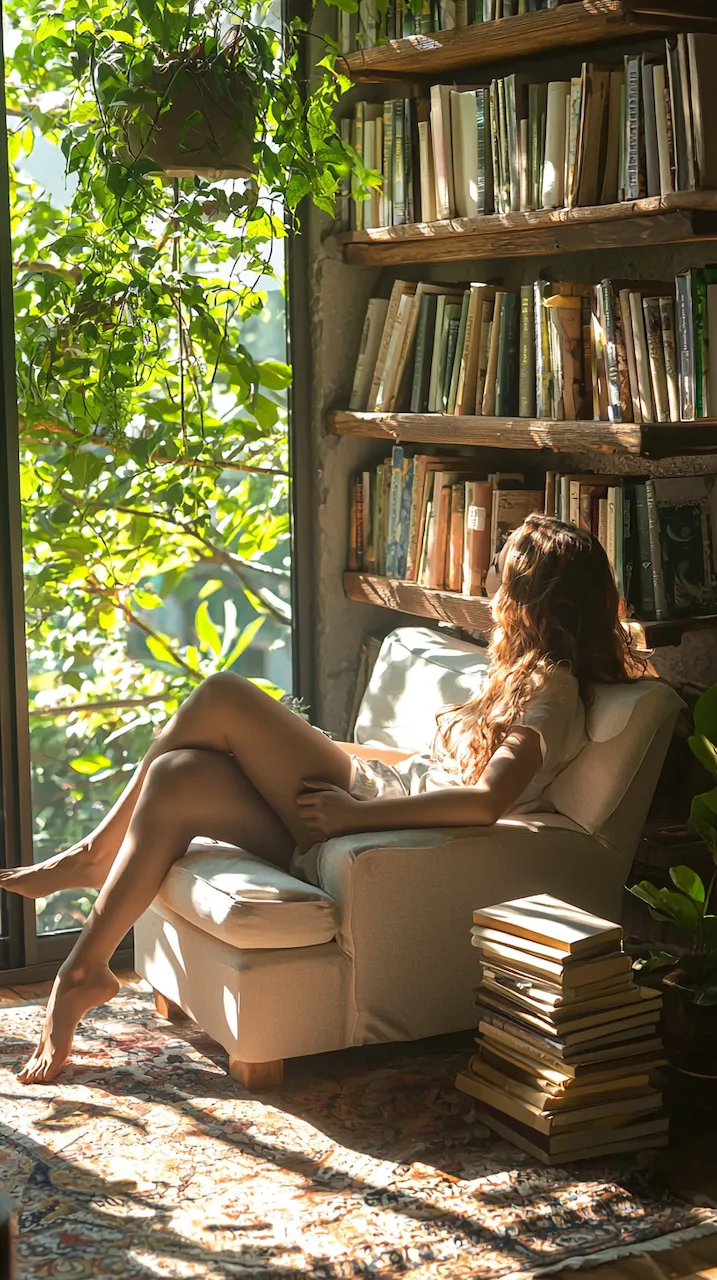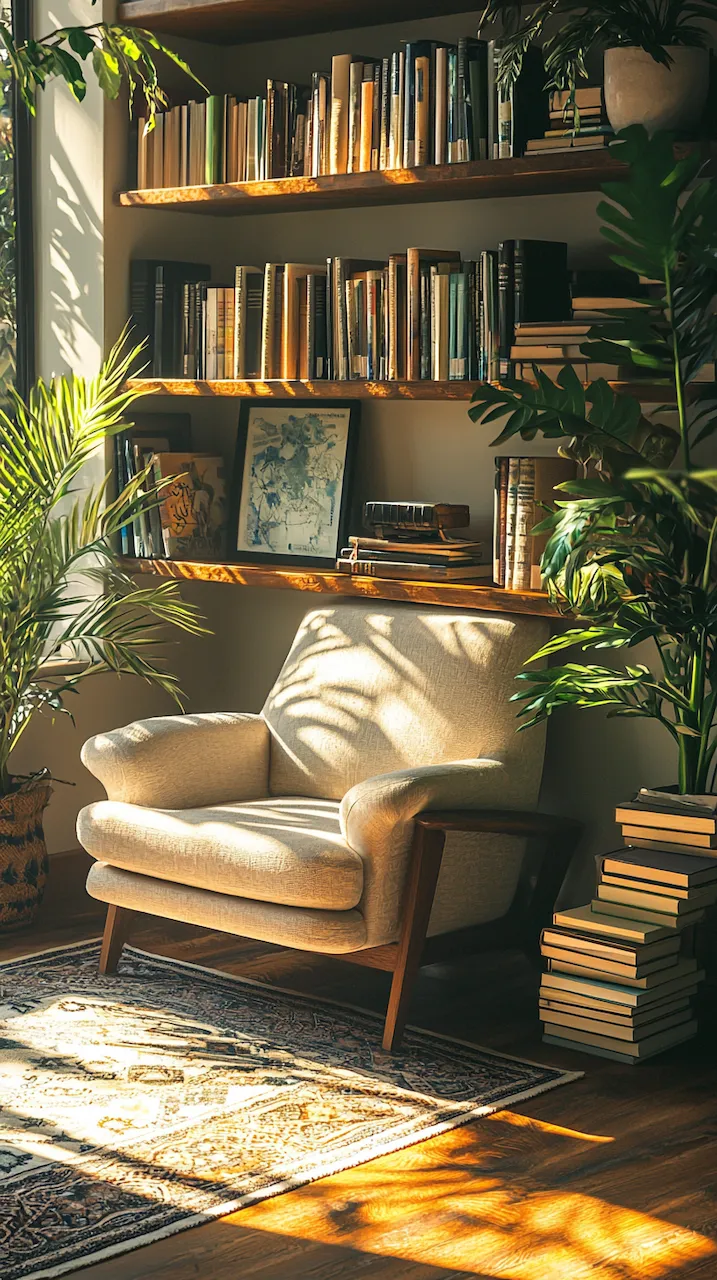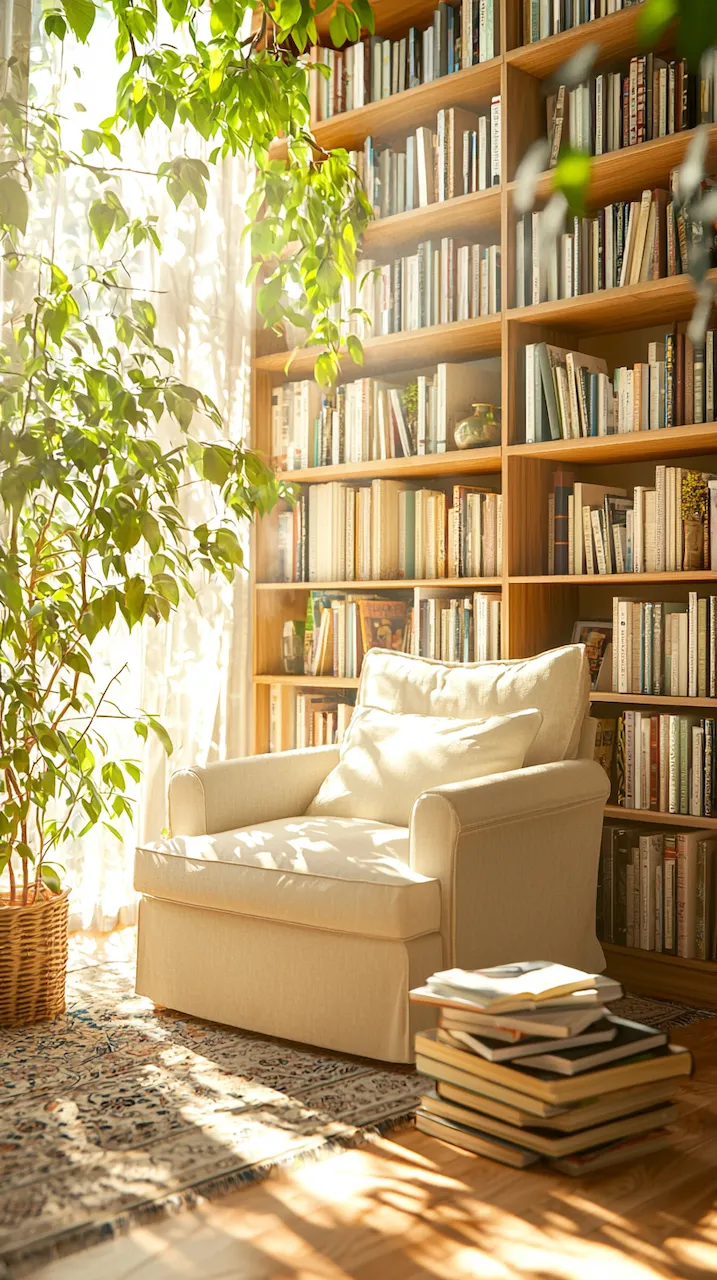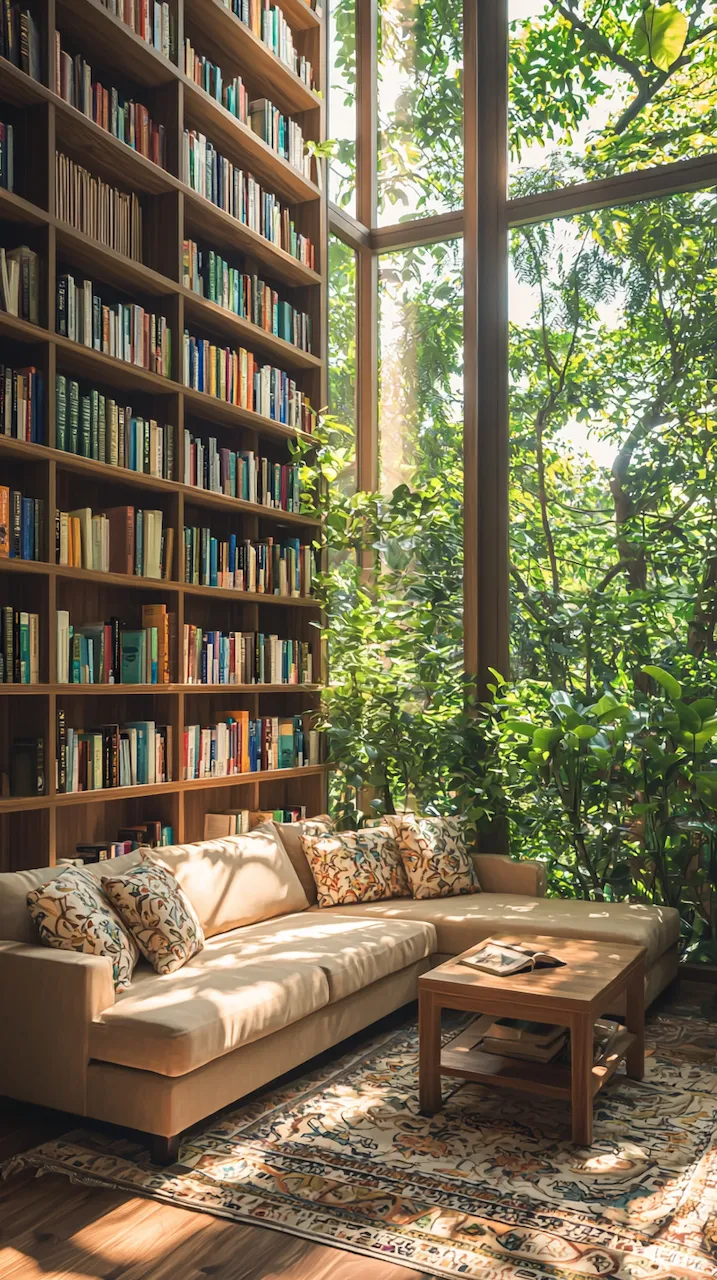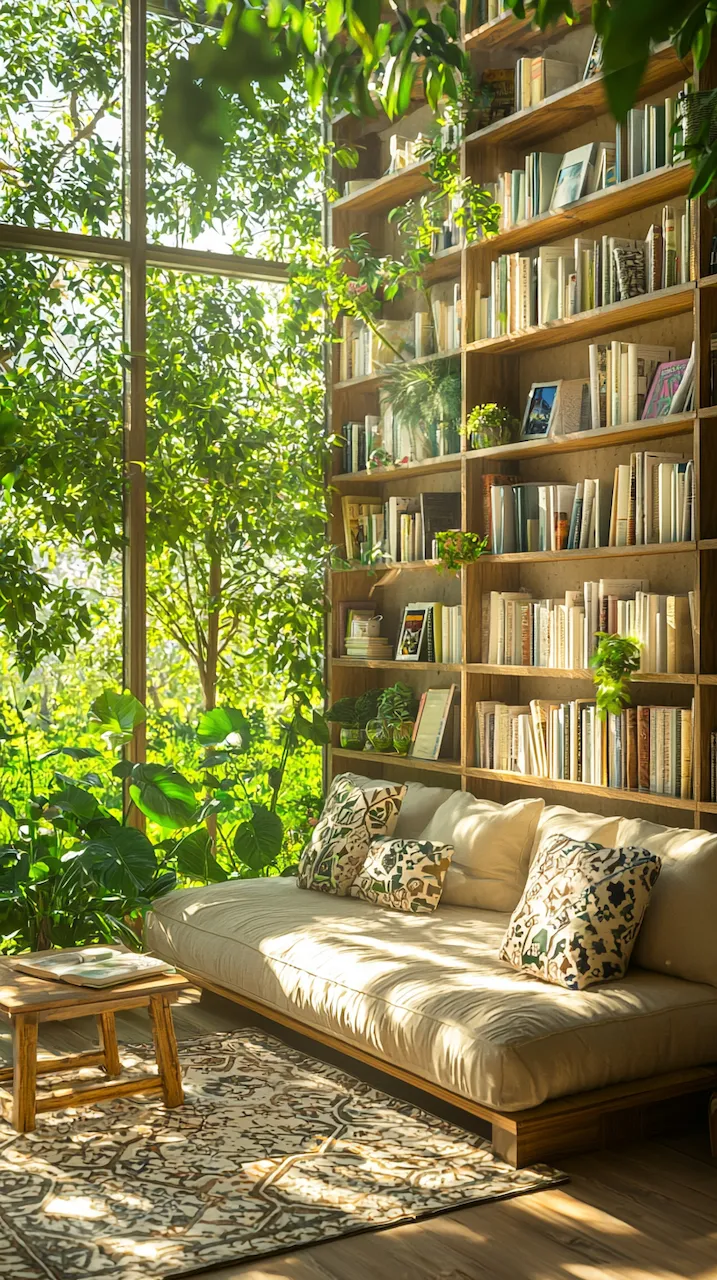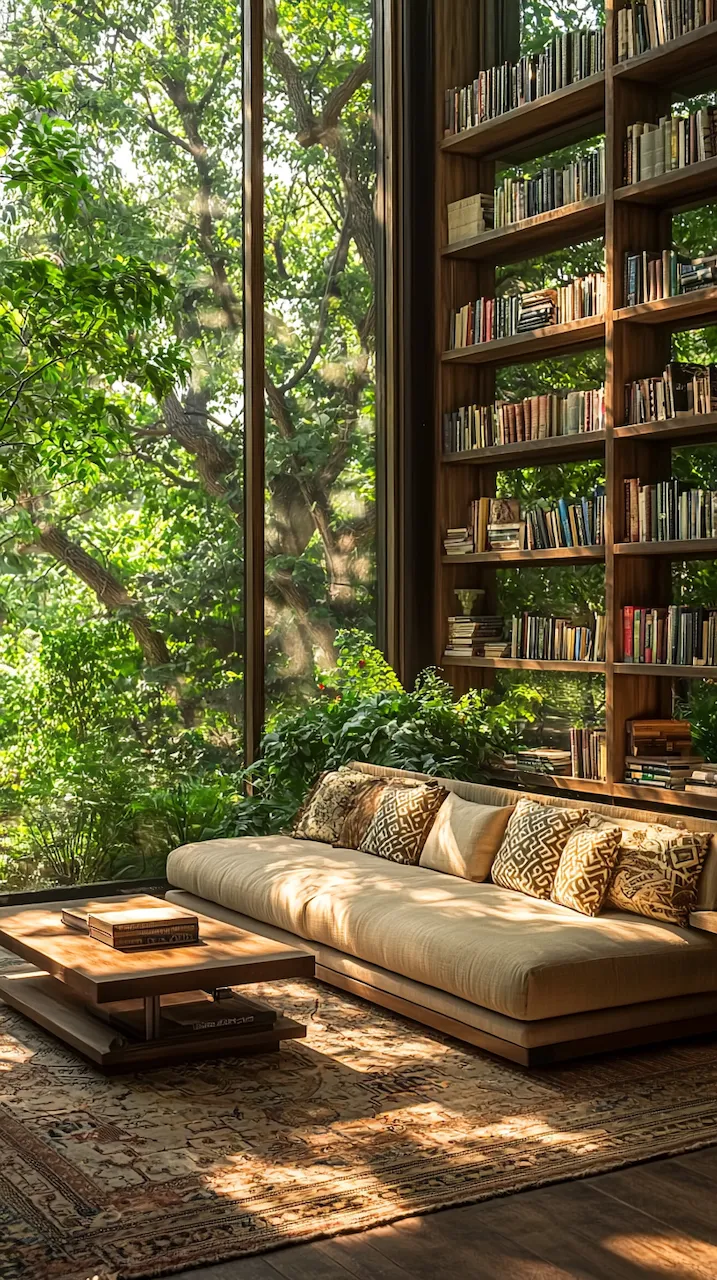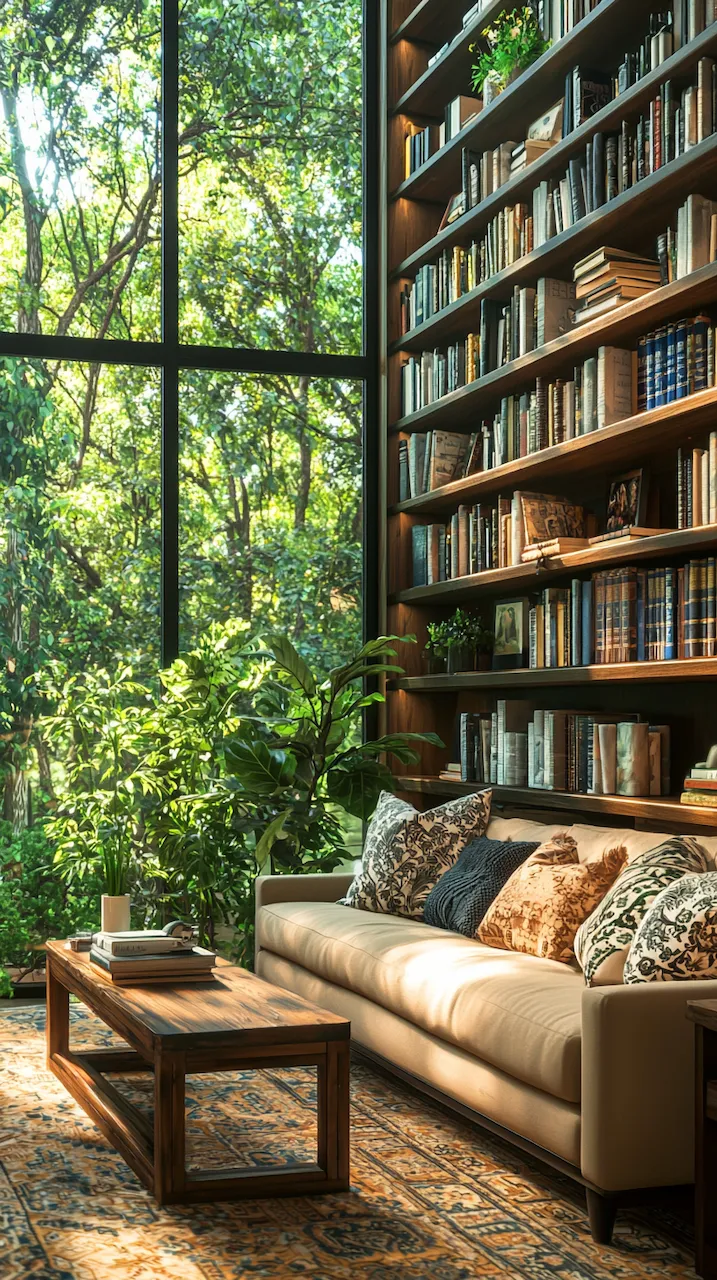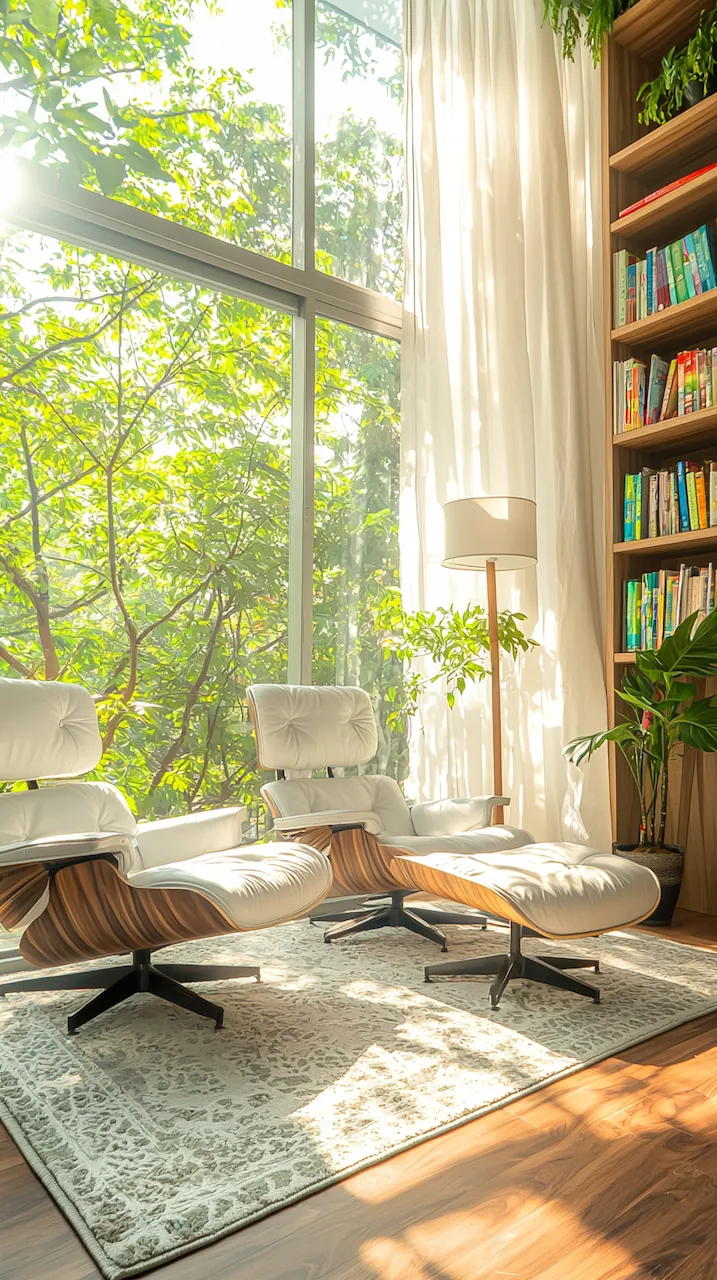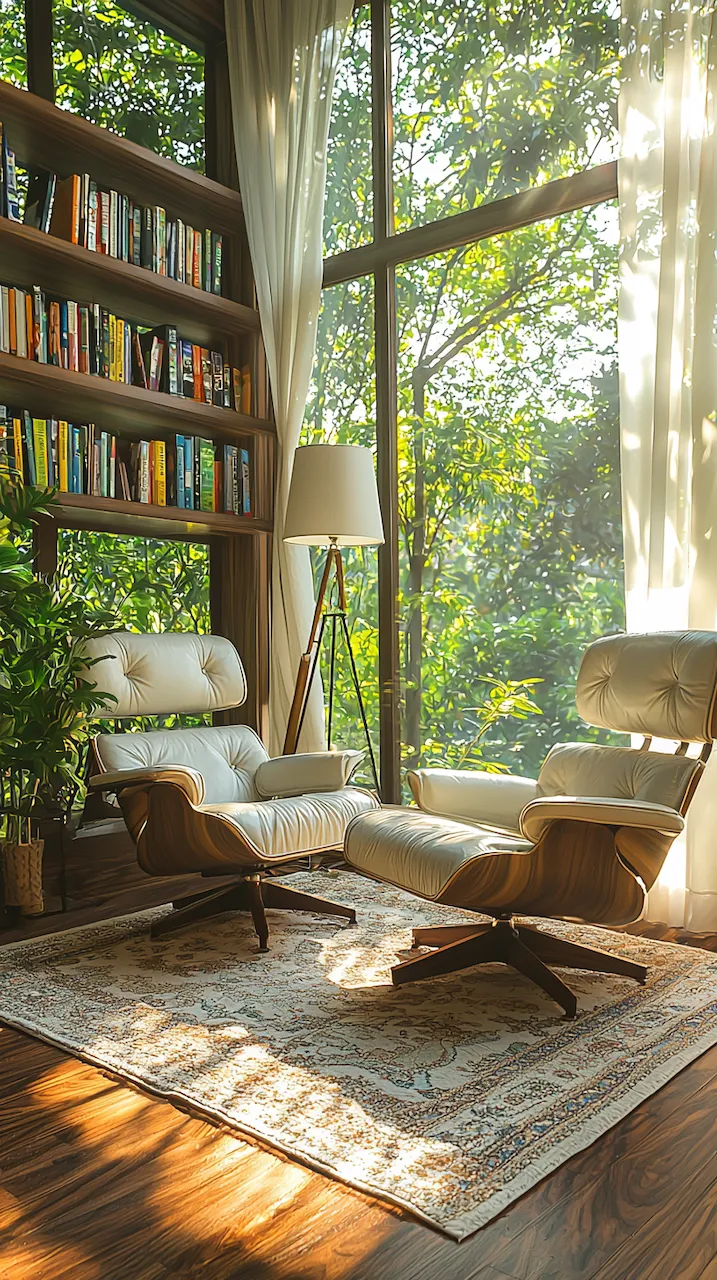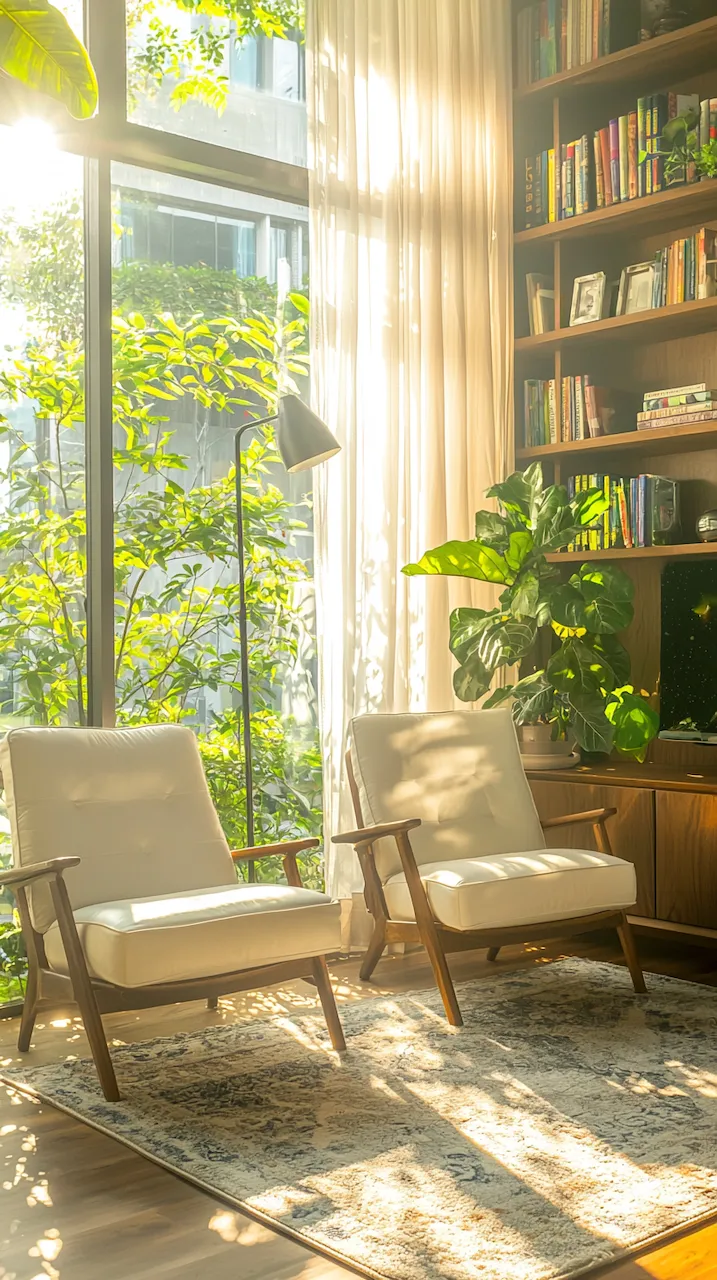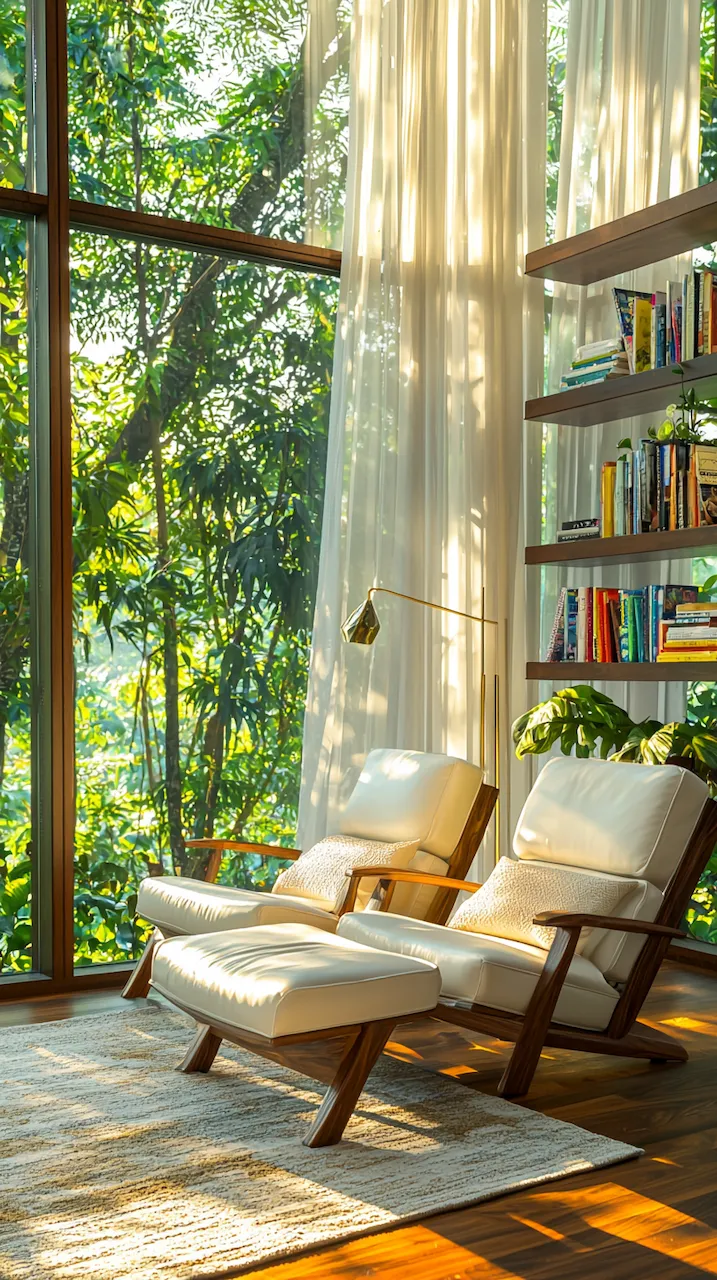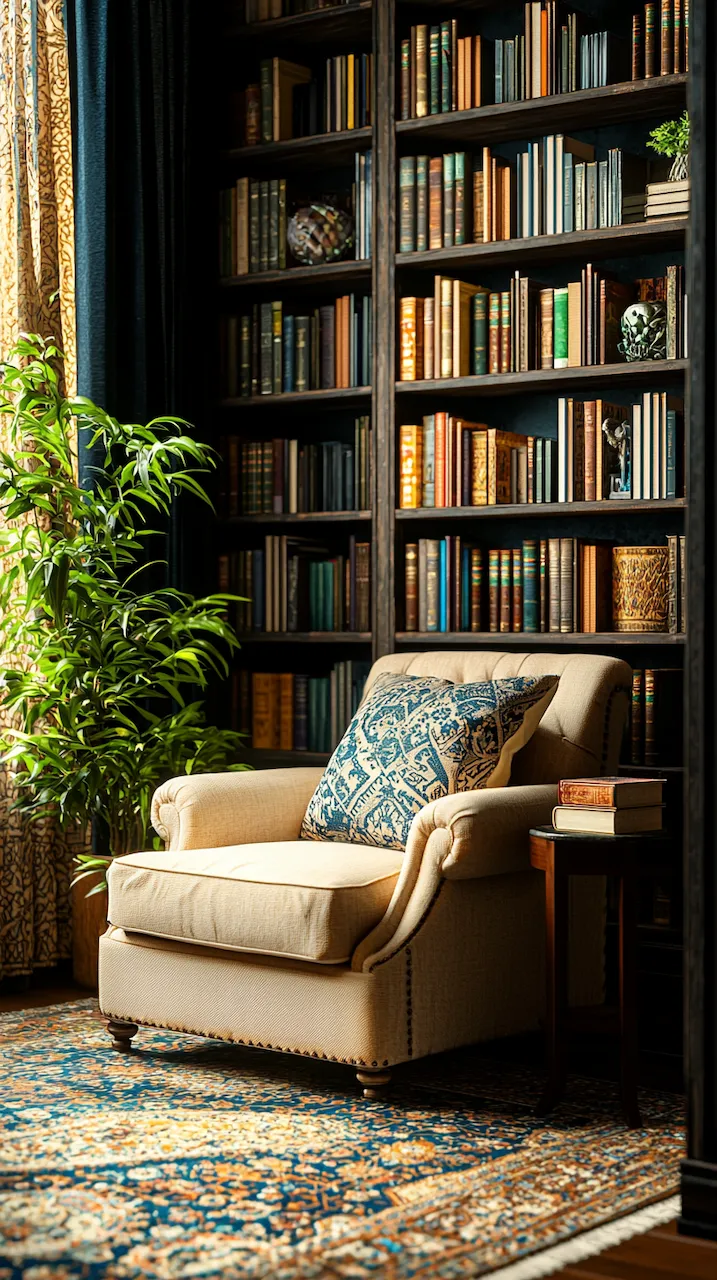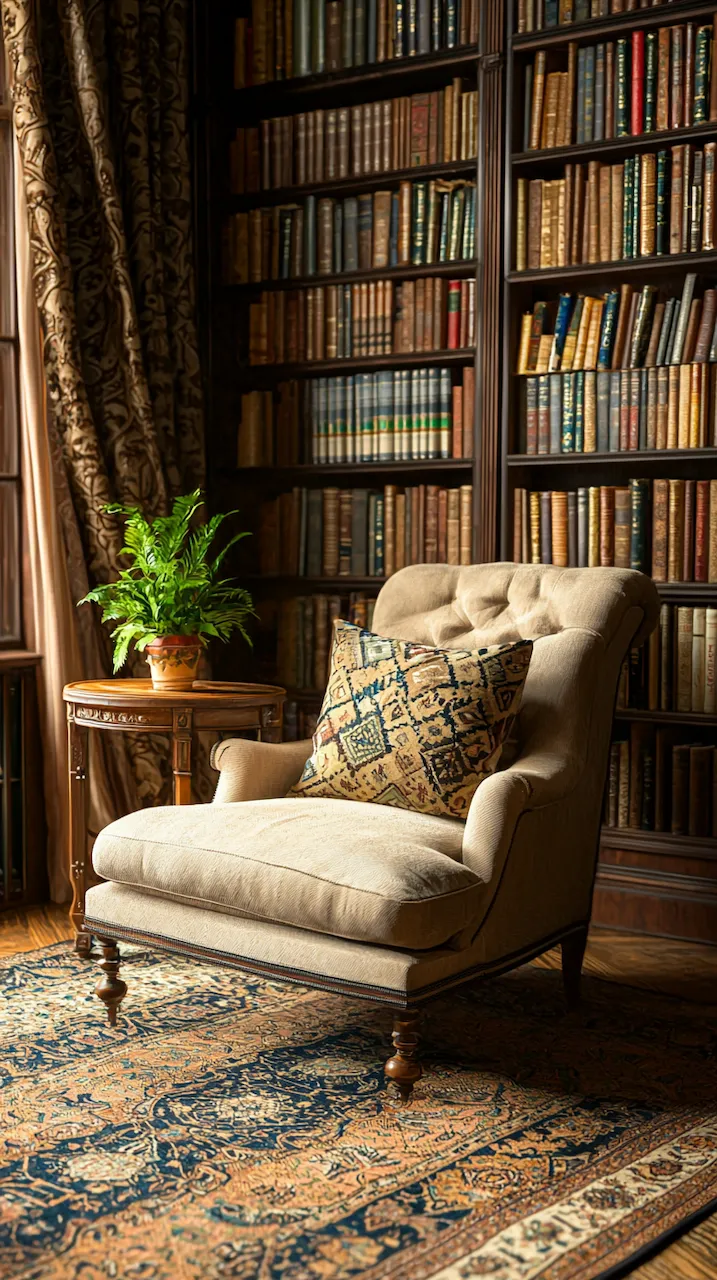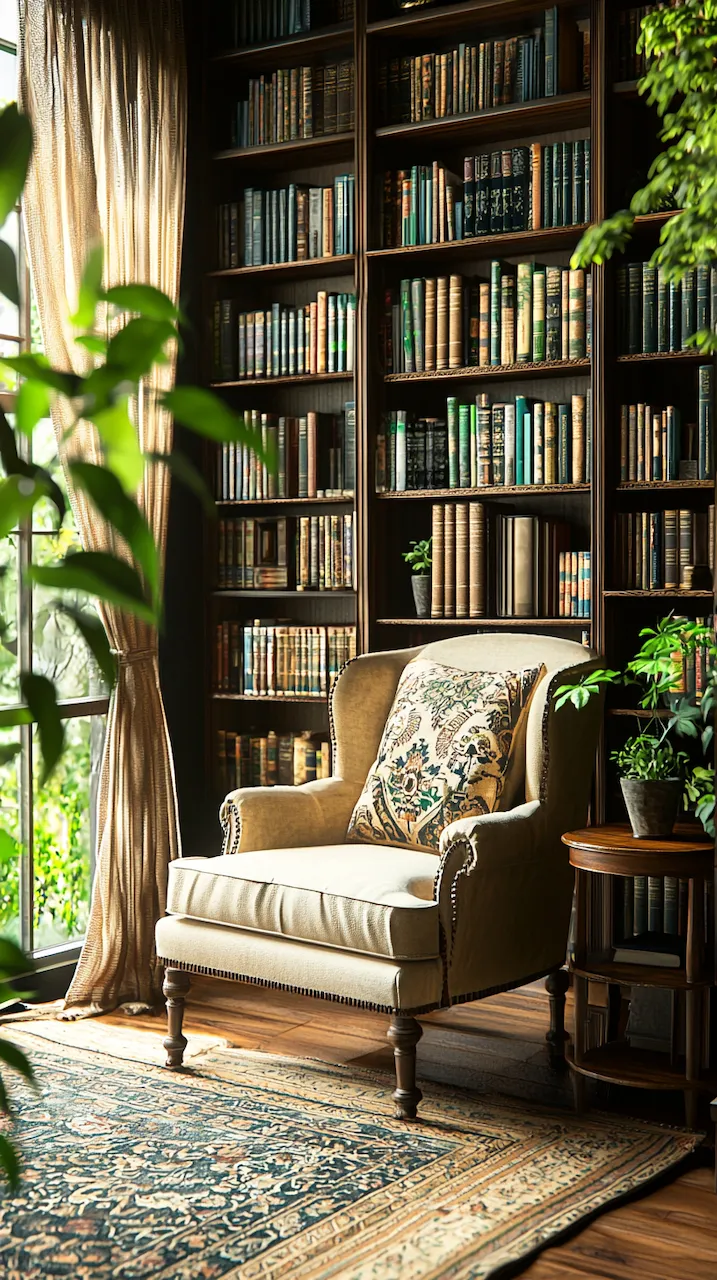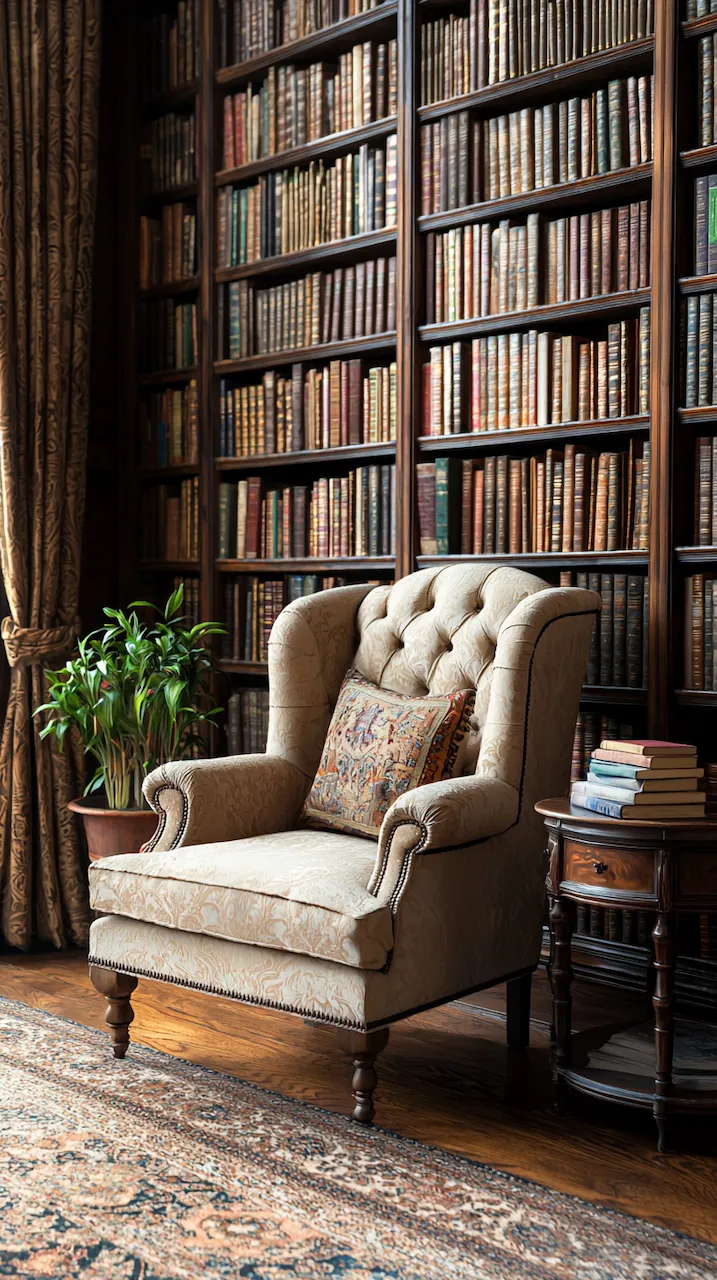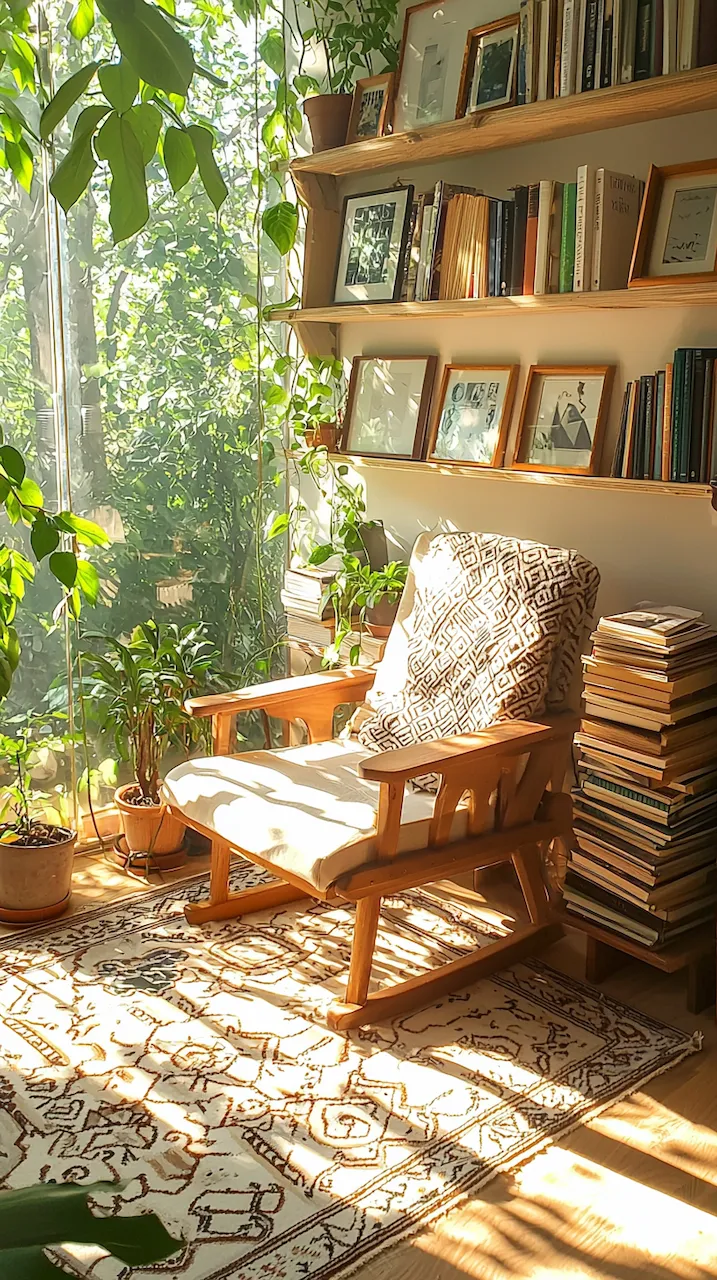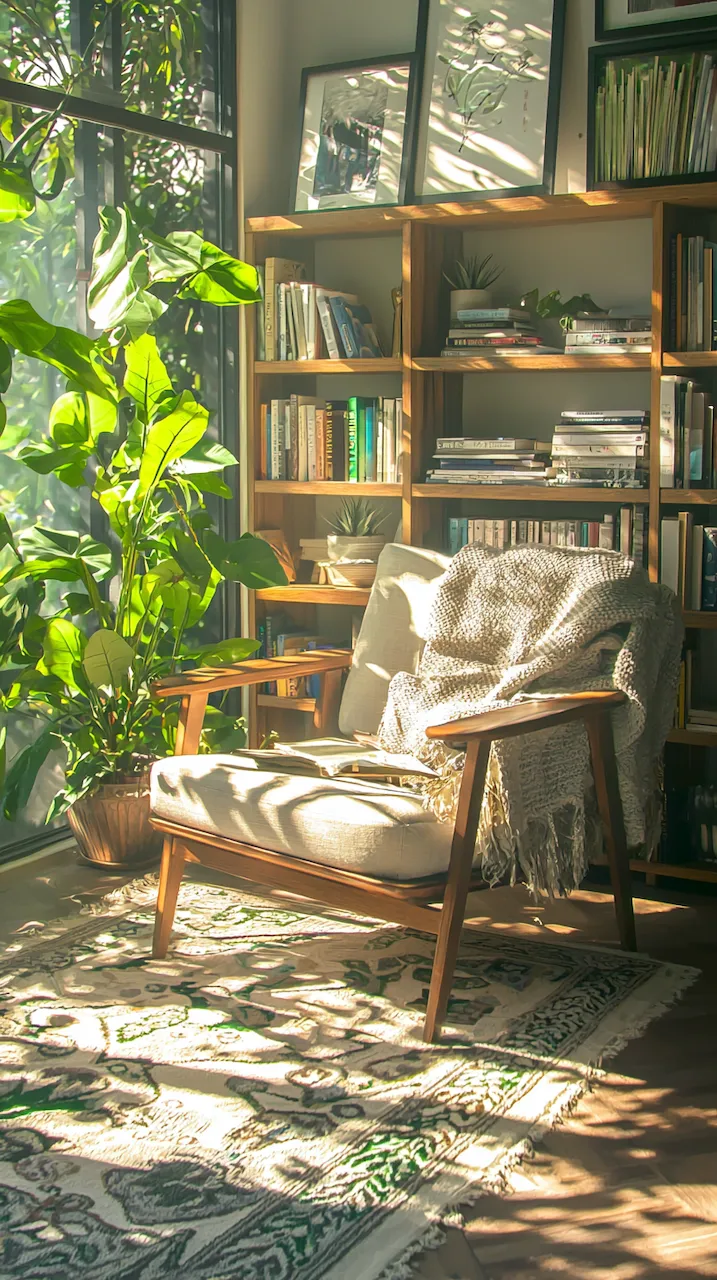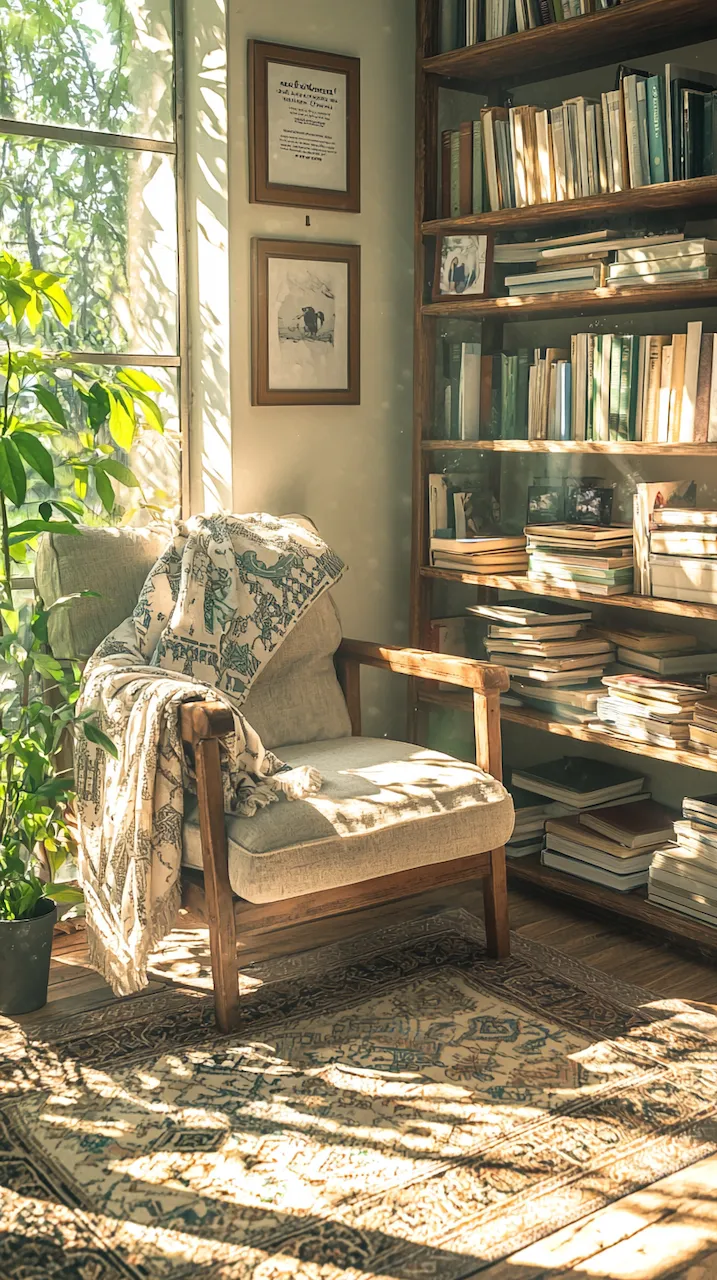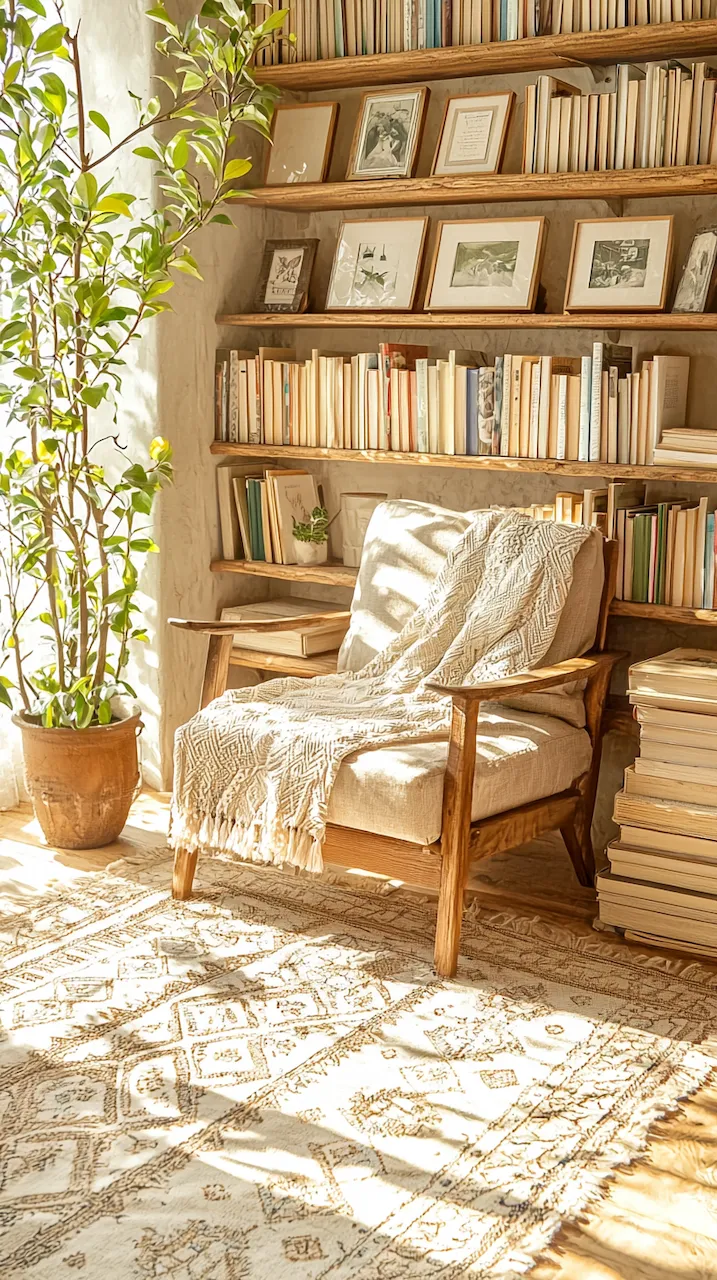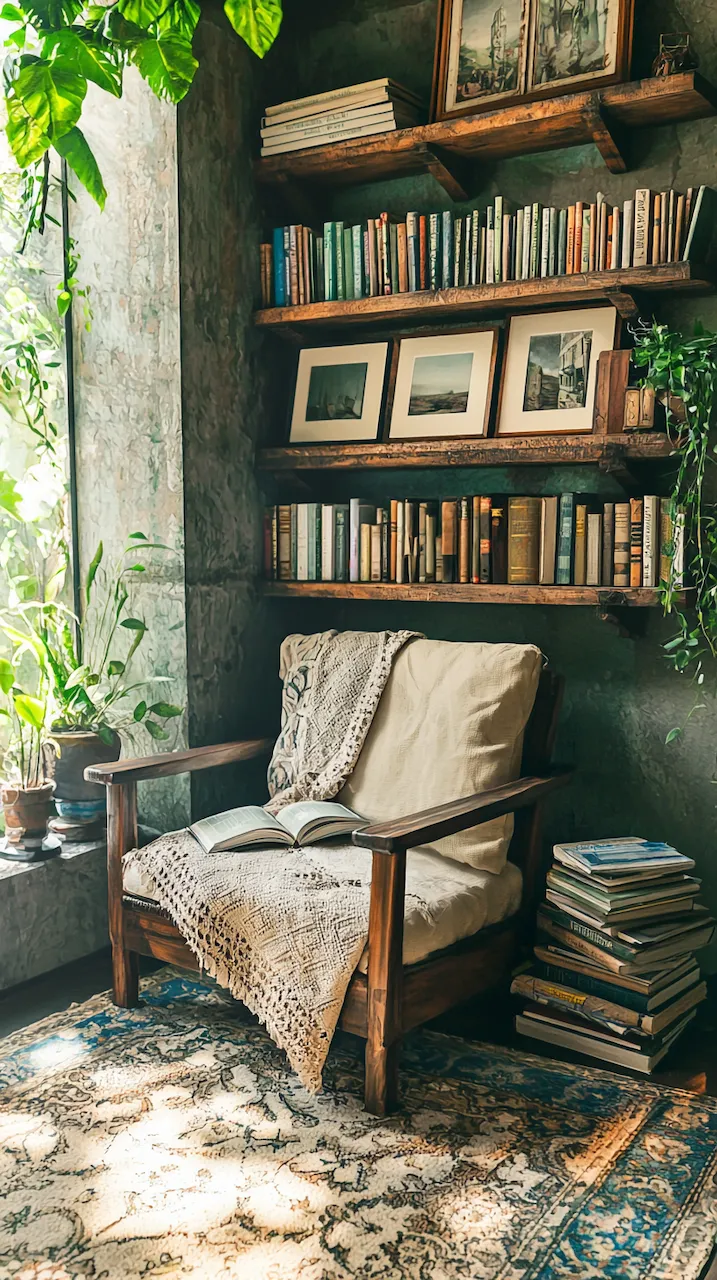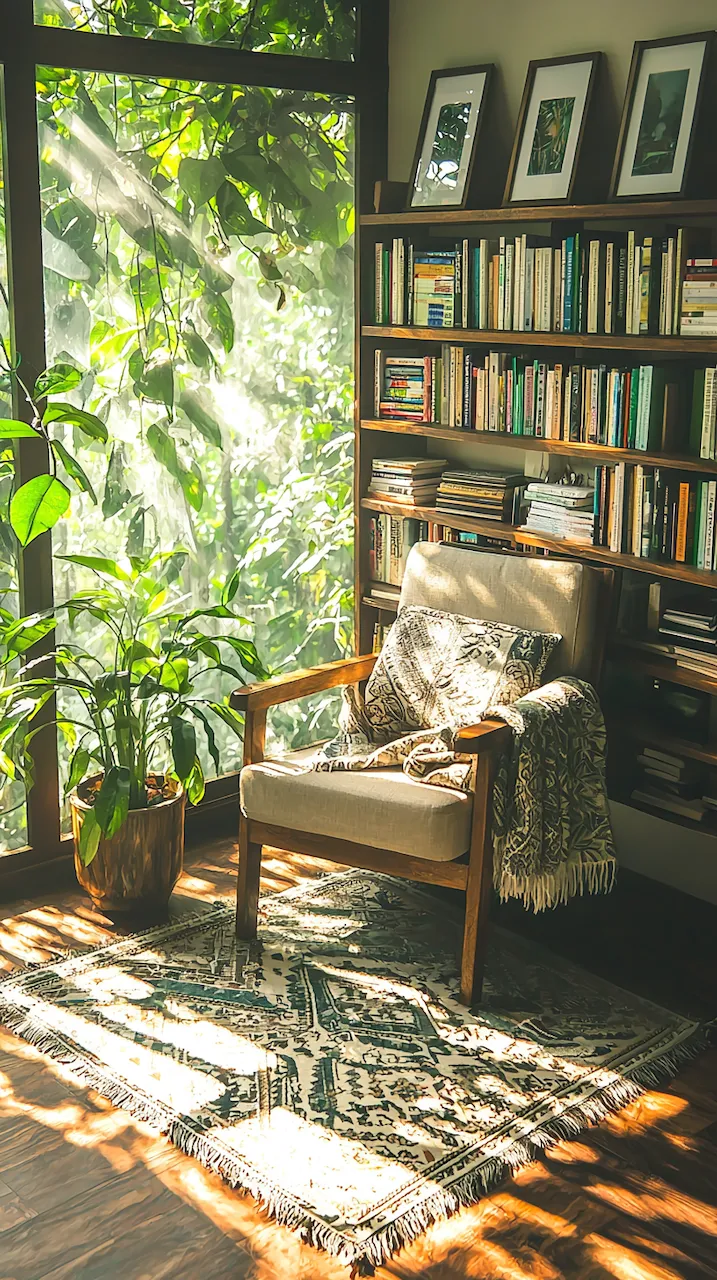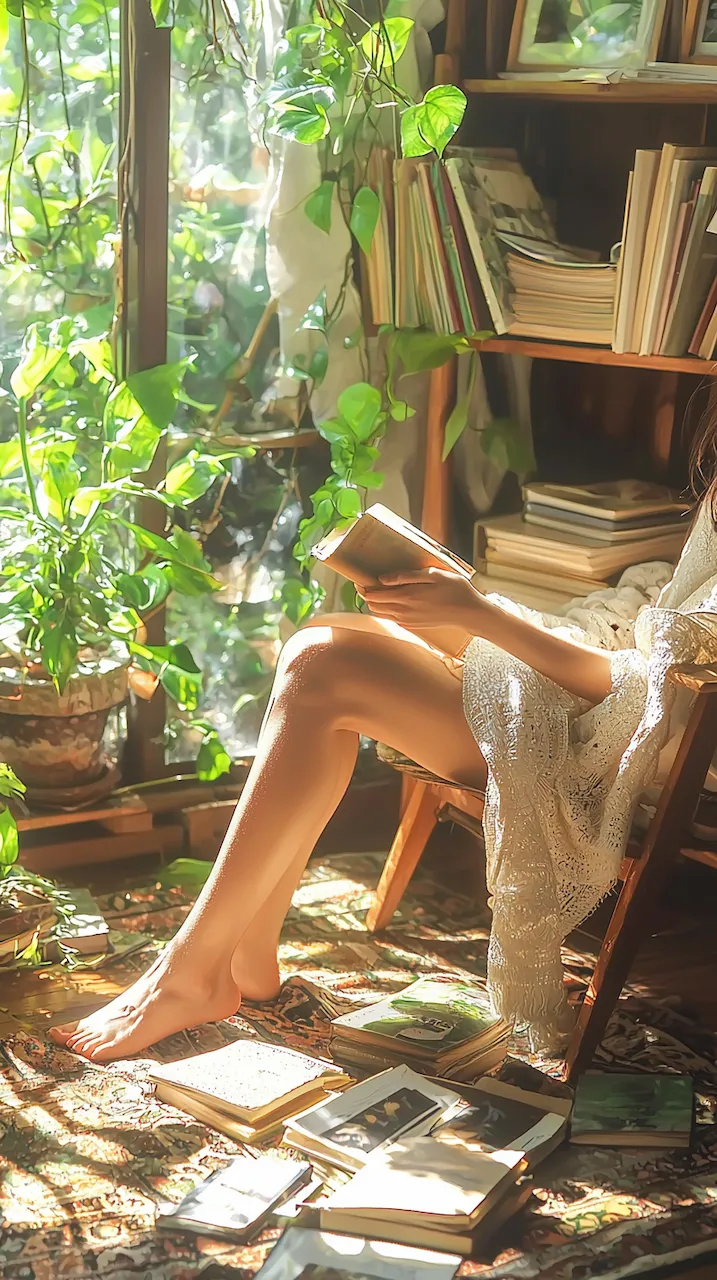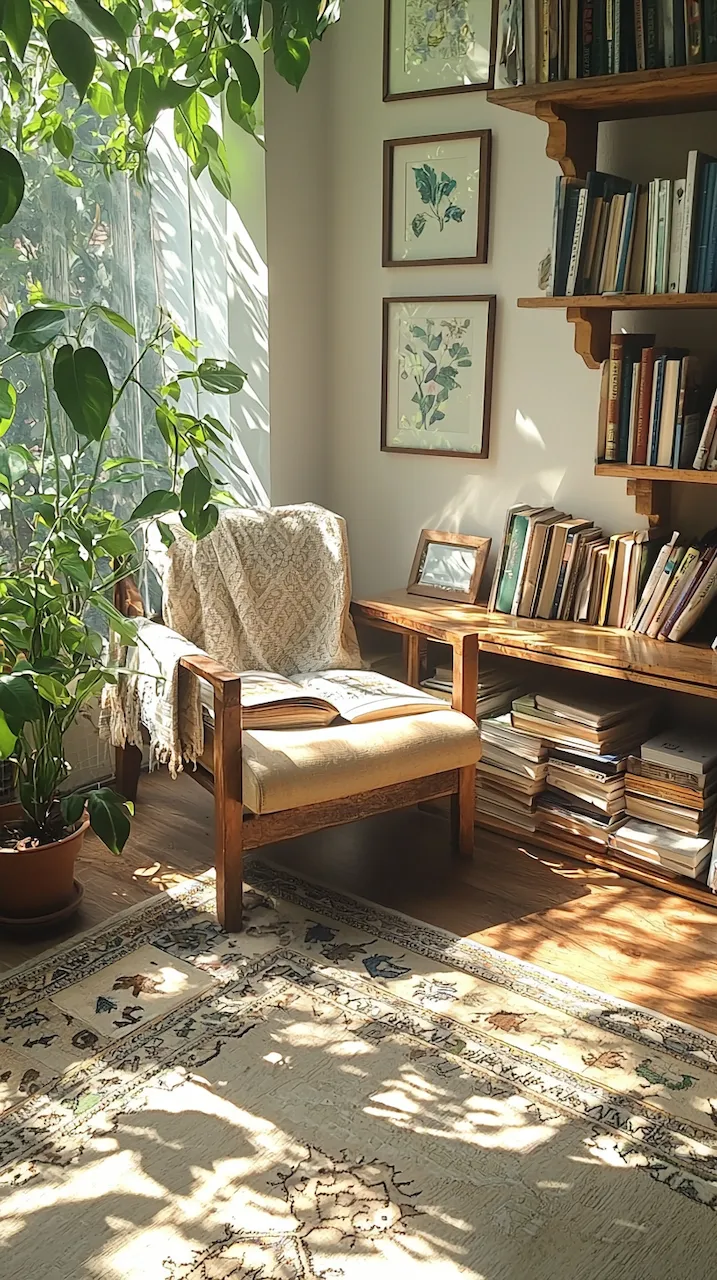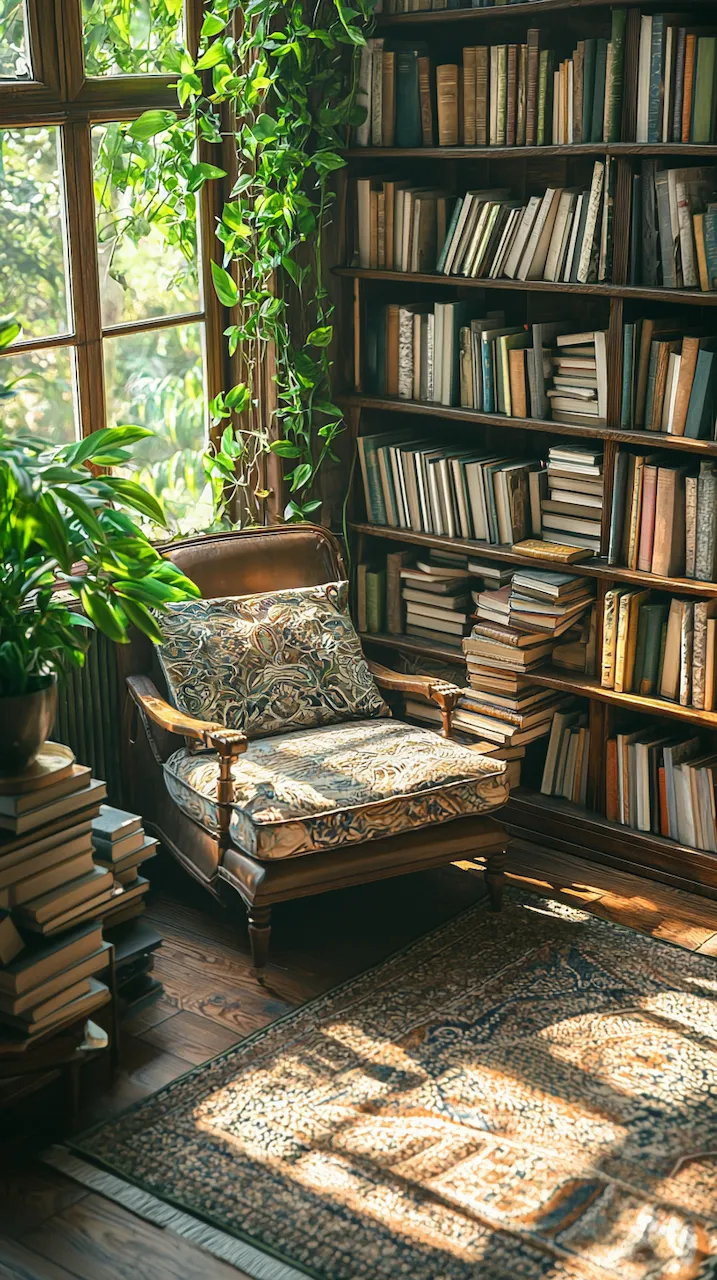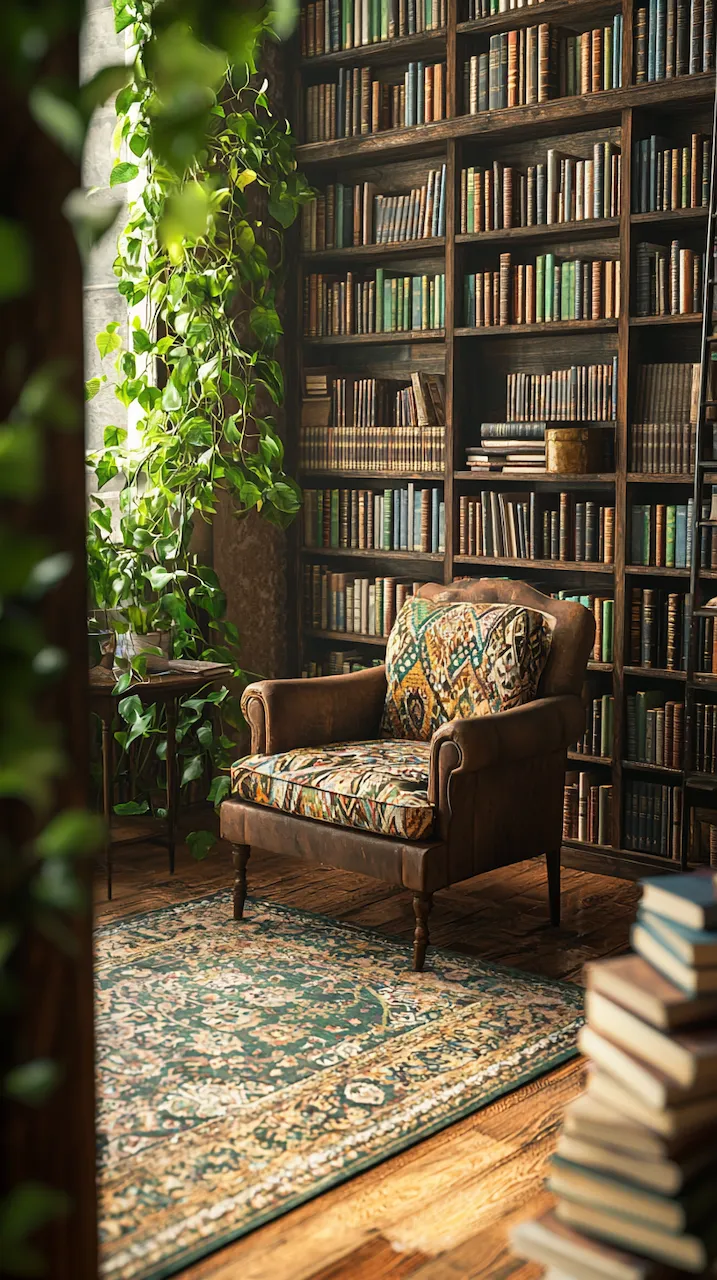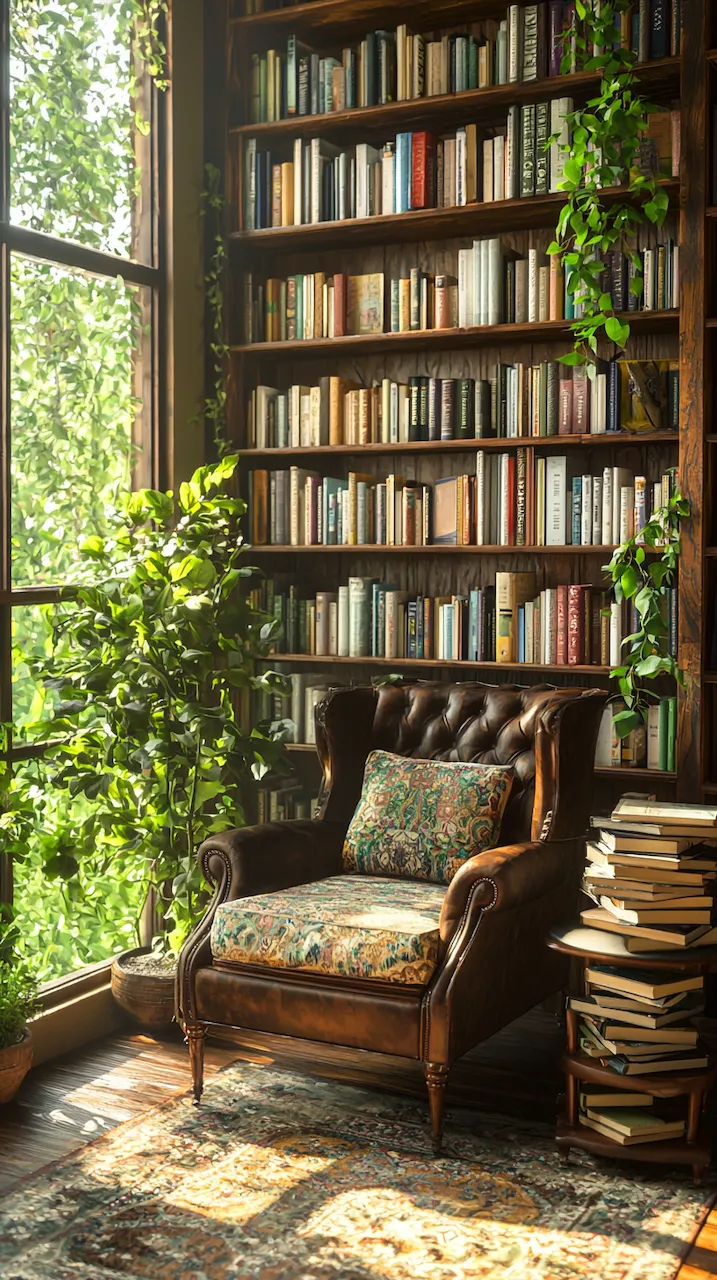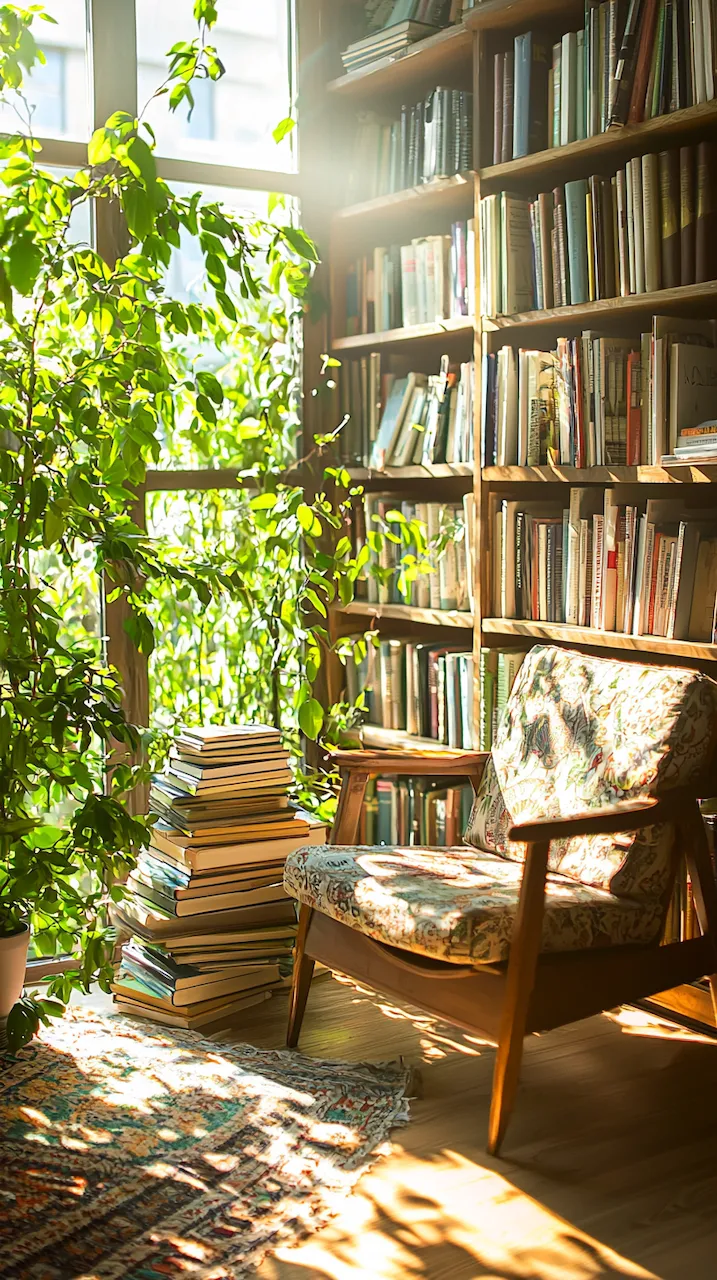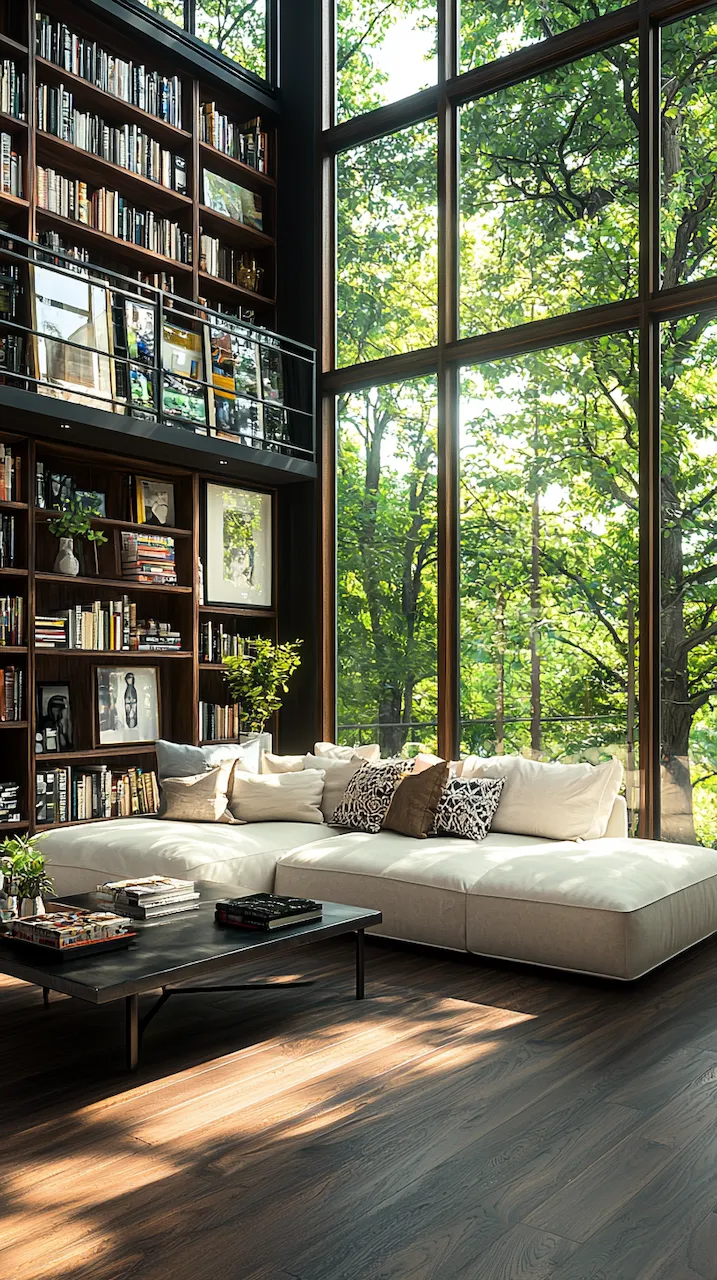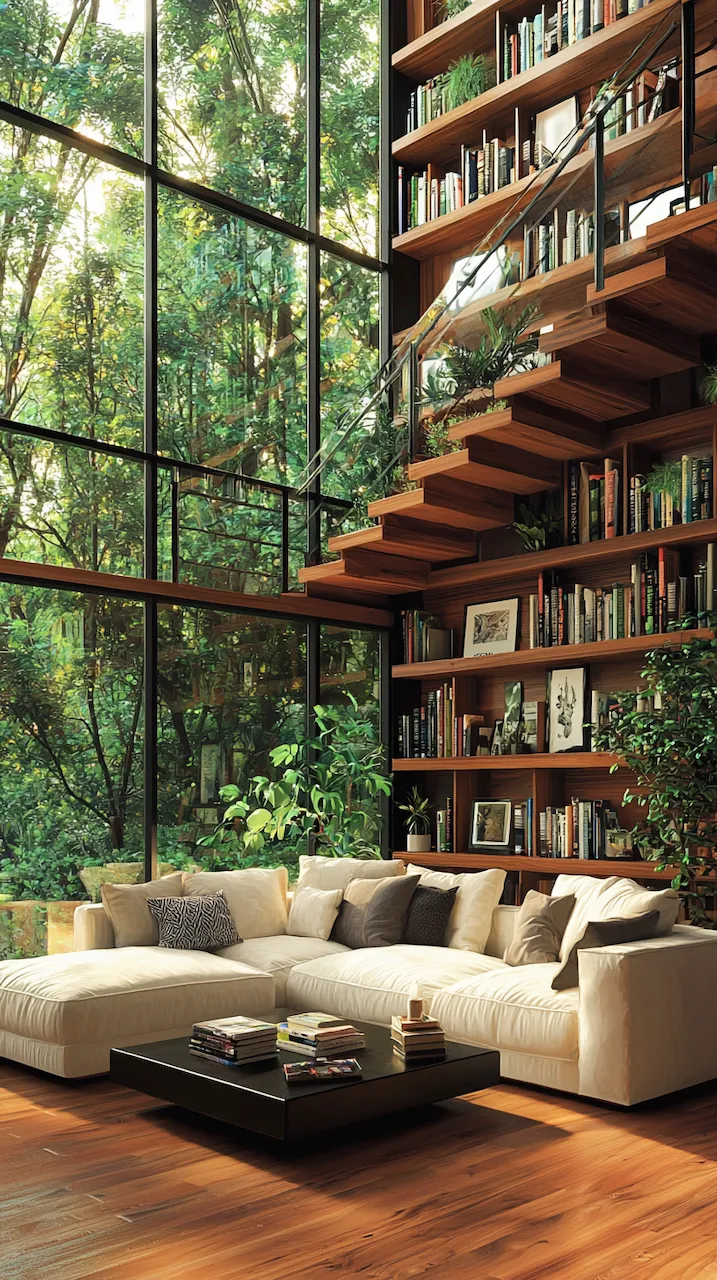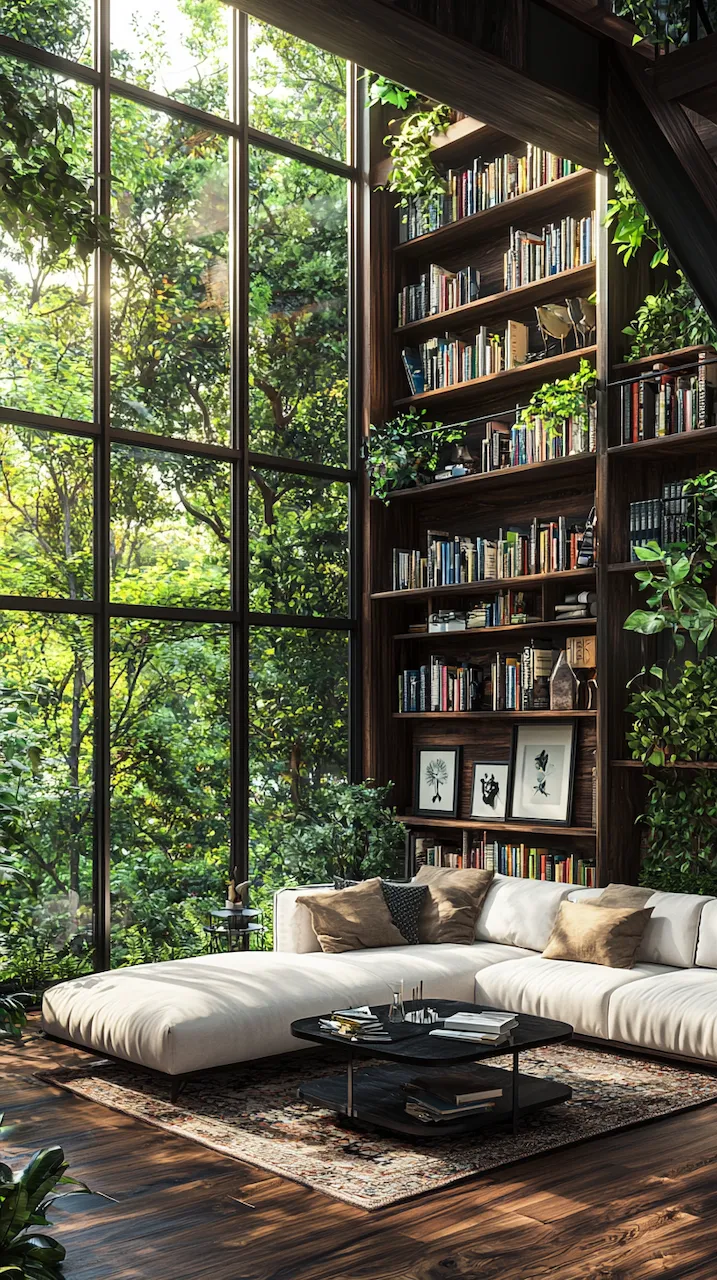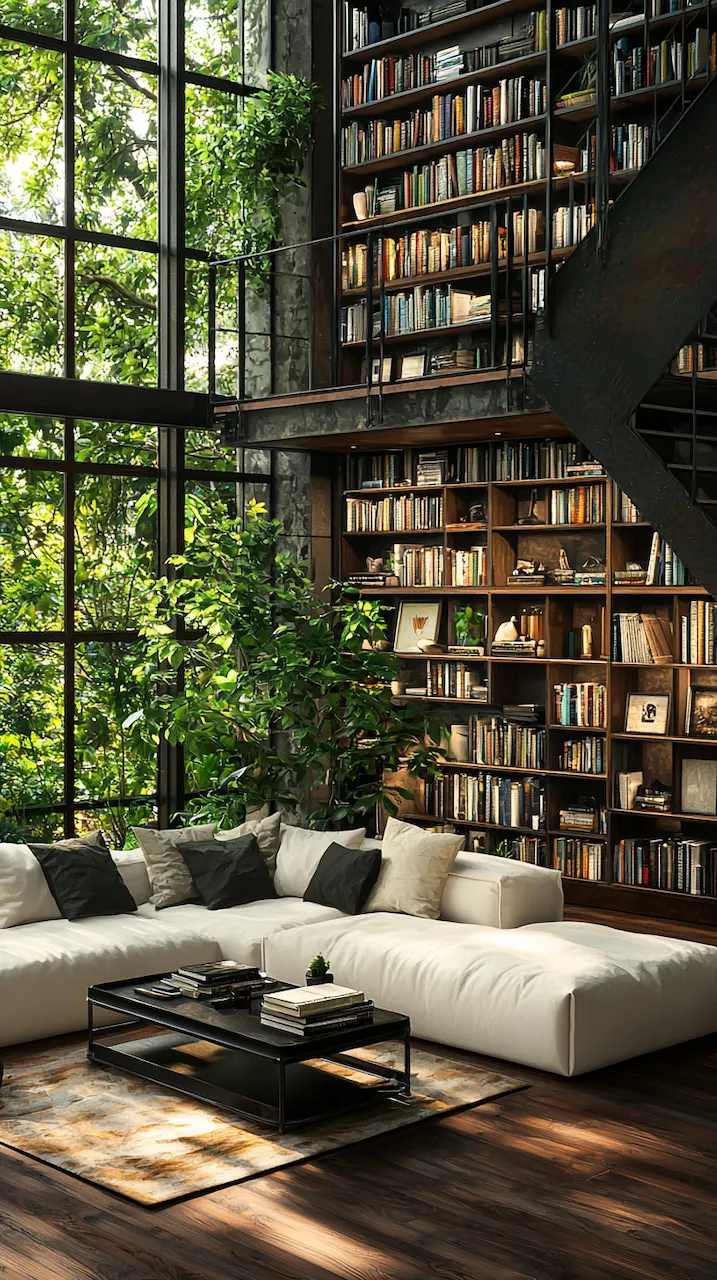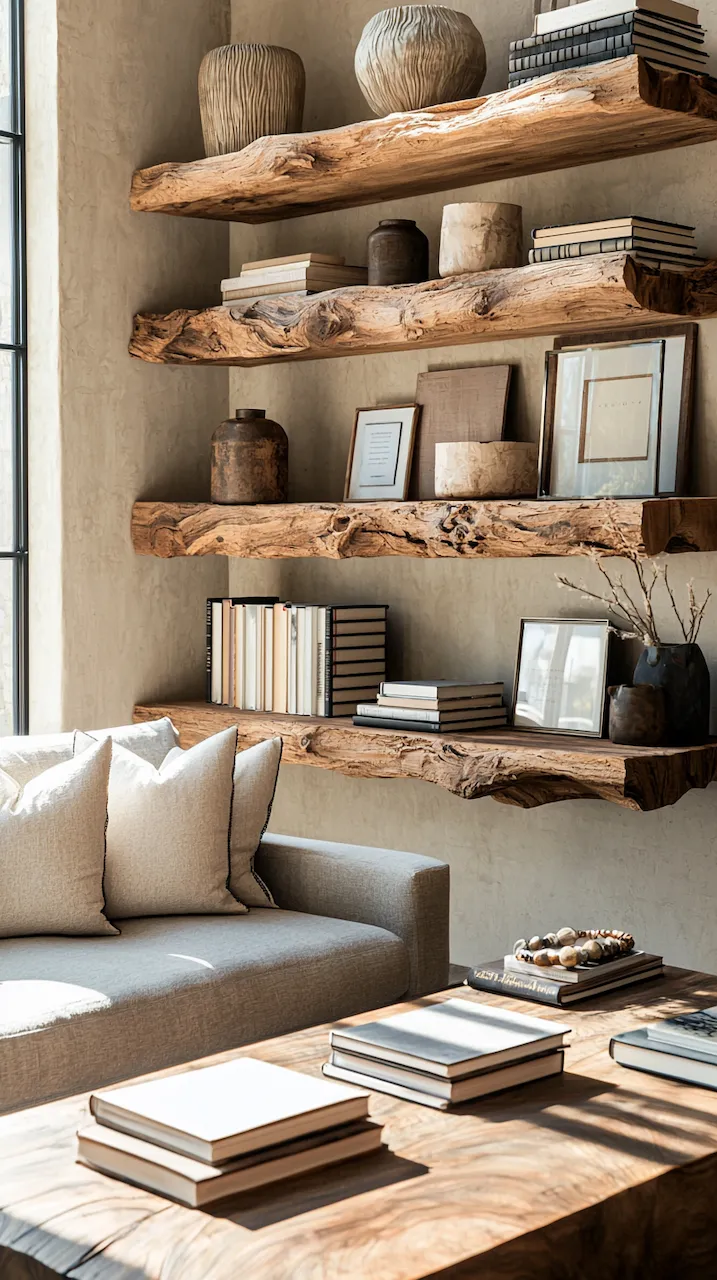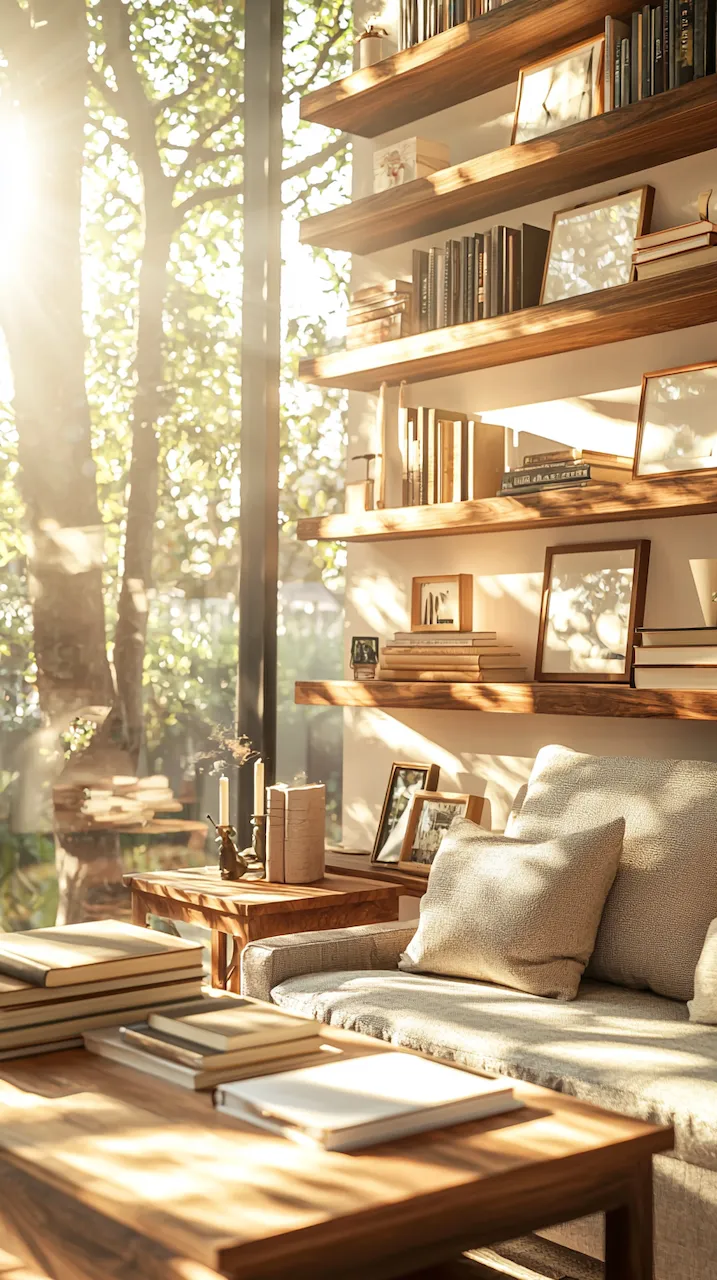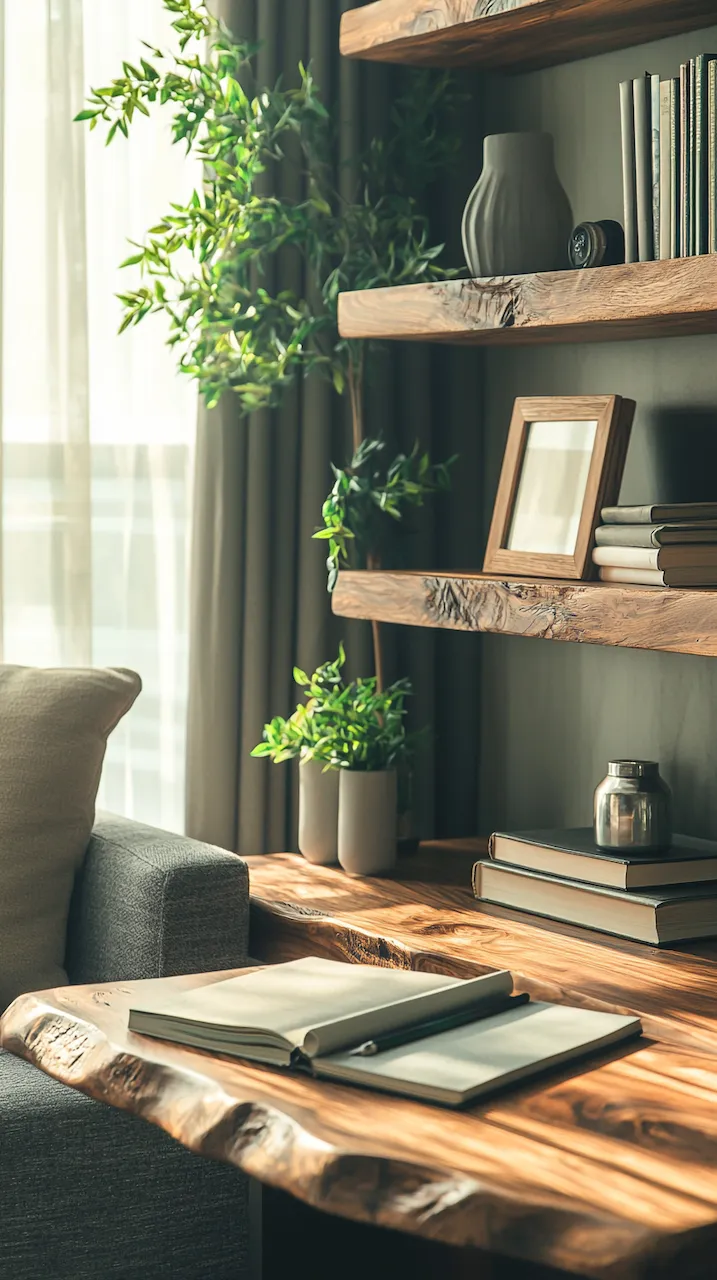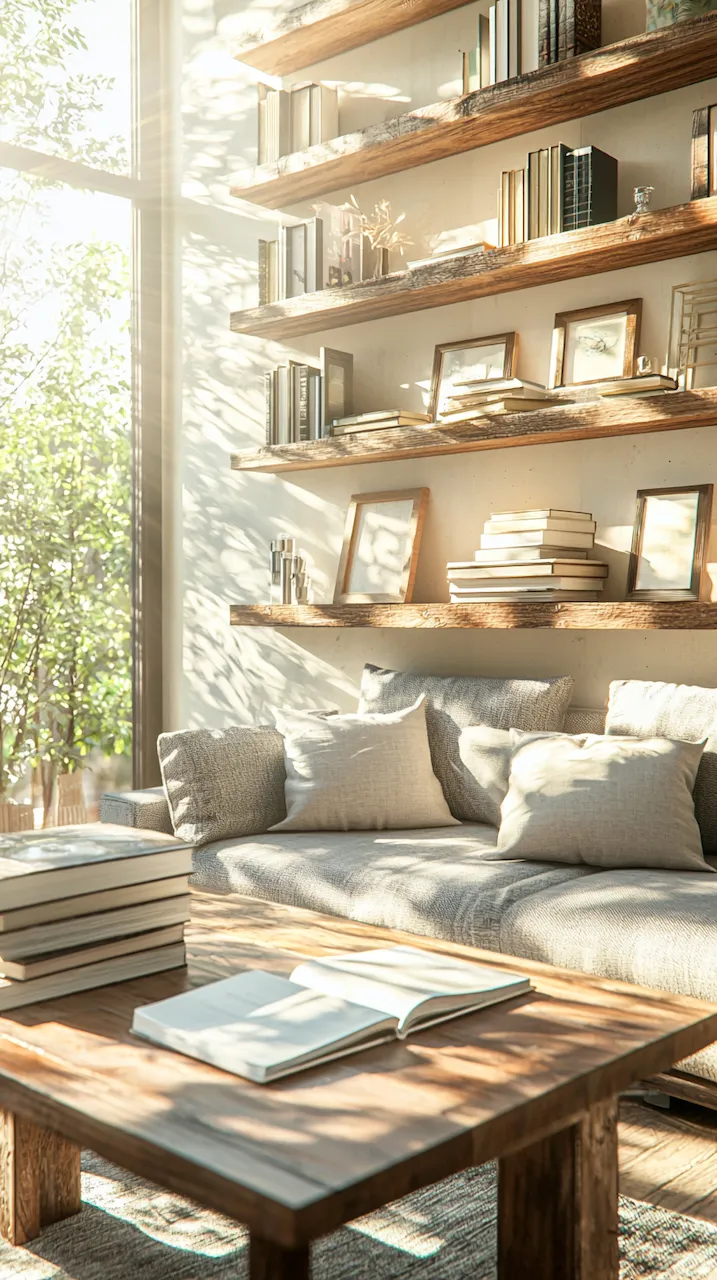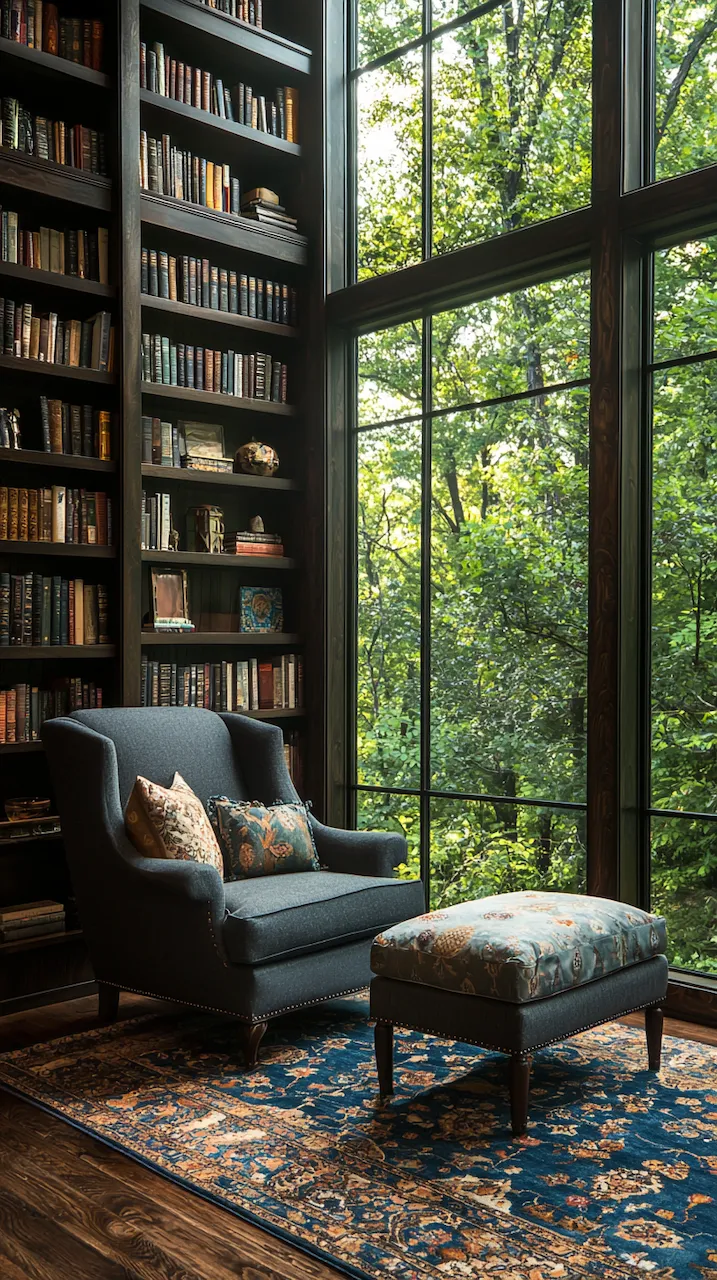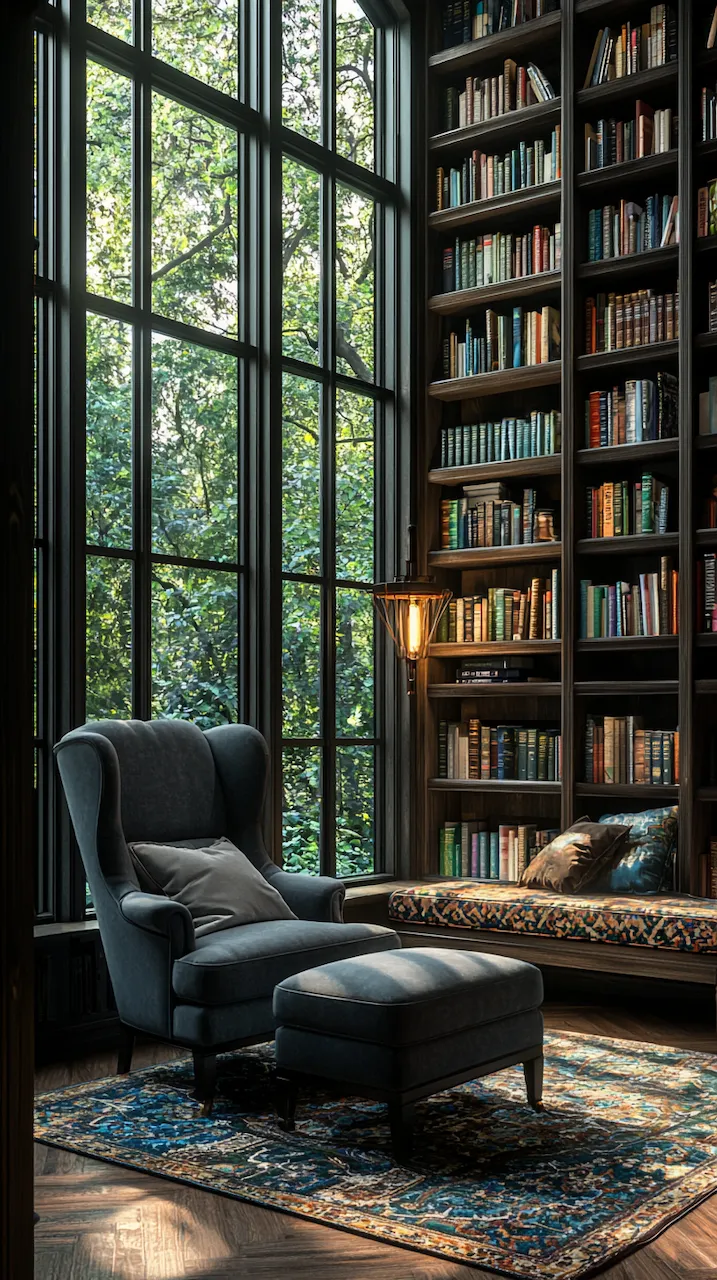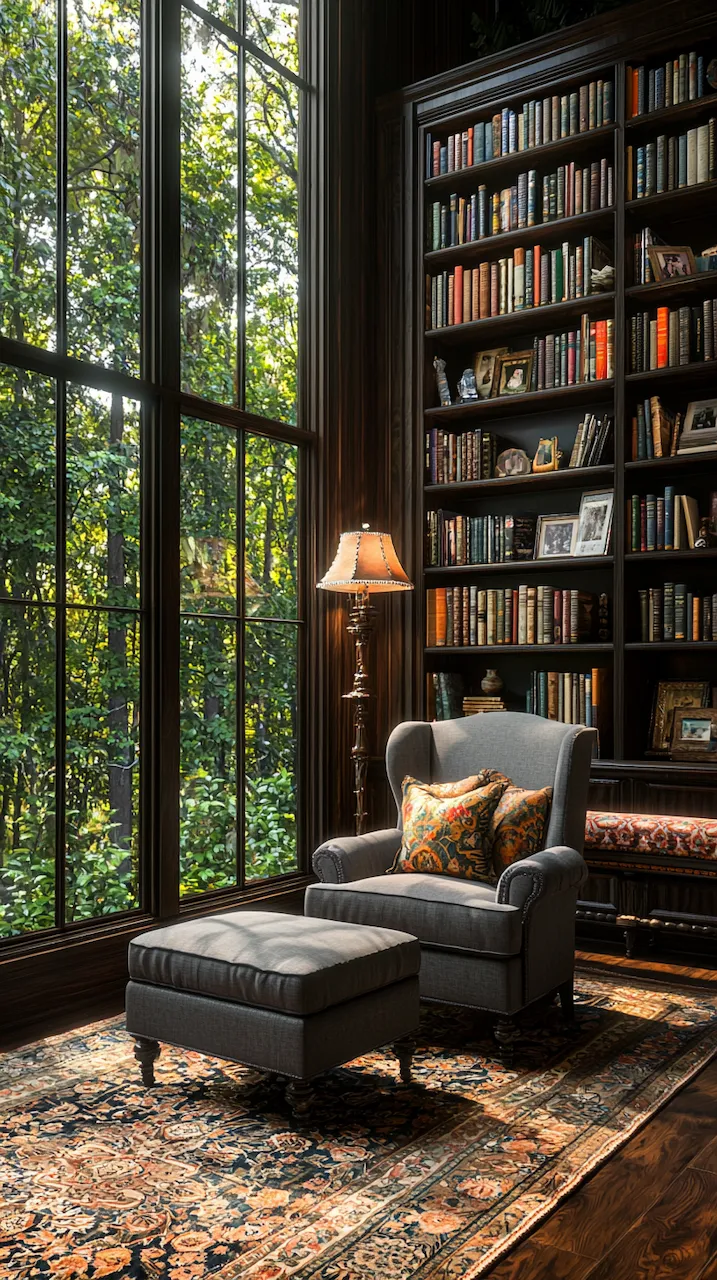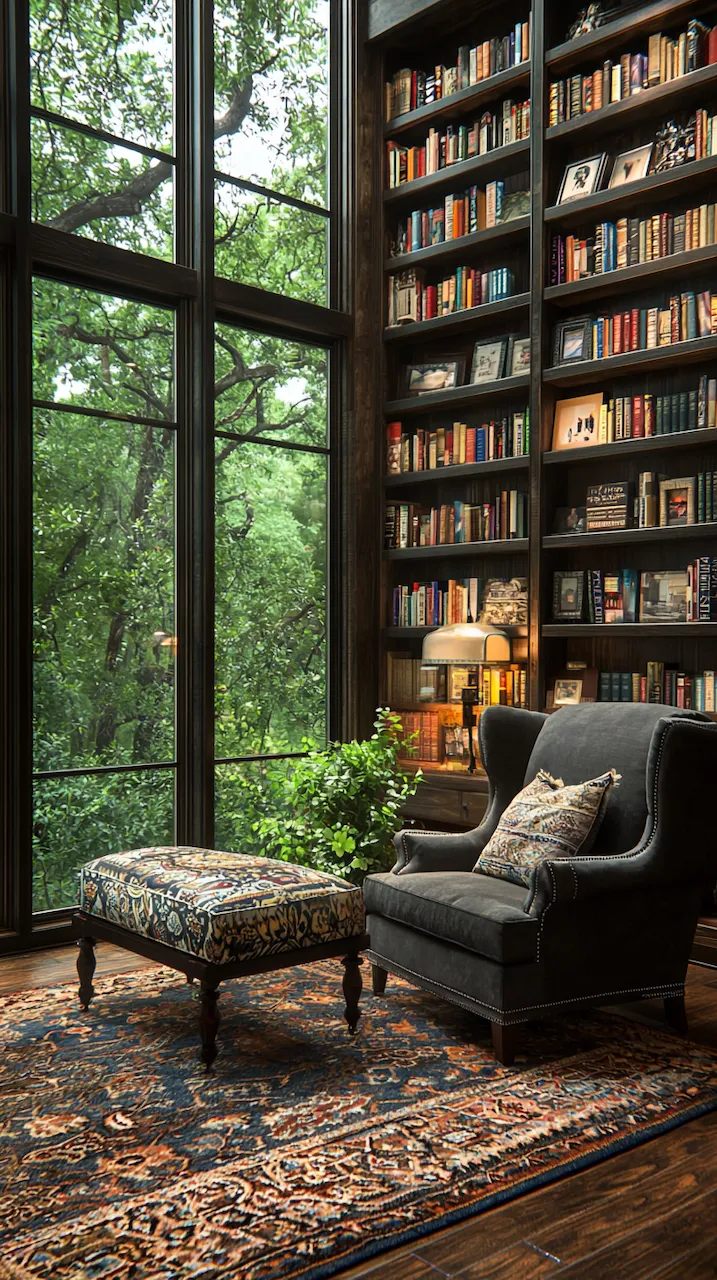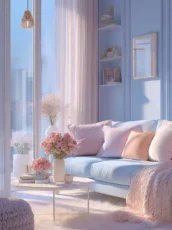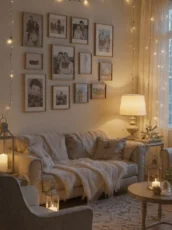A slow, reflective invitation to design for memory, mood, and meaning
Where We Go to Be Still
There is a hush to the spaces we call our own — a kind of emotional architecture that cannot be drawn, only felt.
A room, when shaped with care, becomes more than shelter. It becomes a sanctuary for thought. A landscape of quiet rituals. A place where the mind loosens its grip, where solitude feels like balm.
Especially in small homes, where every inch is deliberate, our surroundings ask us to choose what truly matters. A single bookshelf. A flickering candle. A spill of sunlight across worn floorboards. These small elements — gentle, unassuming — become our grounding points.
A shelving unit, then, is not simply storage. It is a quiet altar of order. A spine of stillness. A way to anchor memory and soften the visual hum of daily life.
Soft Light and Solitude
Light is the first storyteller.
Before choosing where a shelf might sit, watch how light moves through the room. Let it guide you. Floating wooden planks near a window can catch late-afternoon sun, making book spines glow like old wine. Dappled or ribbed glass can diffuse harsh rays, turning a simple corner into a watercolor reverie.
Pair a tall shelf with a reading chair — something linen-clad in sage or soft dove grey. Add a slim table for a single cup of tea, a dog-eared notebook, or nothing at all.
This is a nook for drifting, not doing. A pause carved into space. A hush you can enter.
Furniture With Memory
Let your shelving hold more than objects — let it hold story.
Weathered wood, gently bowed with age, carries warmth you can’t buy. An antique cabinet, refitted with modern brackets. A narrow ladder turned vertical shelf. These aren’t just design choices. They are gestures toward memory. Toward continuity.
Efficient shelving in small spaces doesn’t have to look utilitarian. Stack crates. Use slender vertical units between windows. Tuck shelves beneath stairs. Let your solutions feel soulful — like they grew with the house, not against it.
And don’t just store books. Let each shelf contain moments: a matchbox from a rainy trip. A smooth stone. A framed letter. The past can be held in quiet ways.
Textures That Breathe
Every room inhales and exhales through texture.
Linen curtains that catch the breeze. An old stool softened by wool throws. The way a ceramic vase’s matte surface catches the light. These elements speak without sound. And they soothe.
Books themselves are tactile — their cracked spines, their whispering pages. Don’t over-style them. Let them lean. Let them rest in imperfect stacks beside a candle or a glass bottle filled with dried grass.
Let color echo texture. Sage, dove, ecru, chalk, muted blush. These are hues that recede gently into the background, allowing your thoughts to come forward. A palette designed not to impress, but to embrace.
The Scent of Stillness
Design is not only seen — it is felt through the other senses.
Even a single shelf, if placed with intention, can become a small ritual. The cookbook shelf near the stove. The poetry shelf by the bed. A tiny display of incense, dried lavender, or beeswax taper candles beside a stack of art books.
These are mental corners — places not large in size, but large in feeling. A curtained window with a shelf of handwritten letters. A hallway alcove with nothing but a vase and a dim lamp. Emotional reset points.
Let the room smell like calm. Cedarwood, bergamot, fig leaf. Use scent as architecture. Let it drift and settle and say softly: you’re home now.
Designing for Feeling, Not Perfection
There is no final arrangement. No finished form.
Let your shelves evolve. Sometimes spare. Sometimes full. Sometimes chaotic with new pages and old dust. That’s not failure — it’s life.
To shape a home library is to express how your mind wants to rest. Not to impress. Not to prove anything. But to return — again and again — to the quiet rhythm of your own presence.
This isn’t about building a perfect space.
It’s about building a kind one.
One that forgives the mess. One that celebrates the pause. One where, on an ordinary afternoon, you reach for a book, light a candle, and remember: beauty lives in the soft, still details.
And you made room for it.
